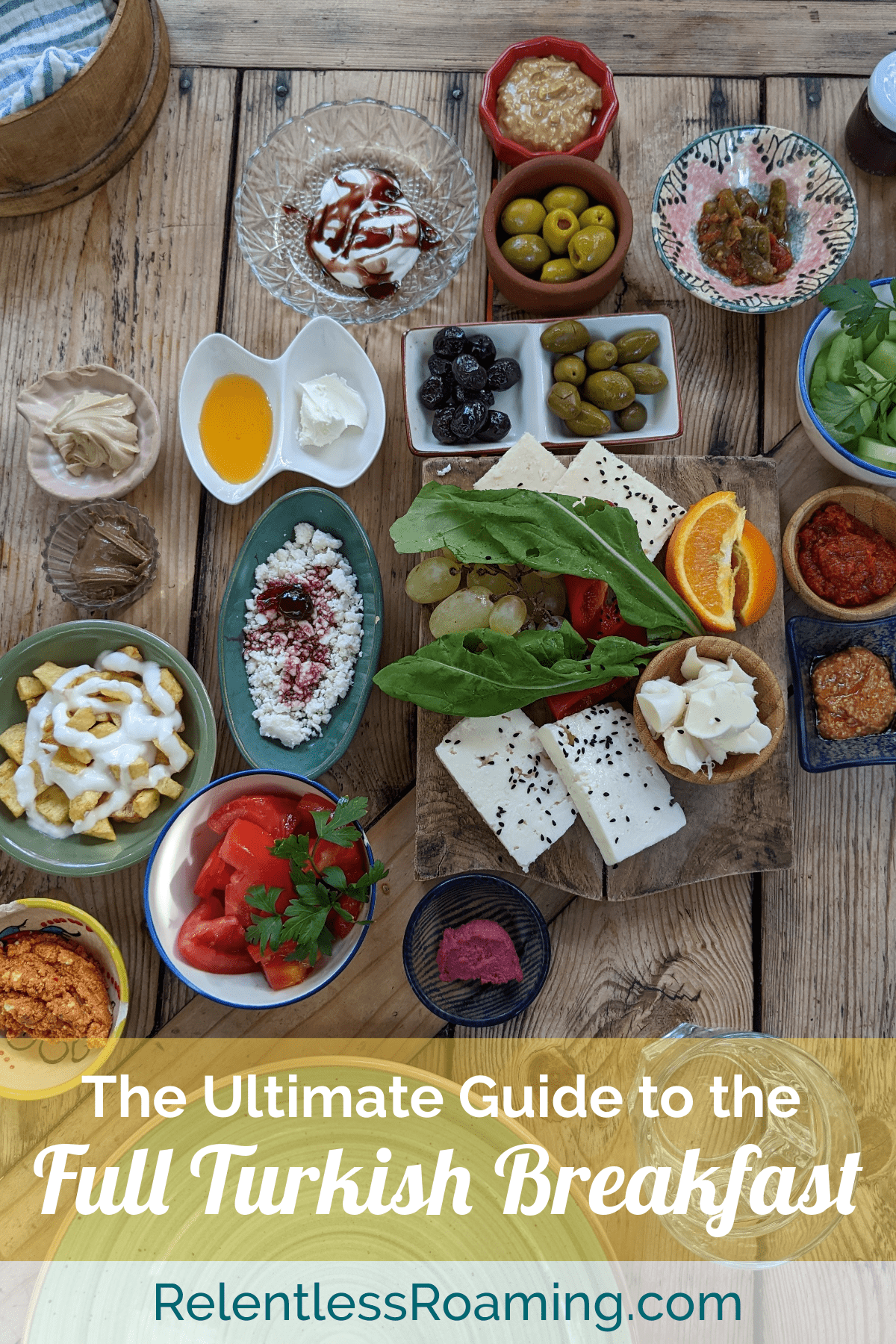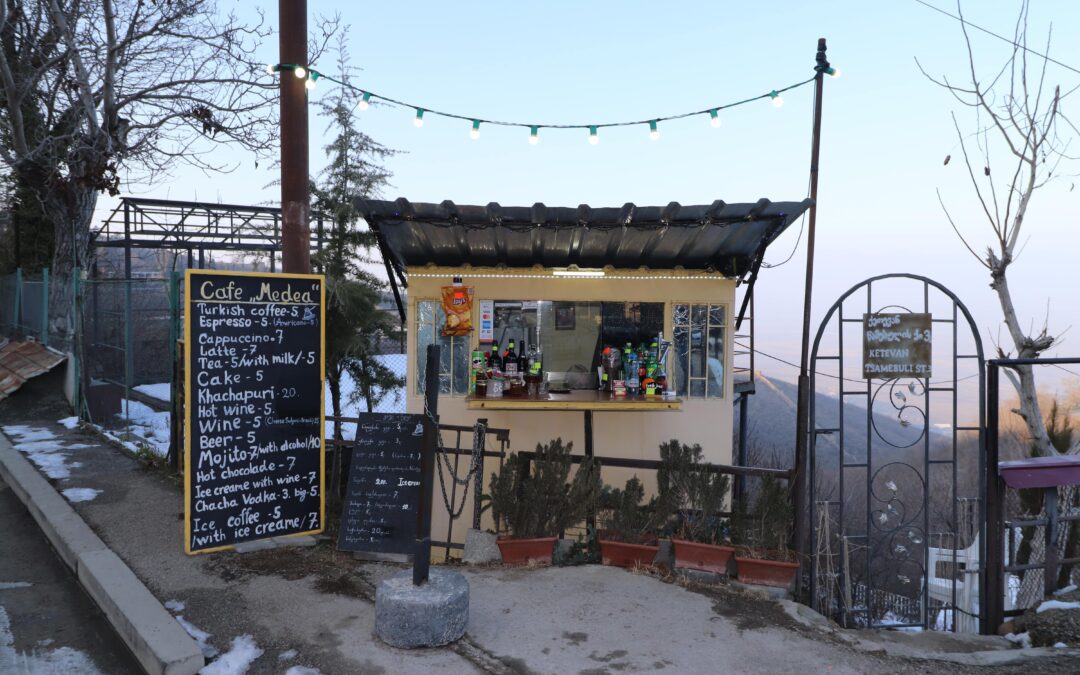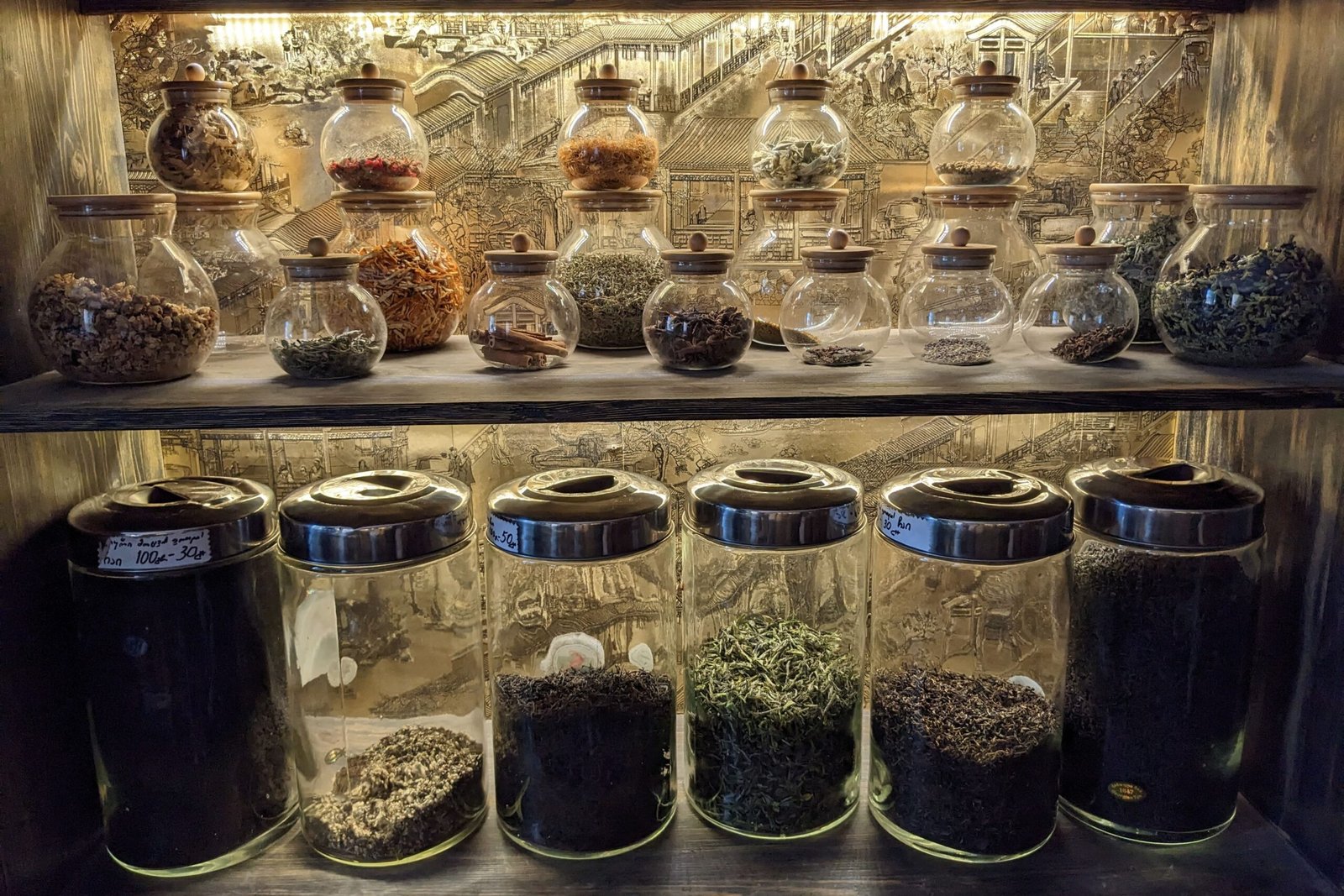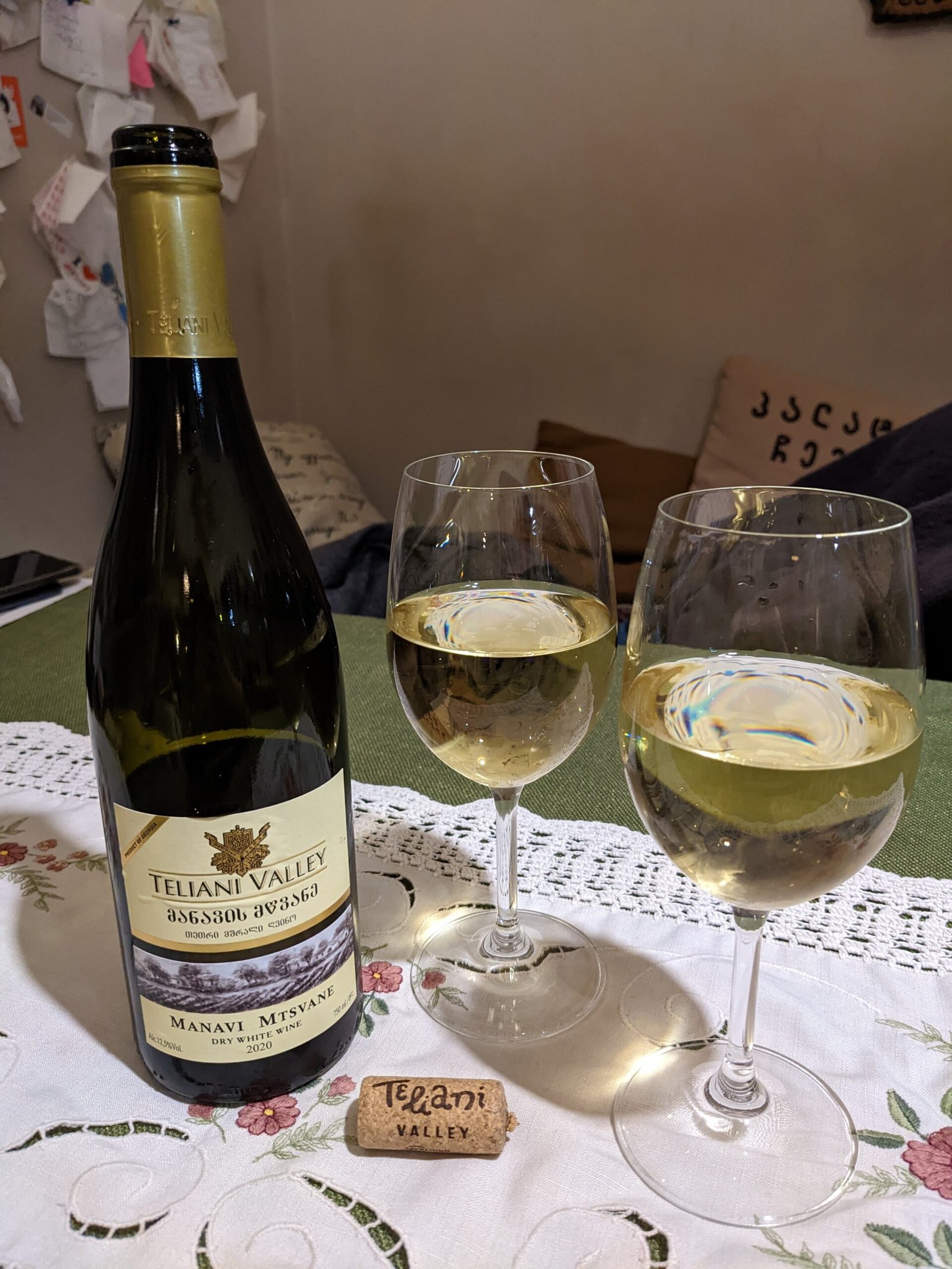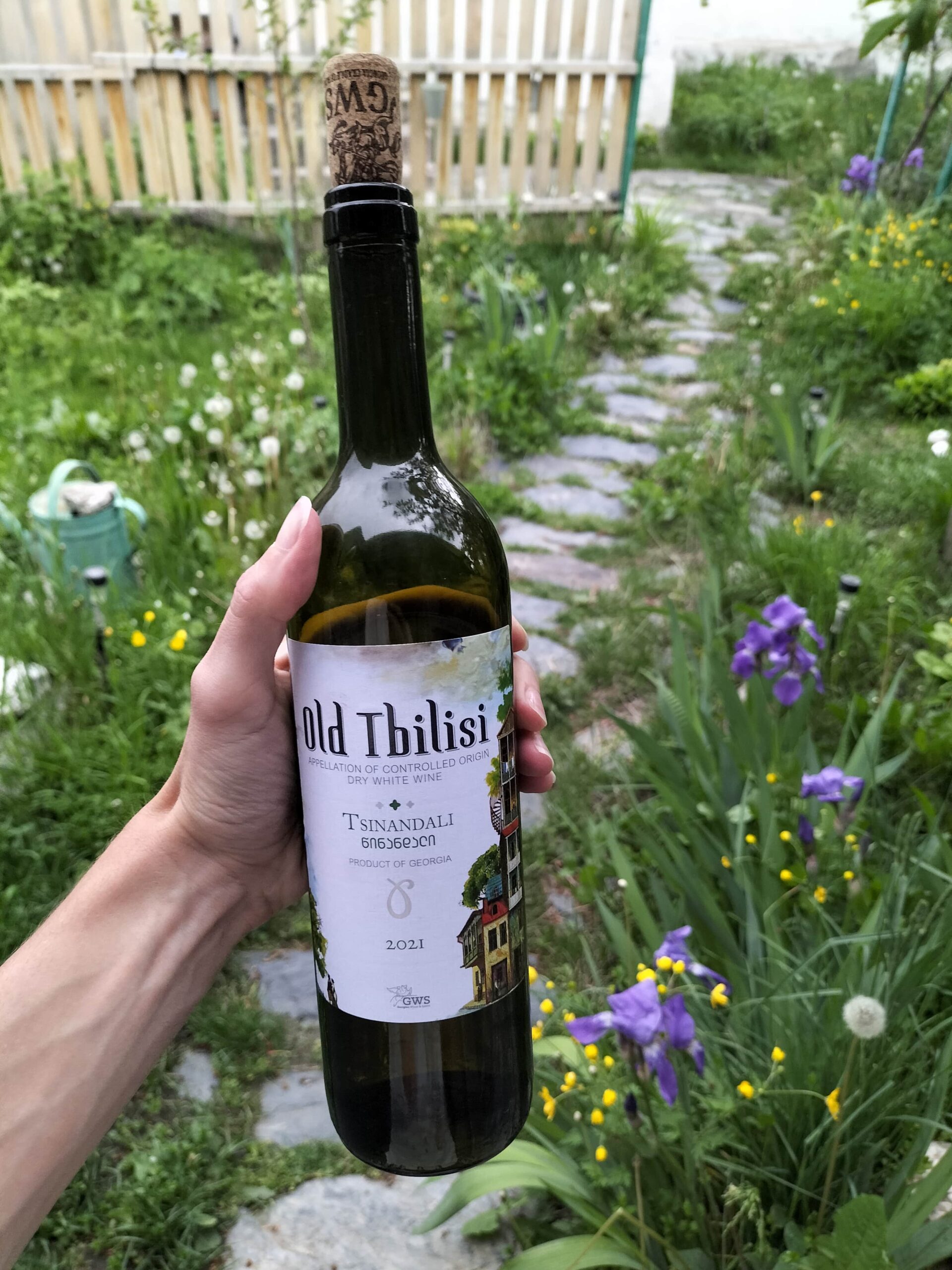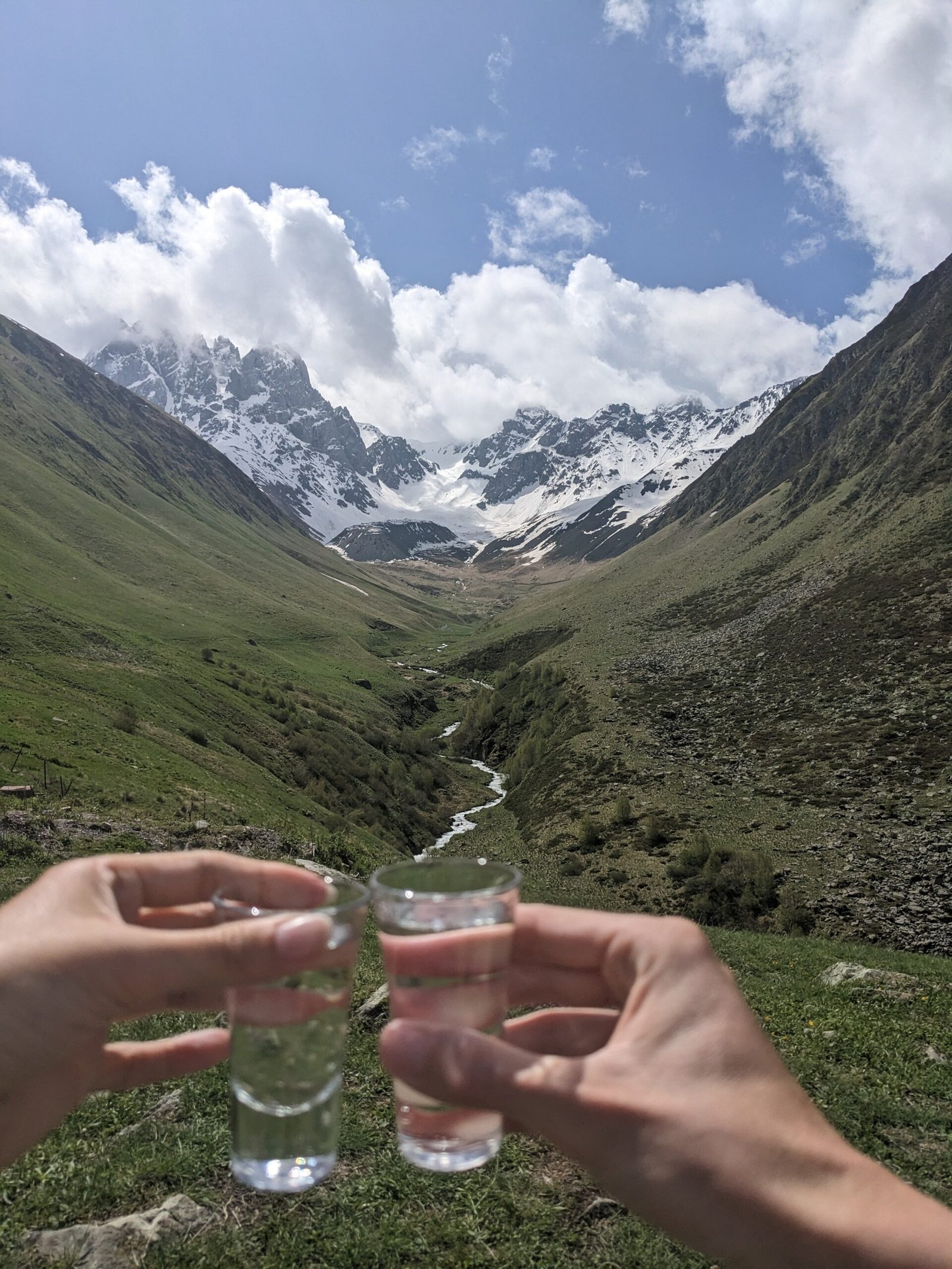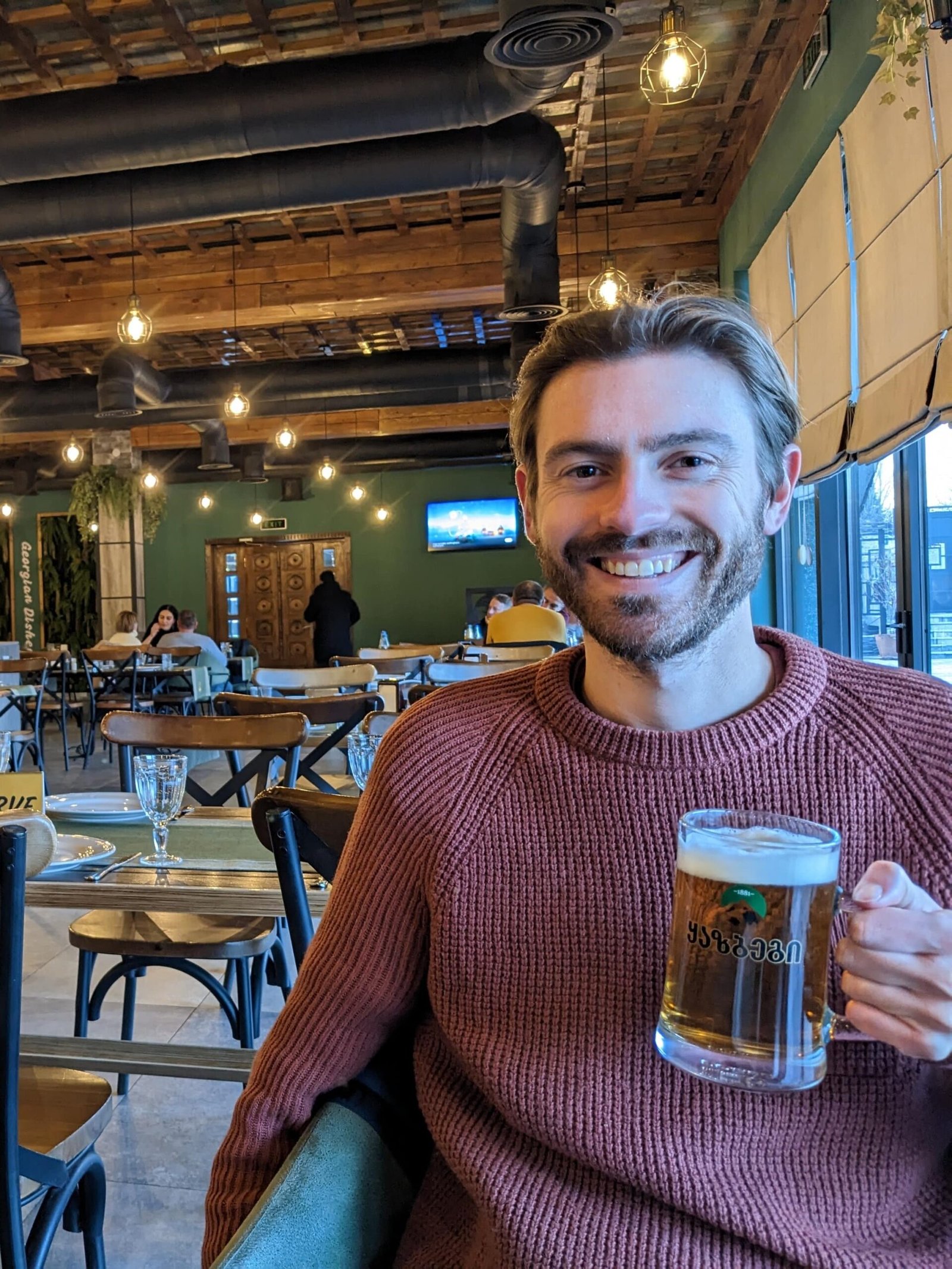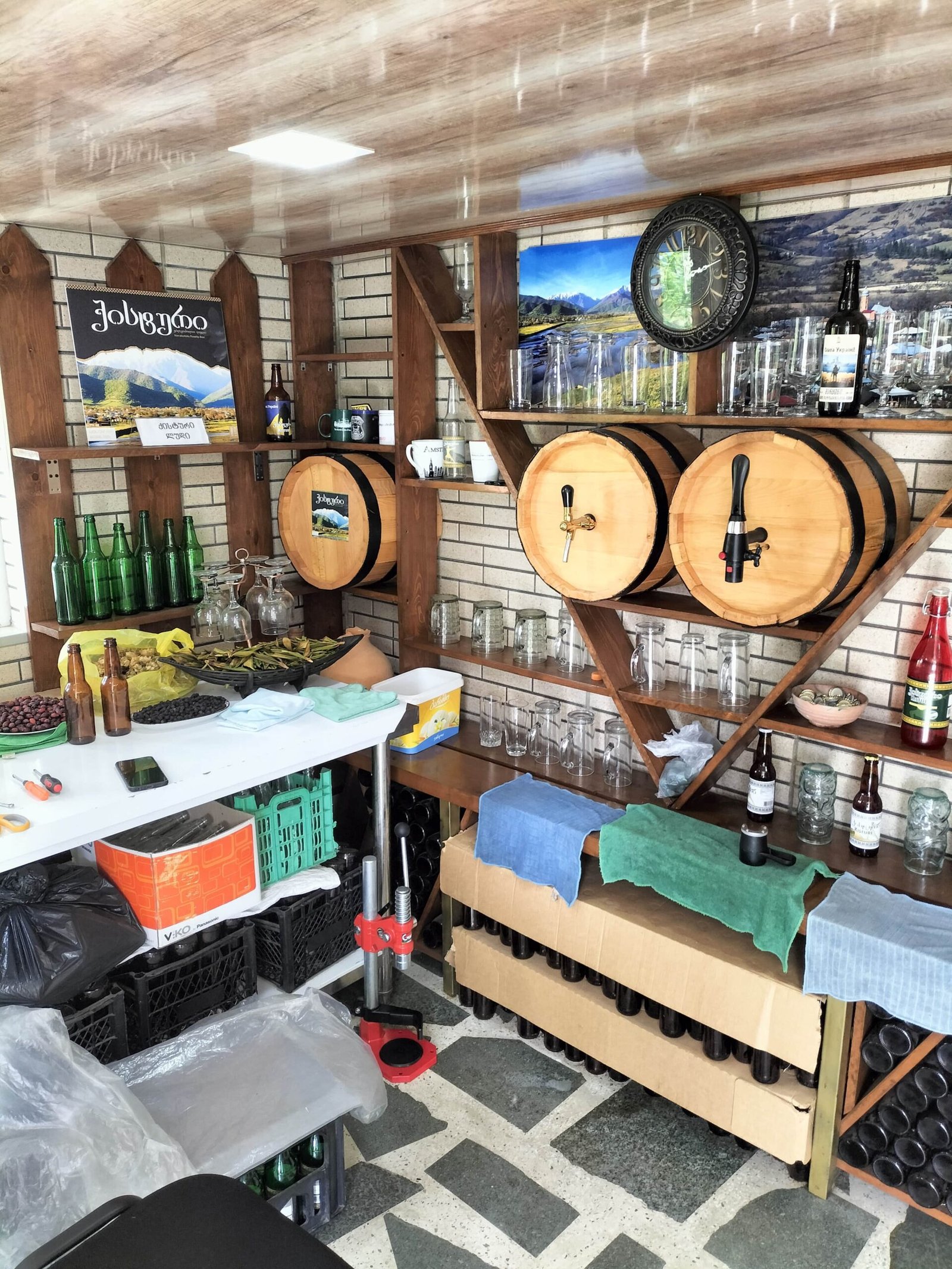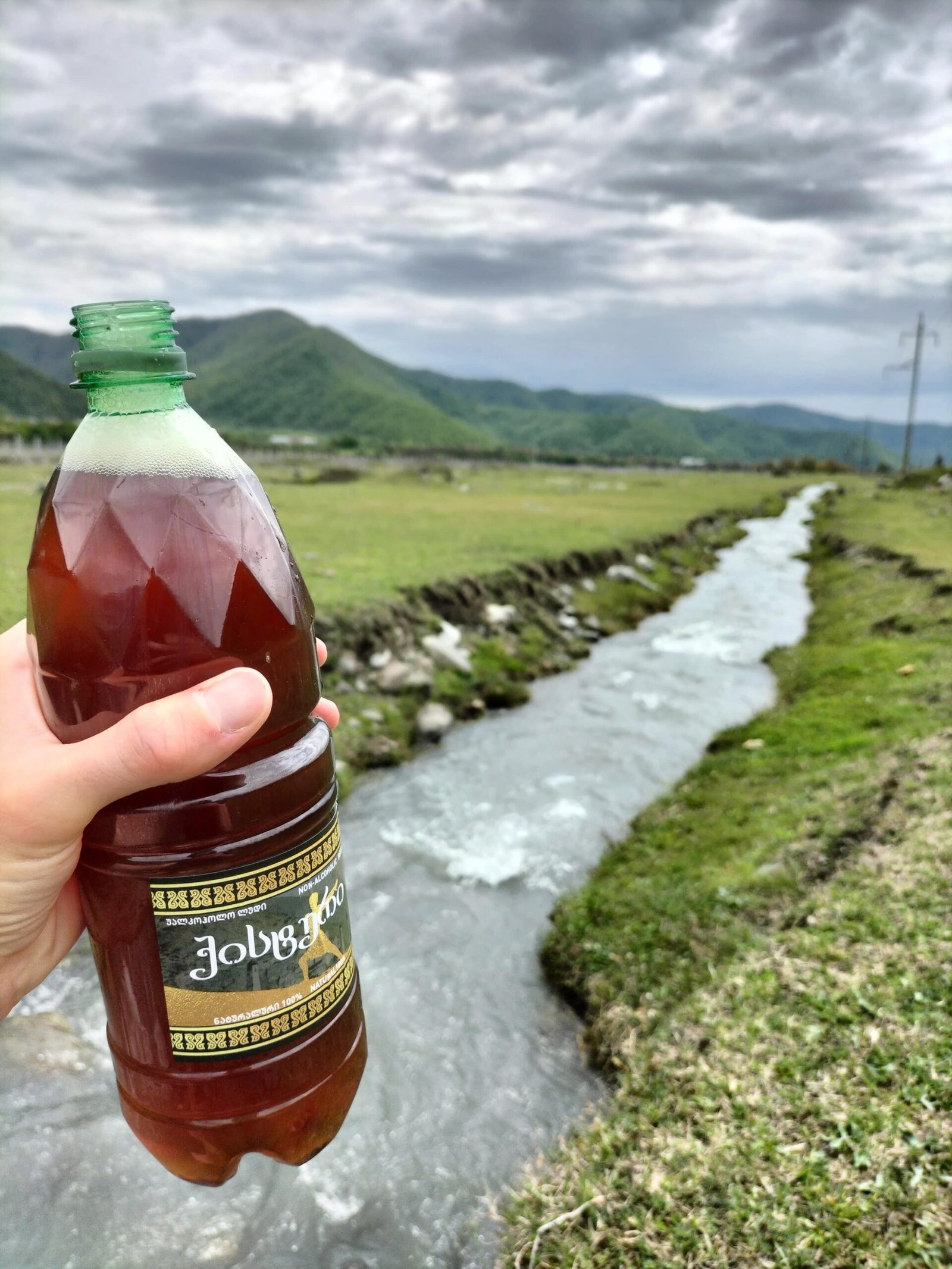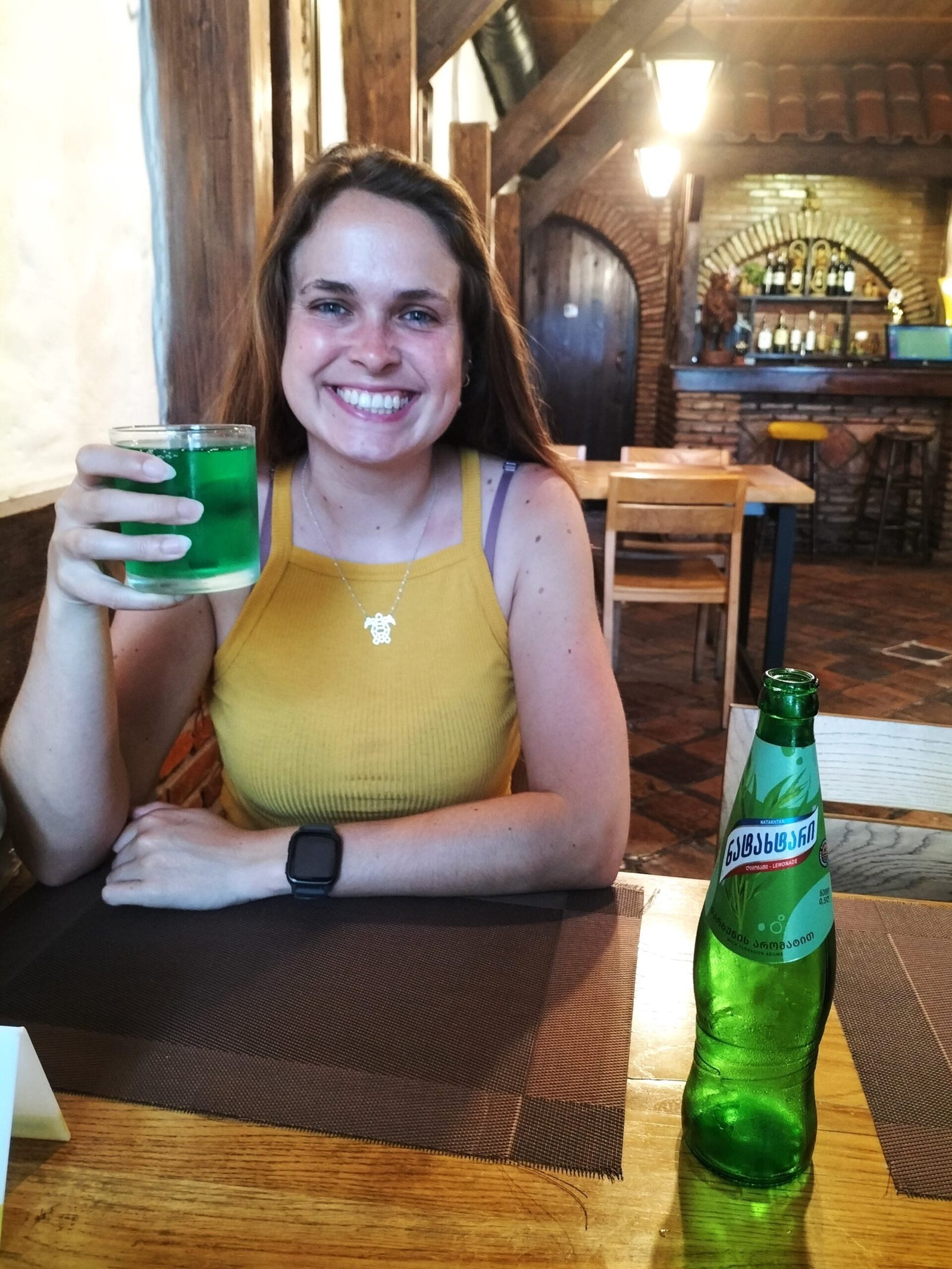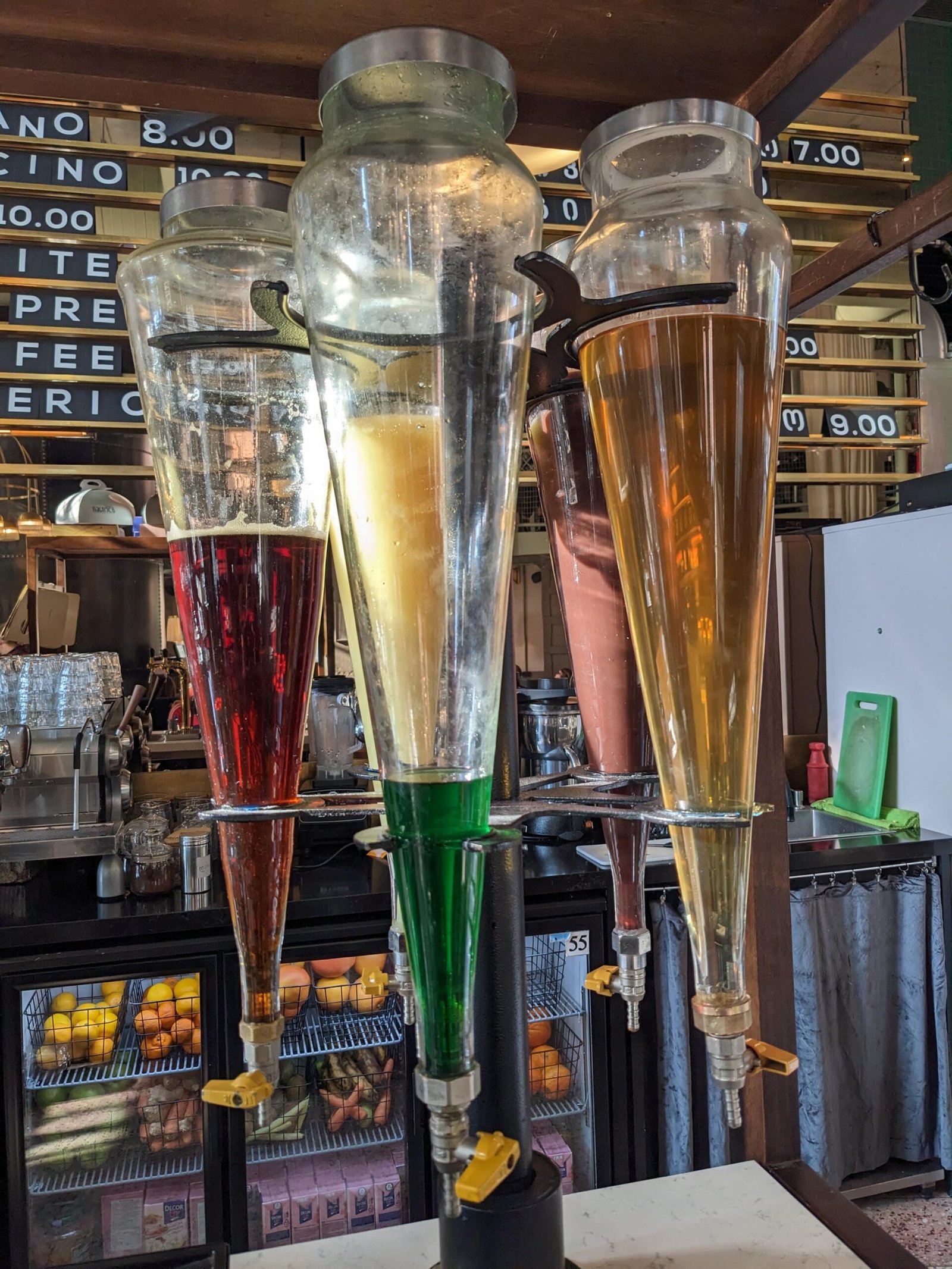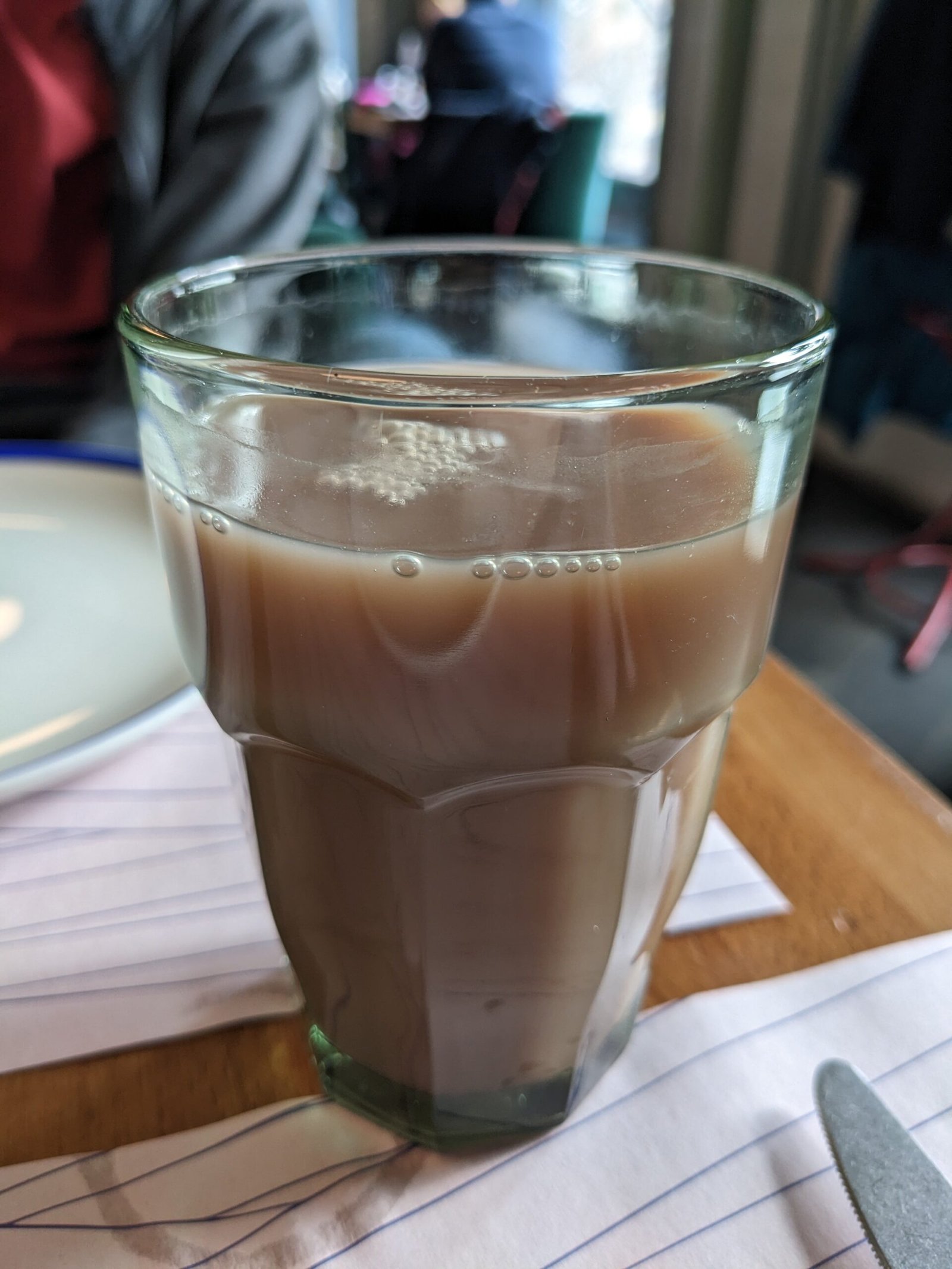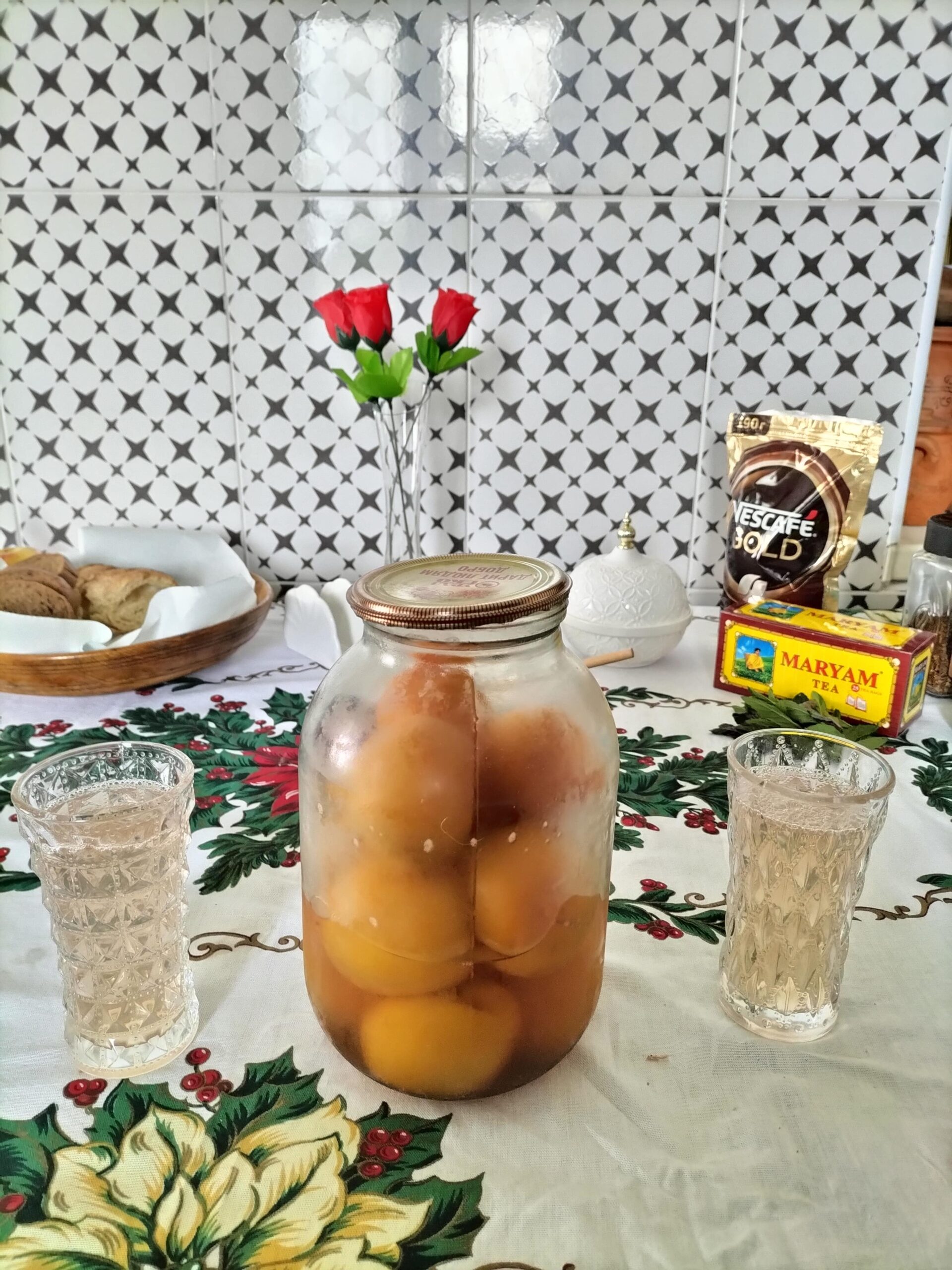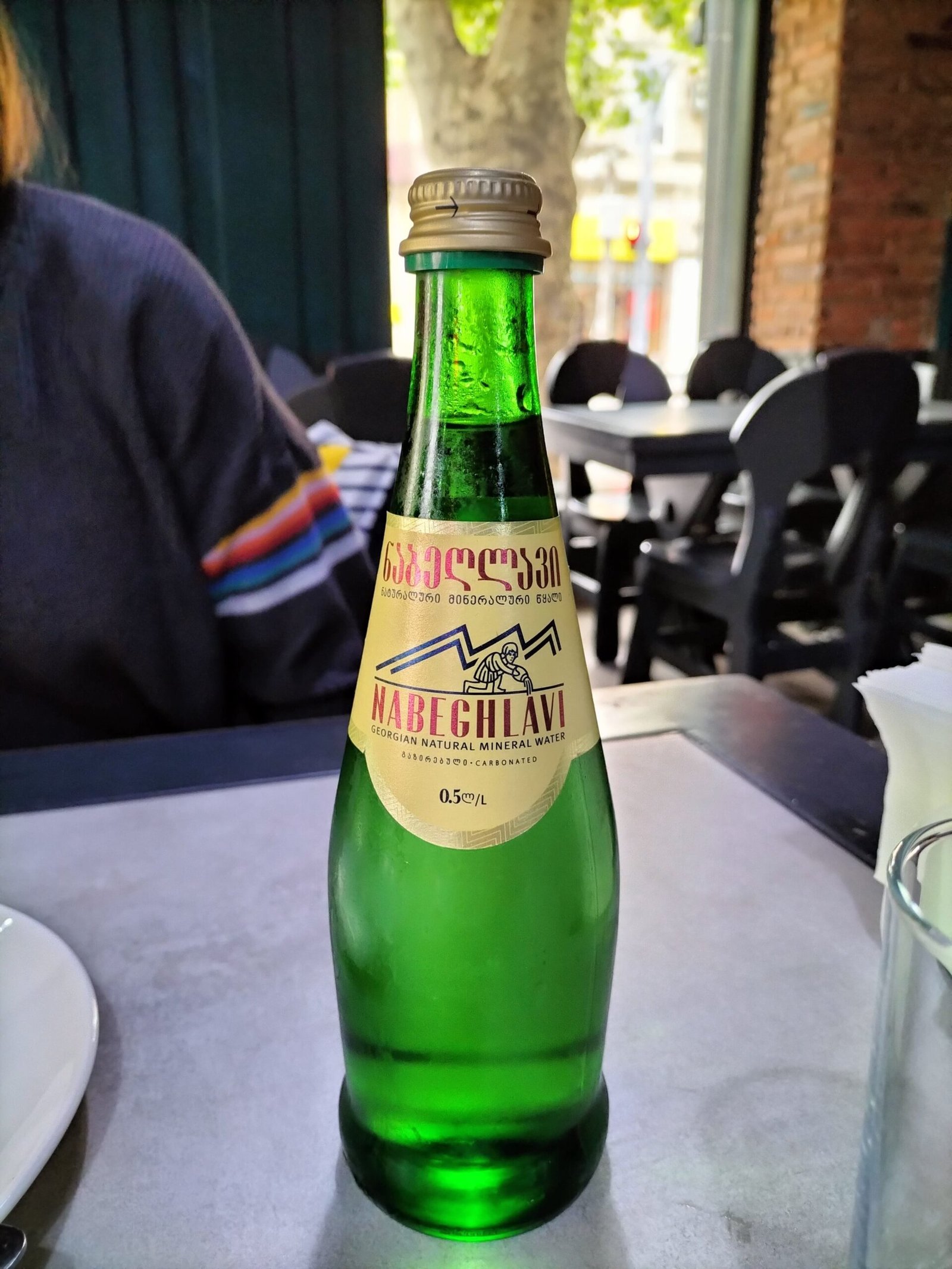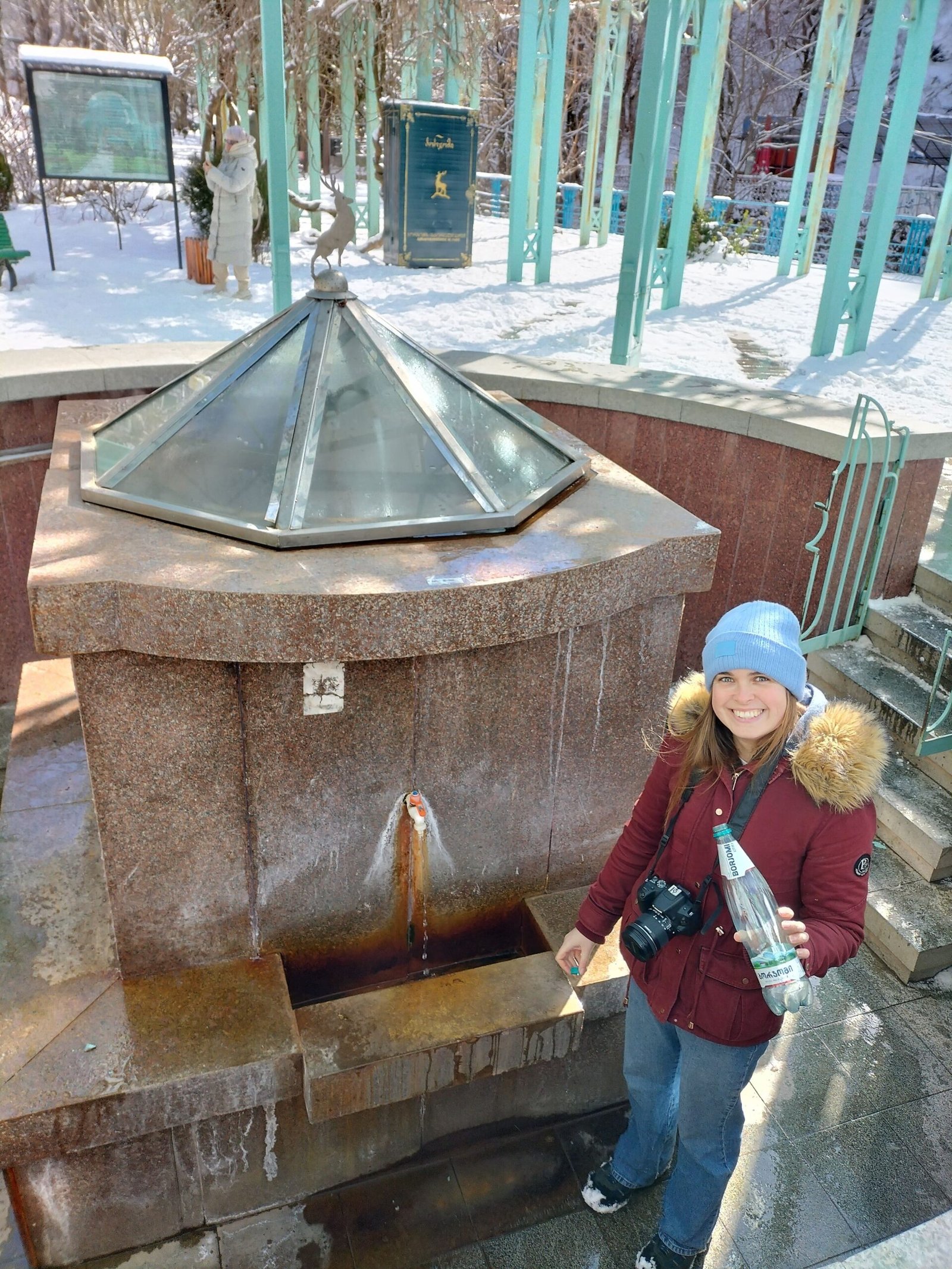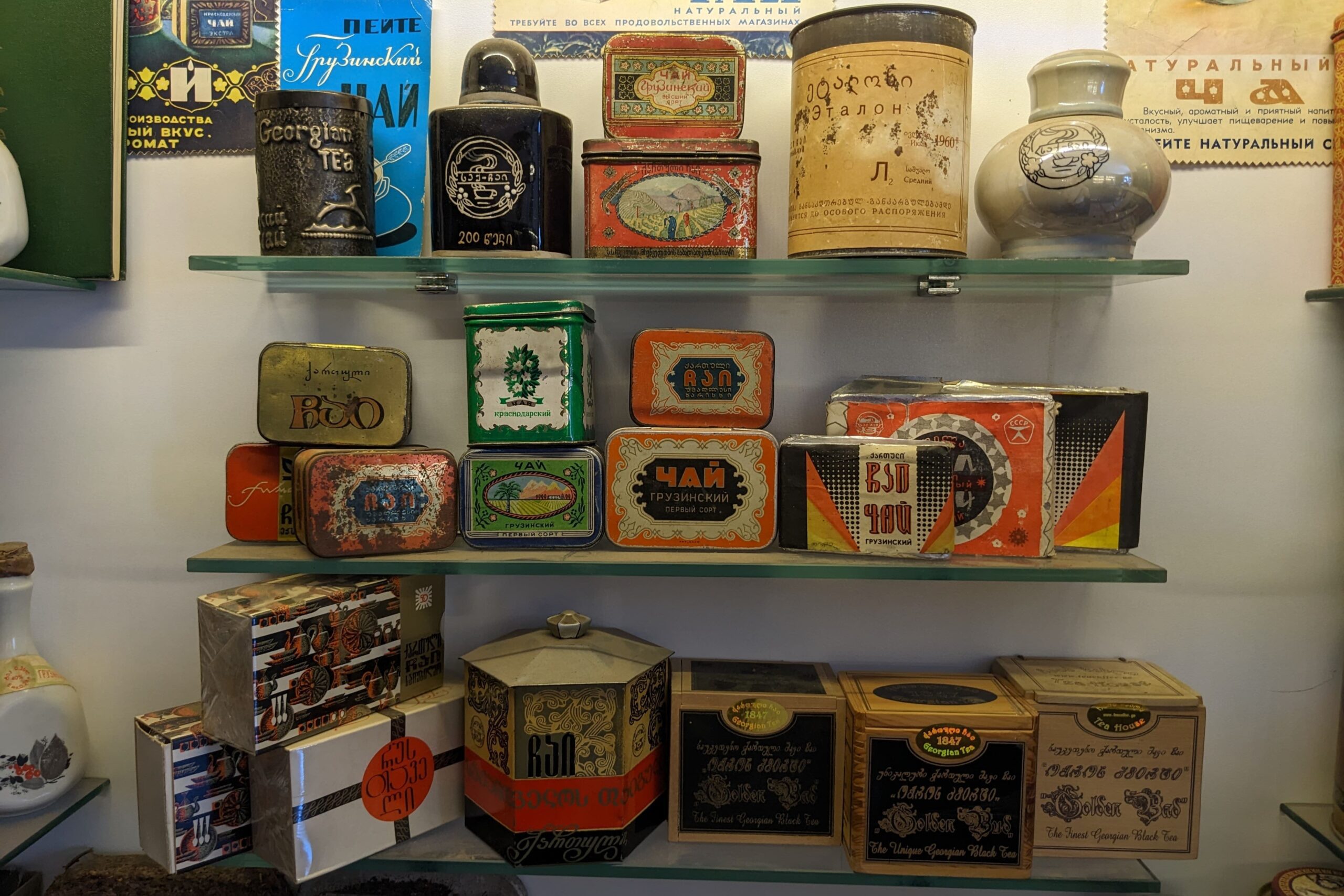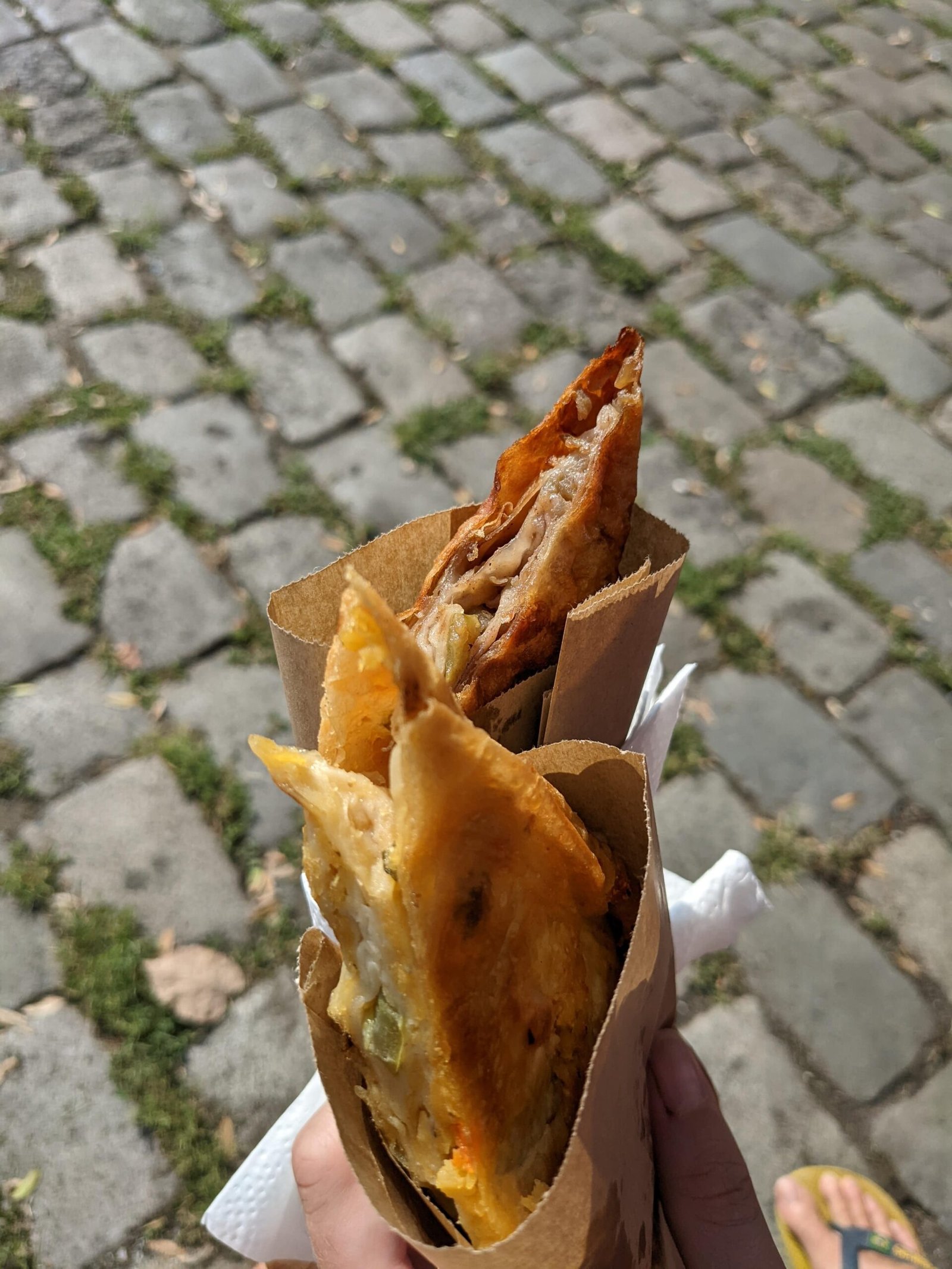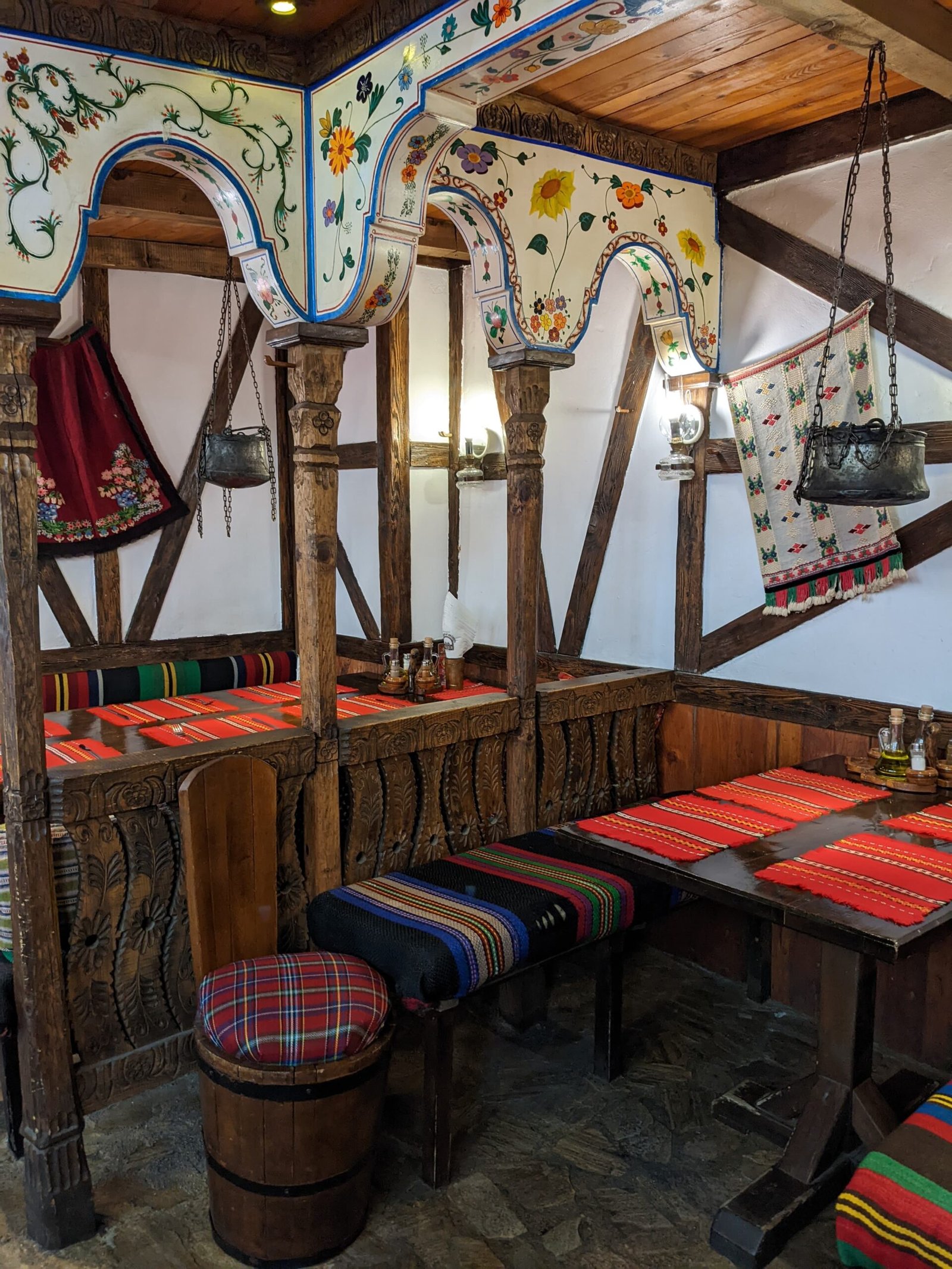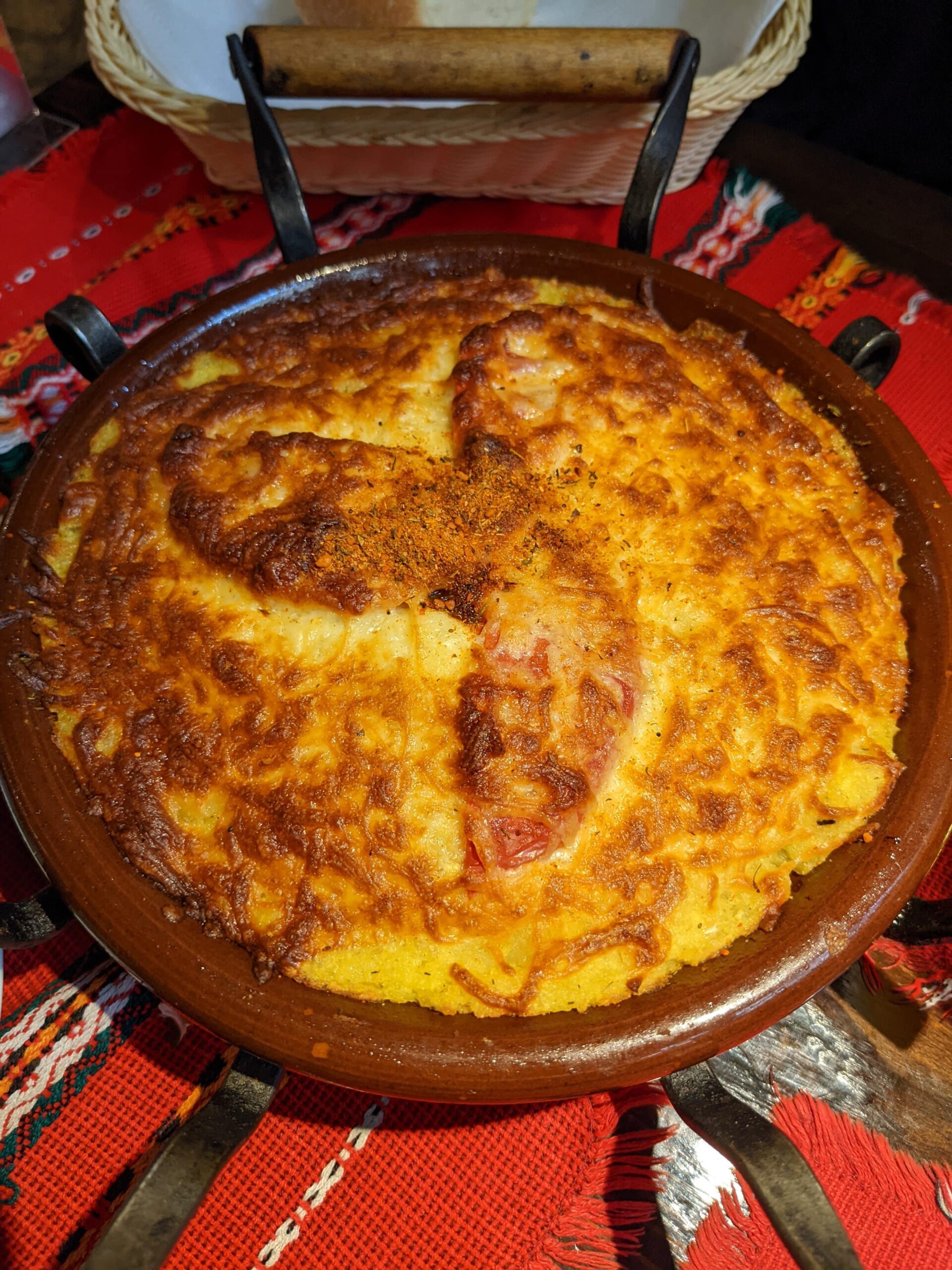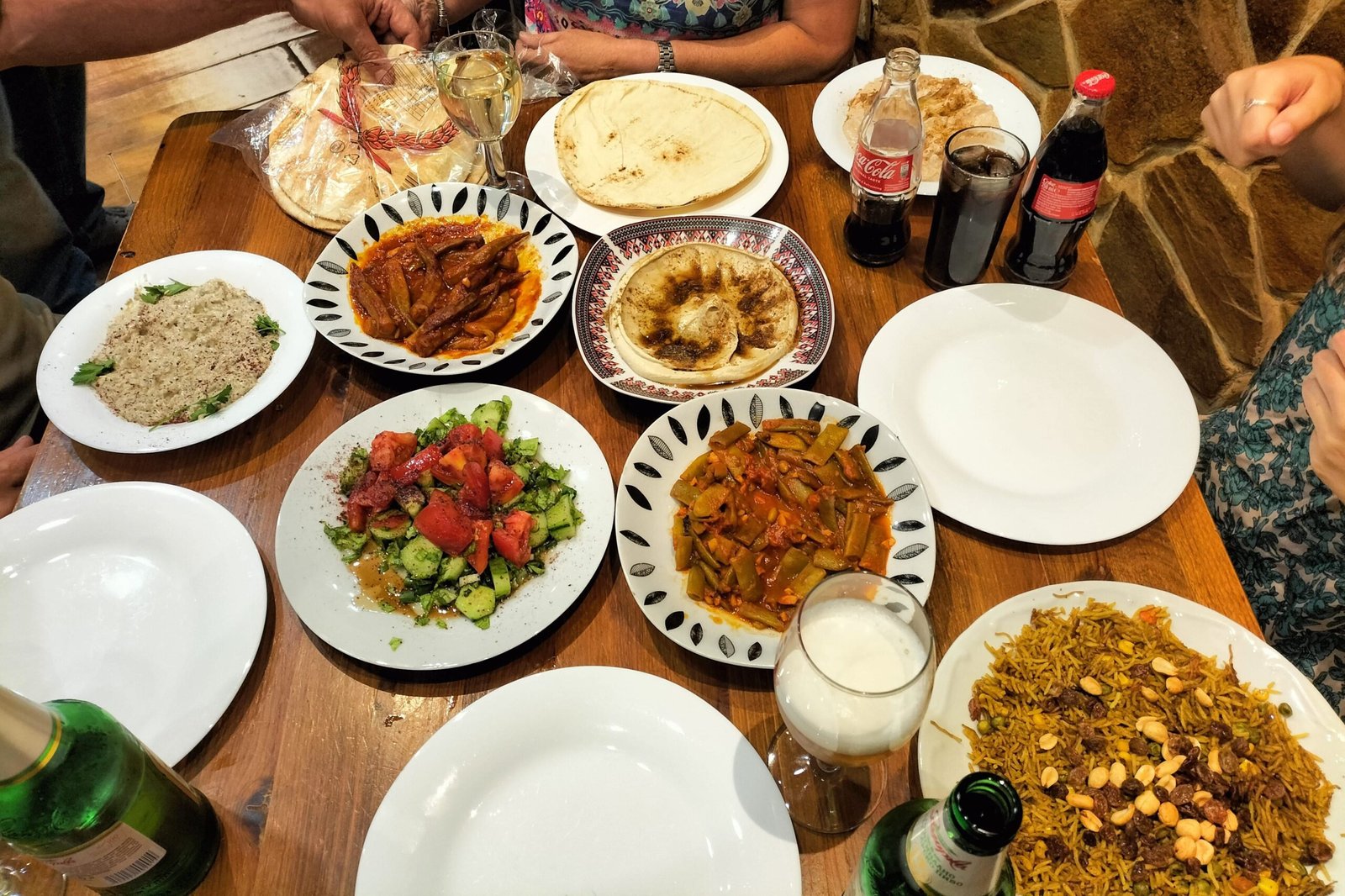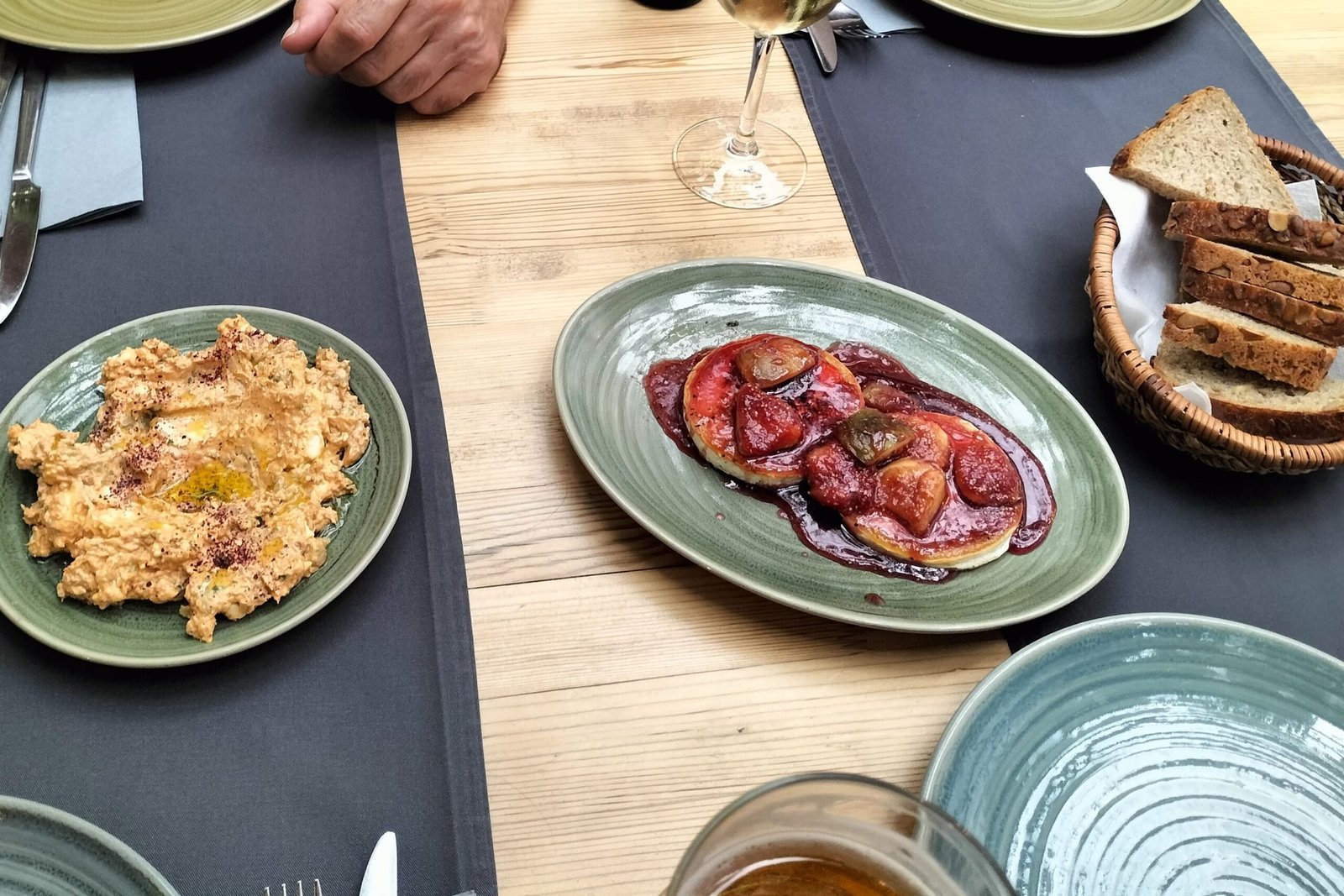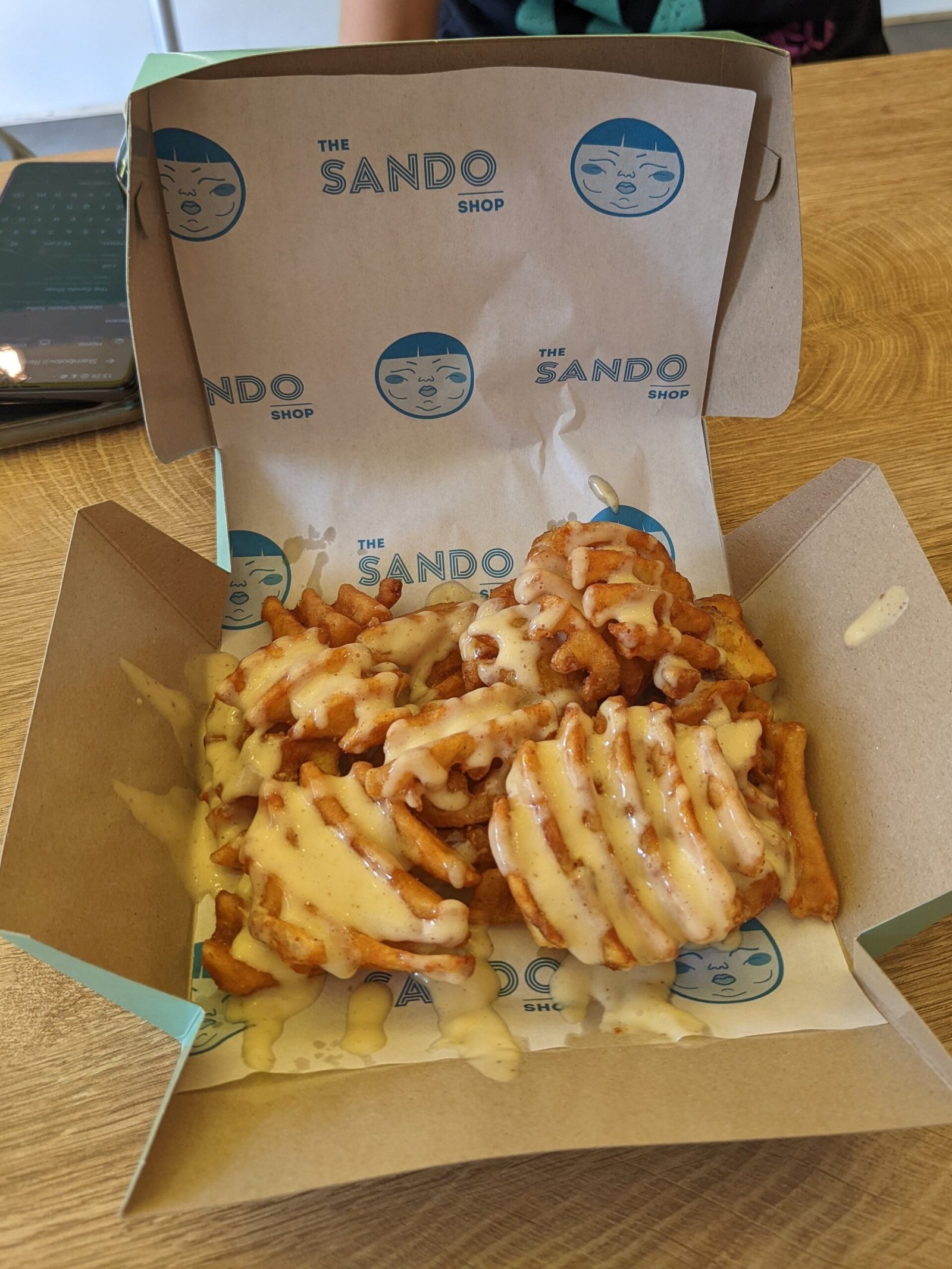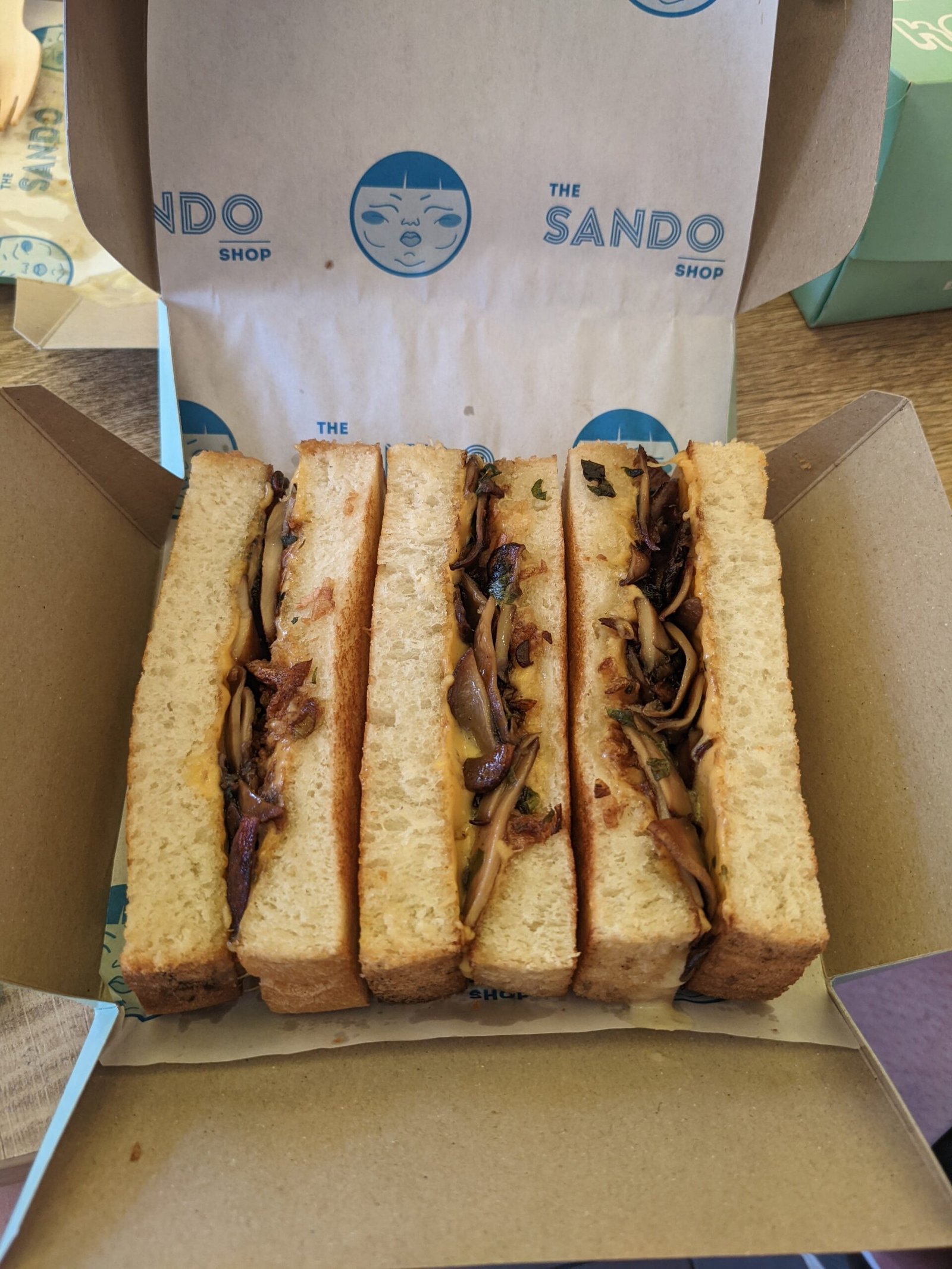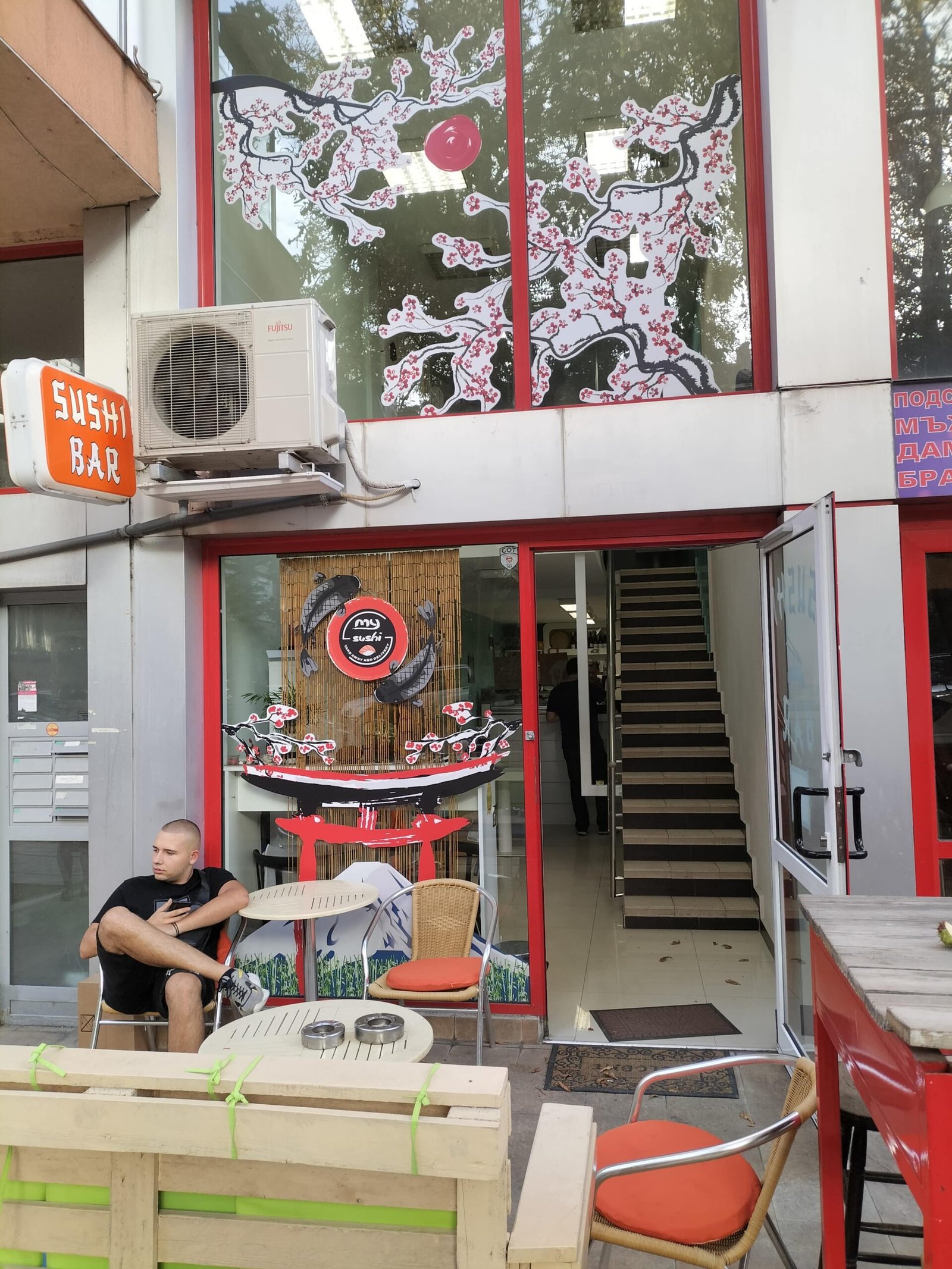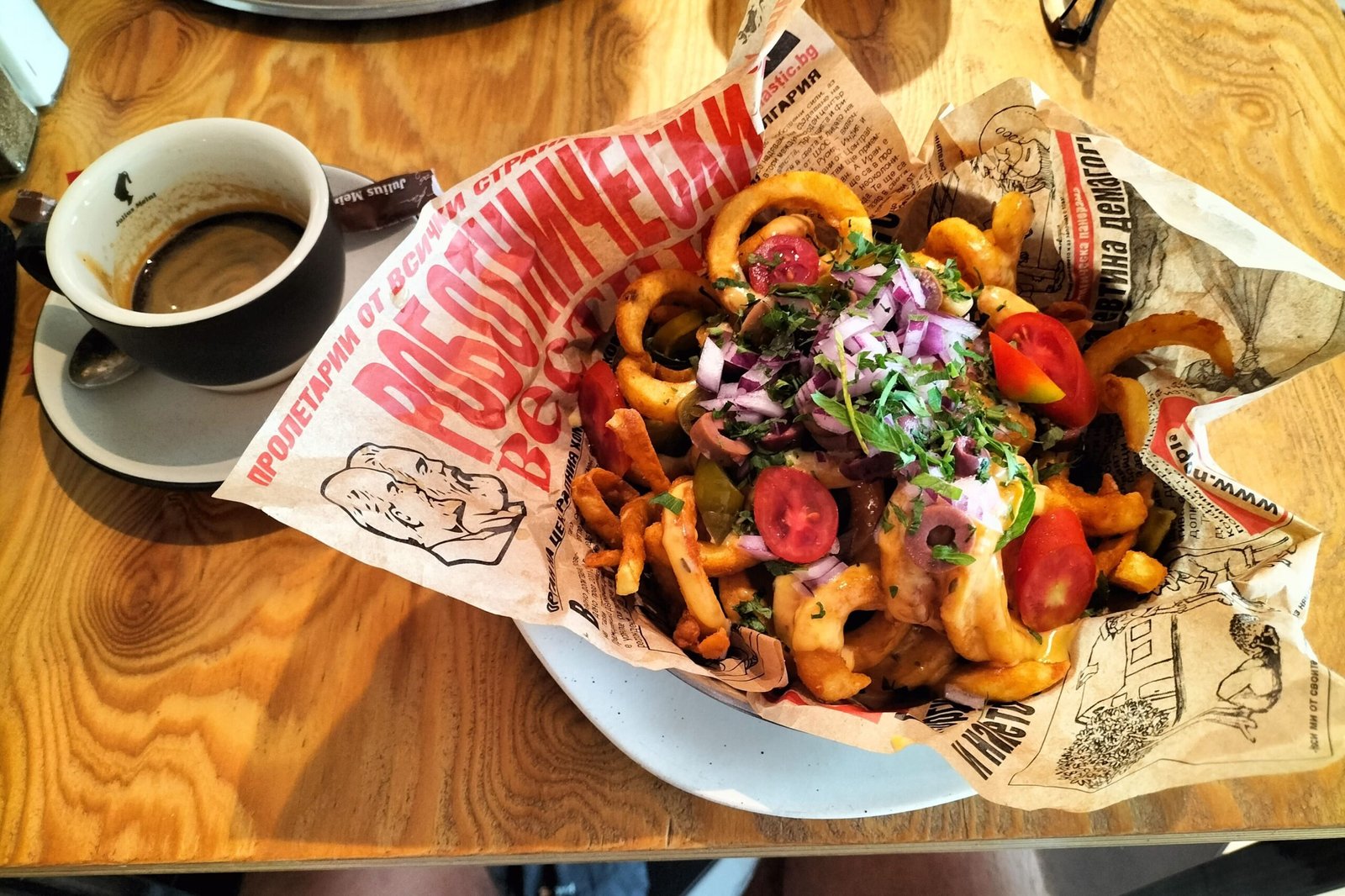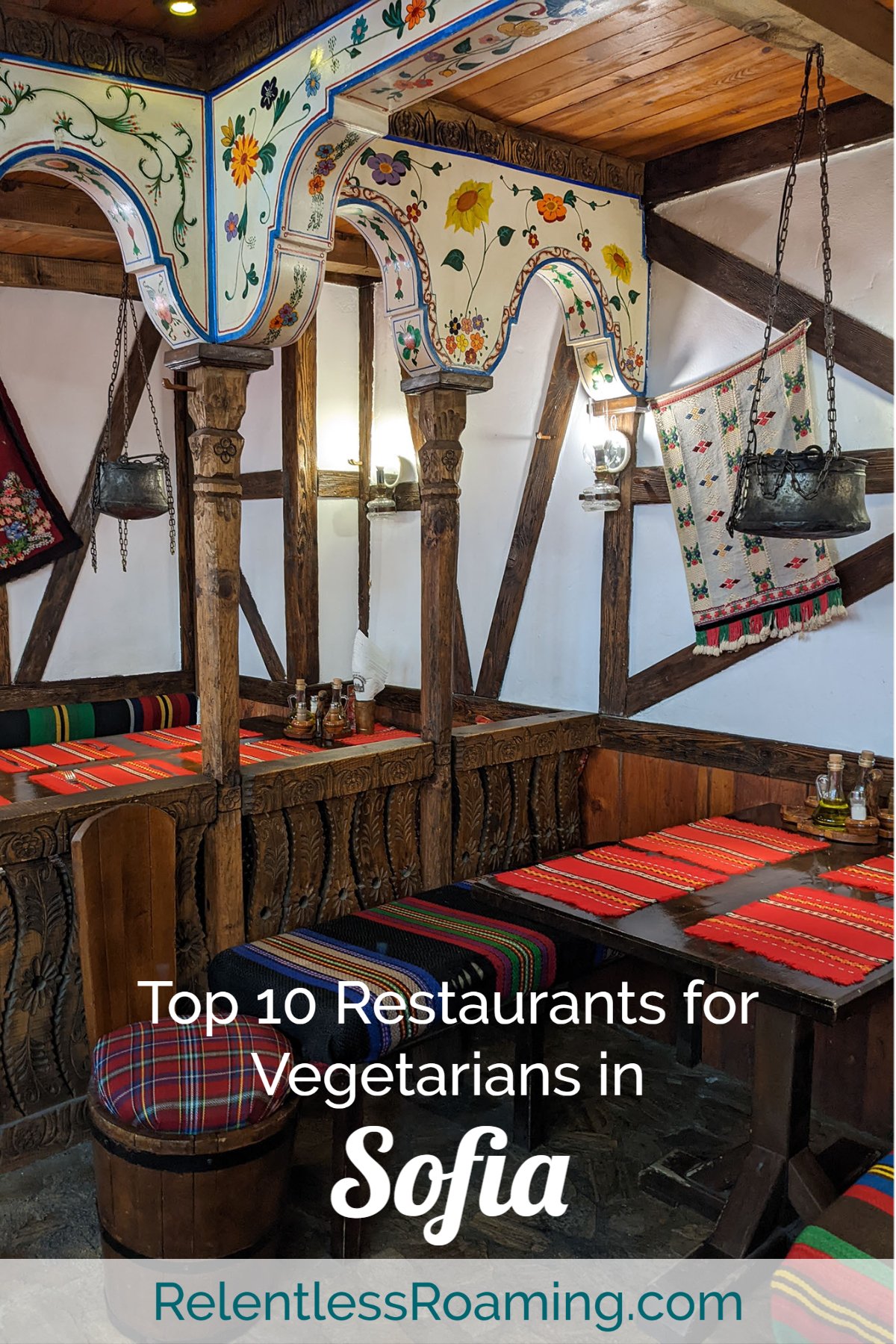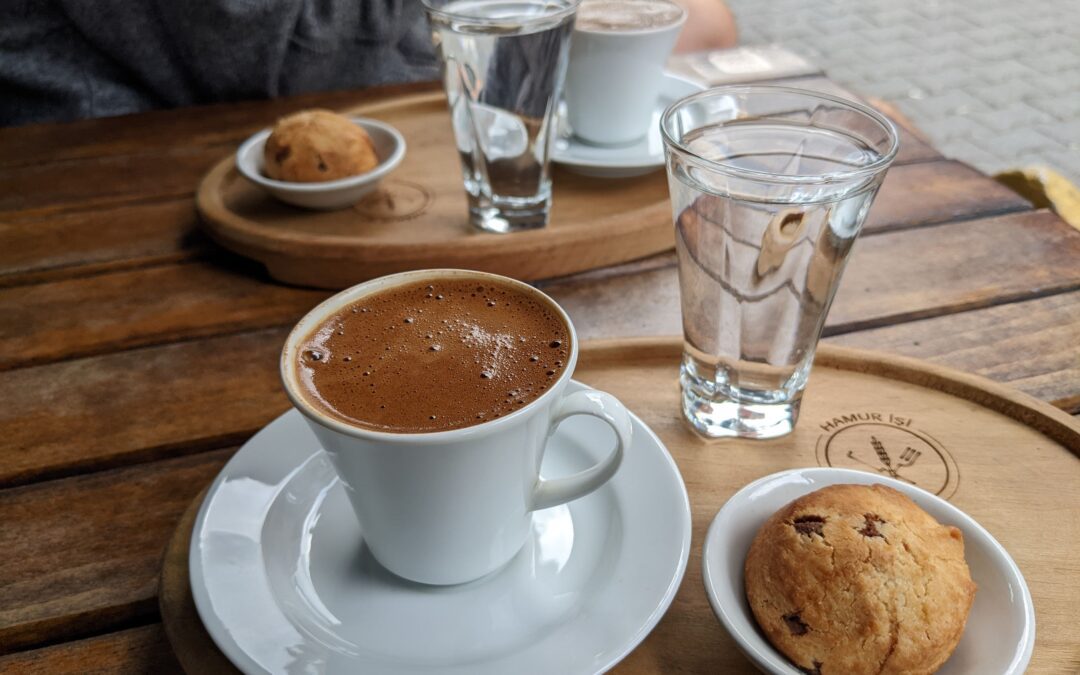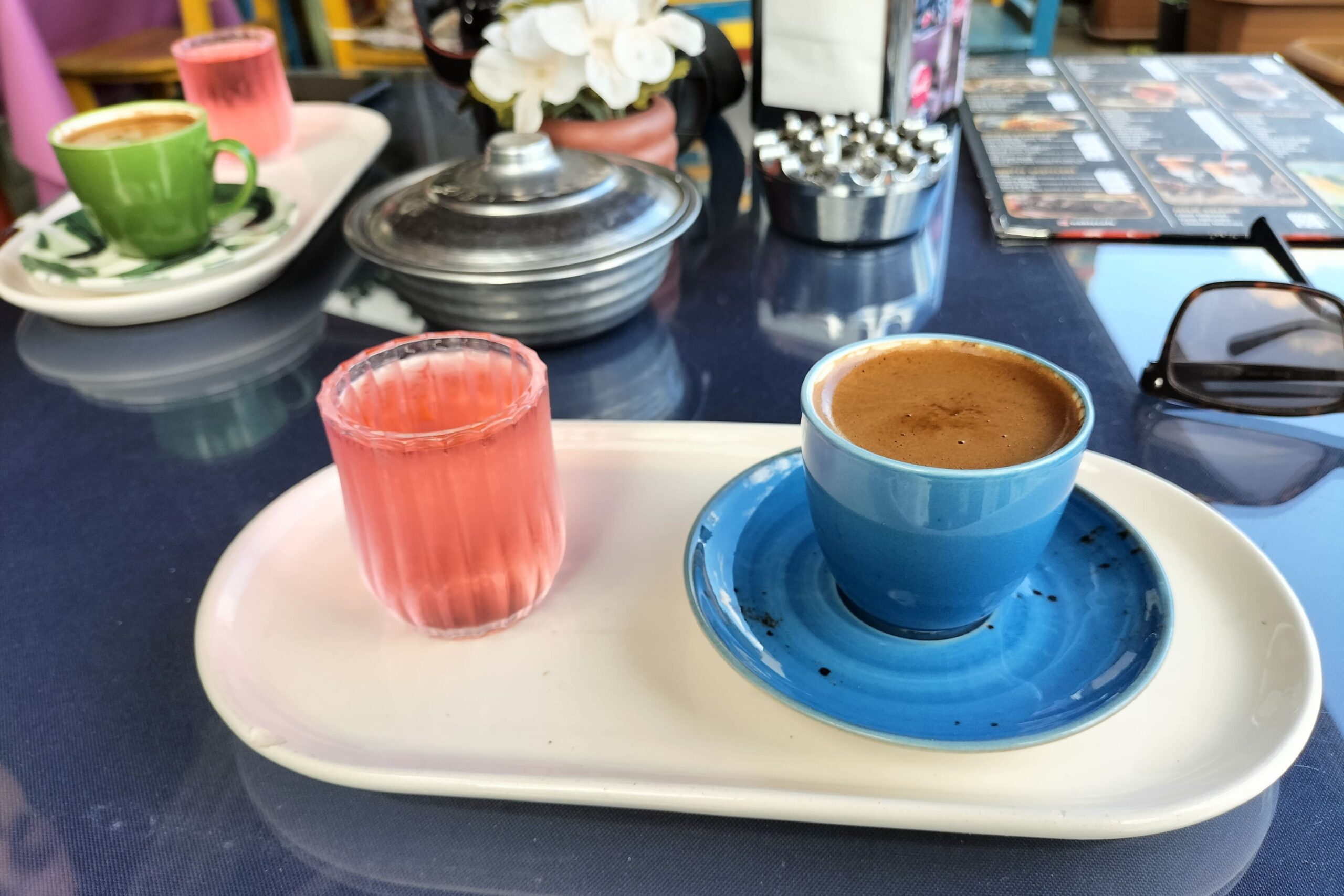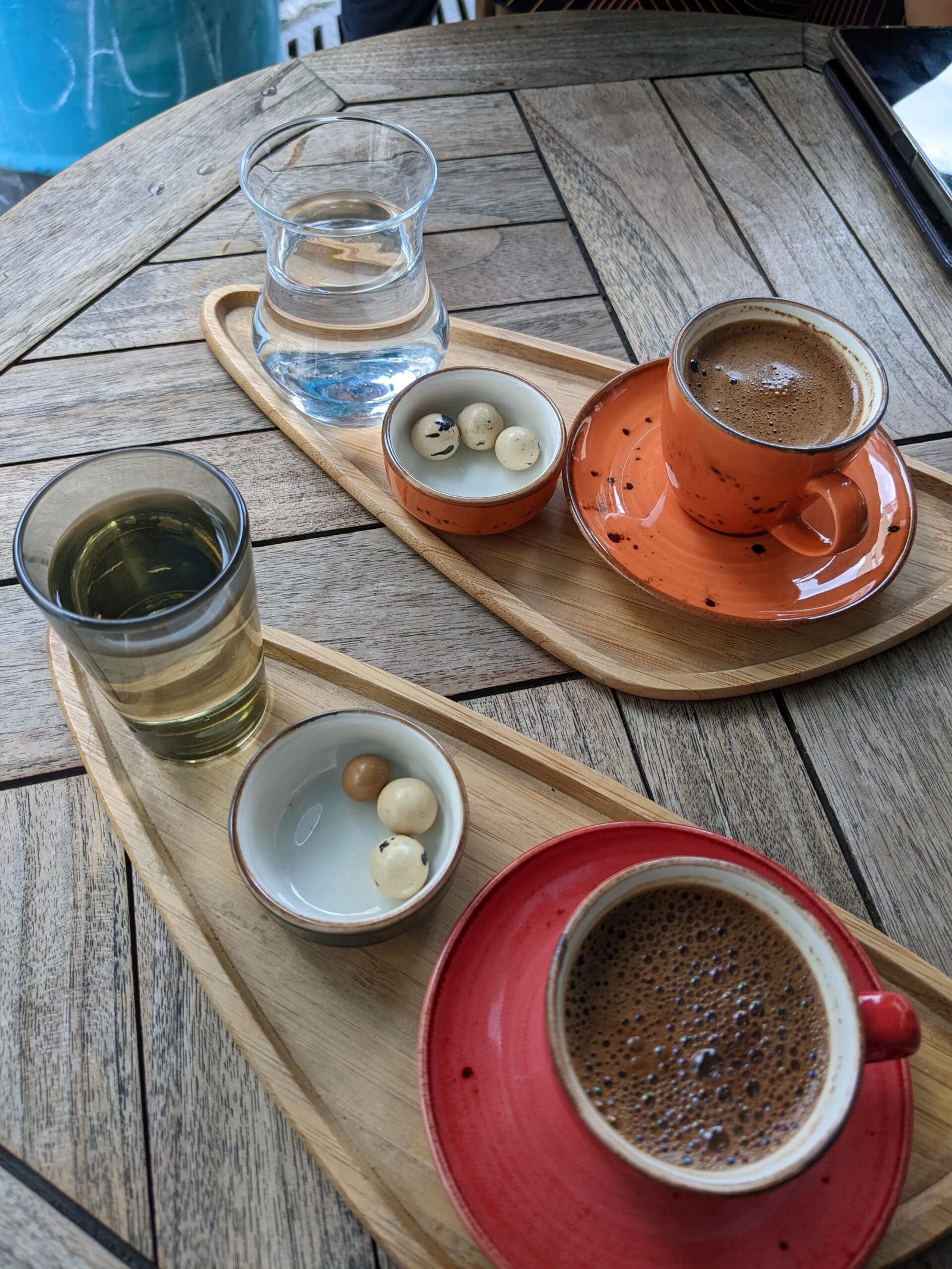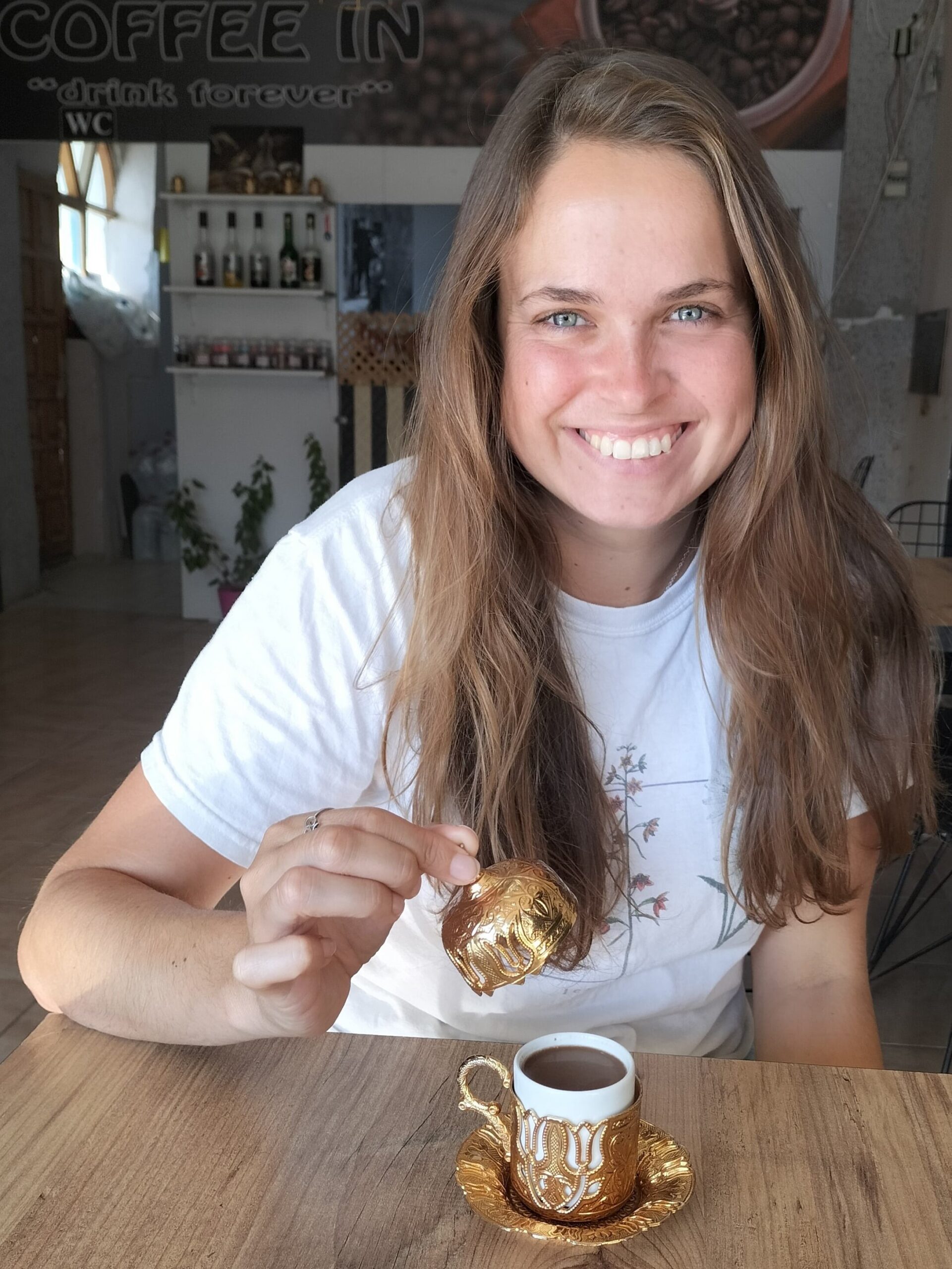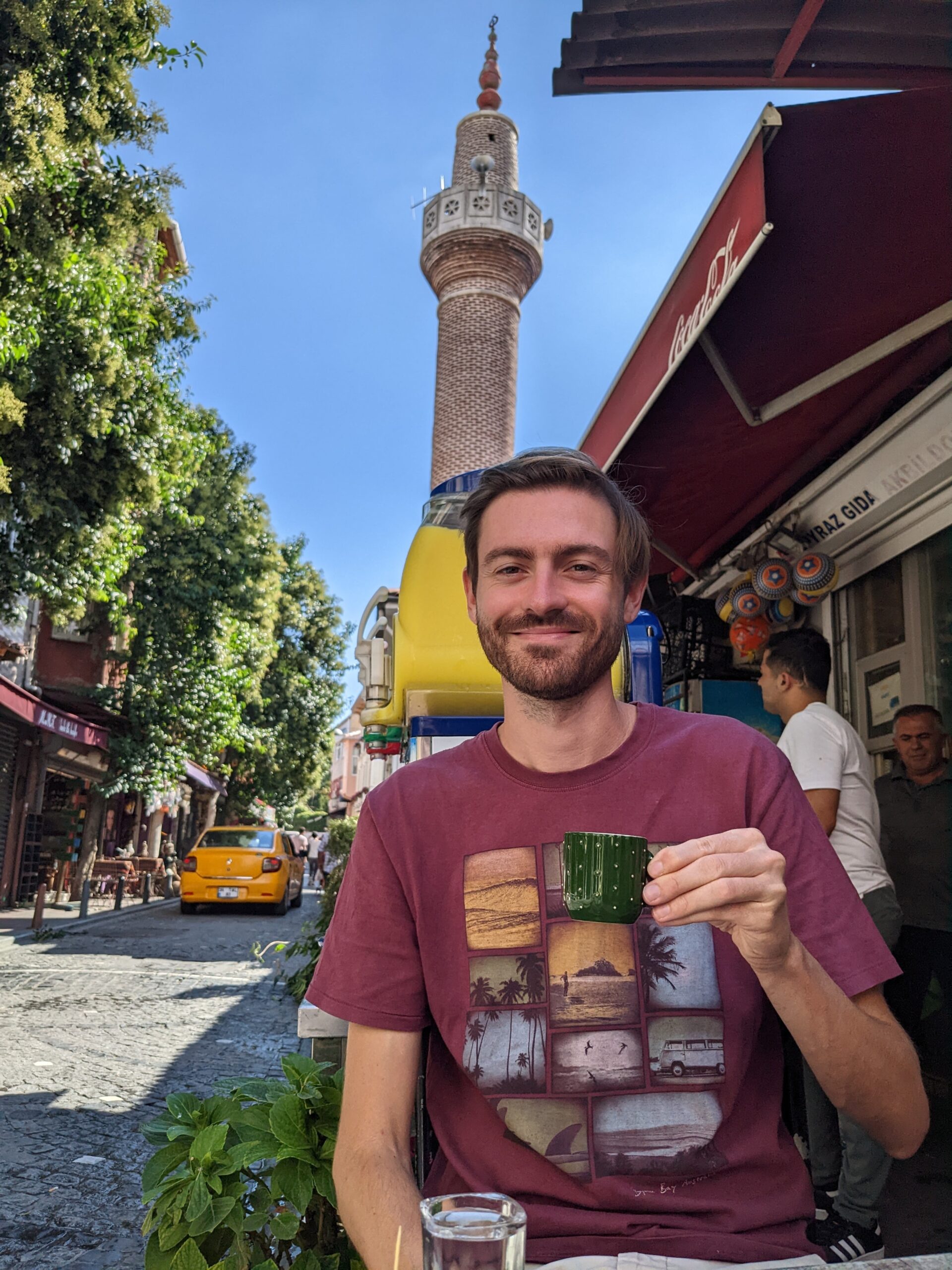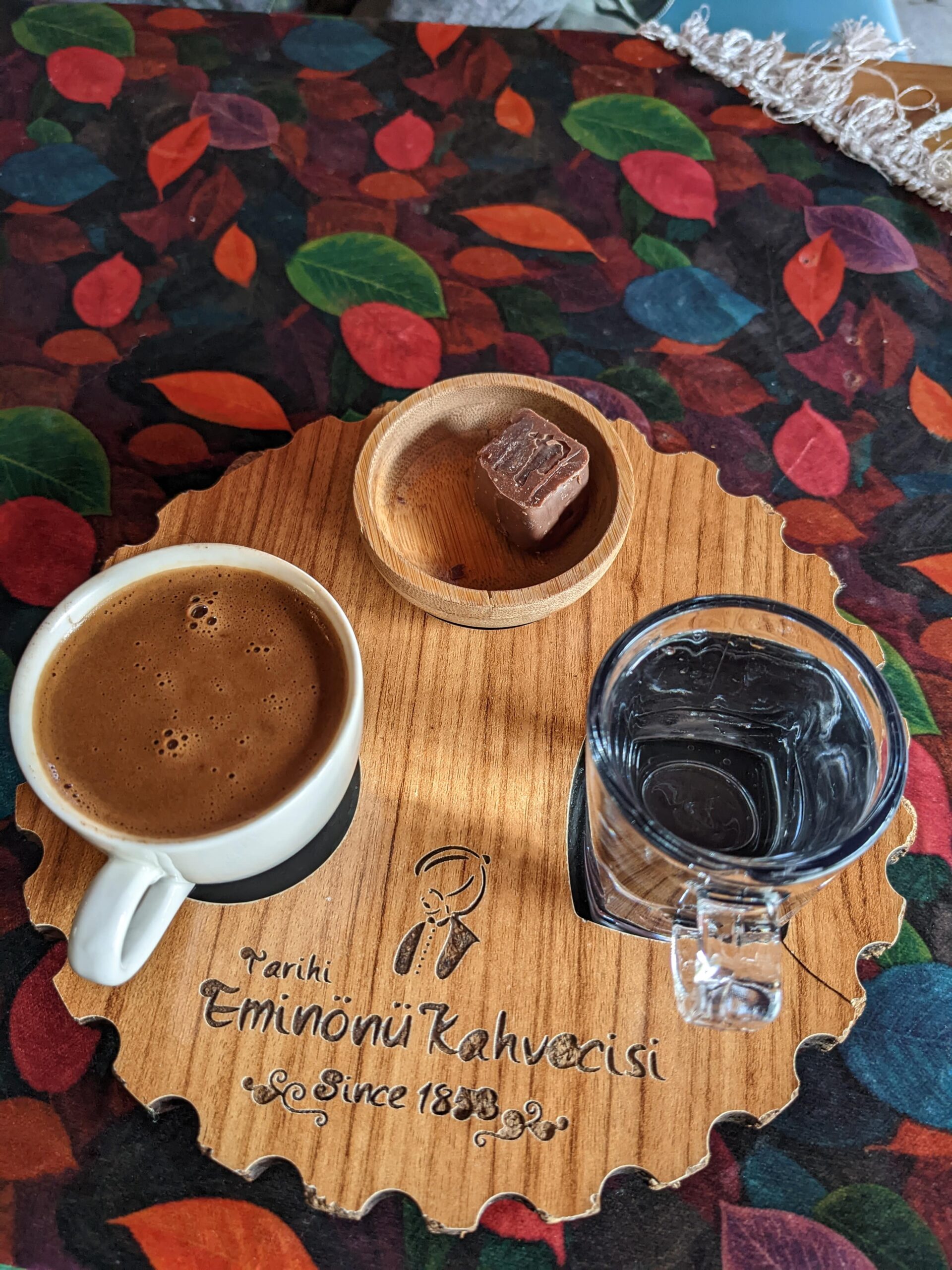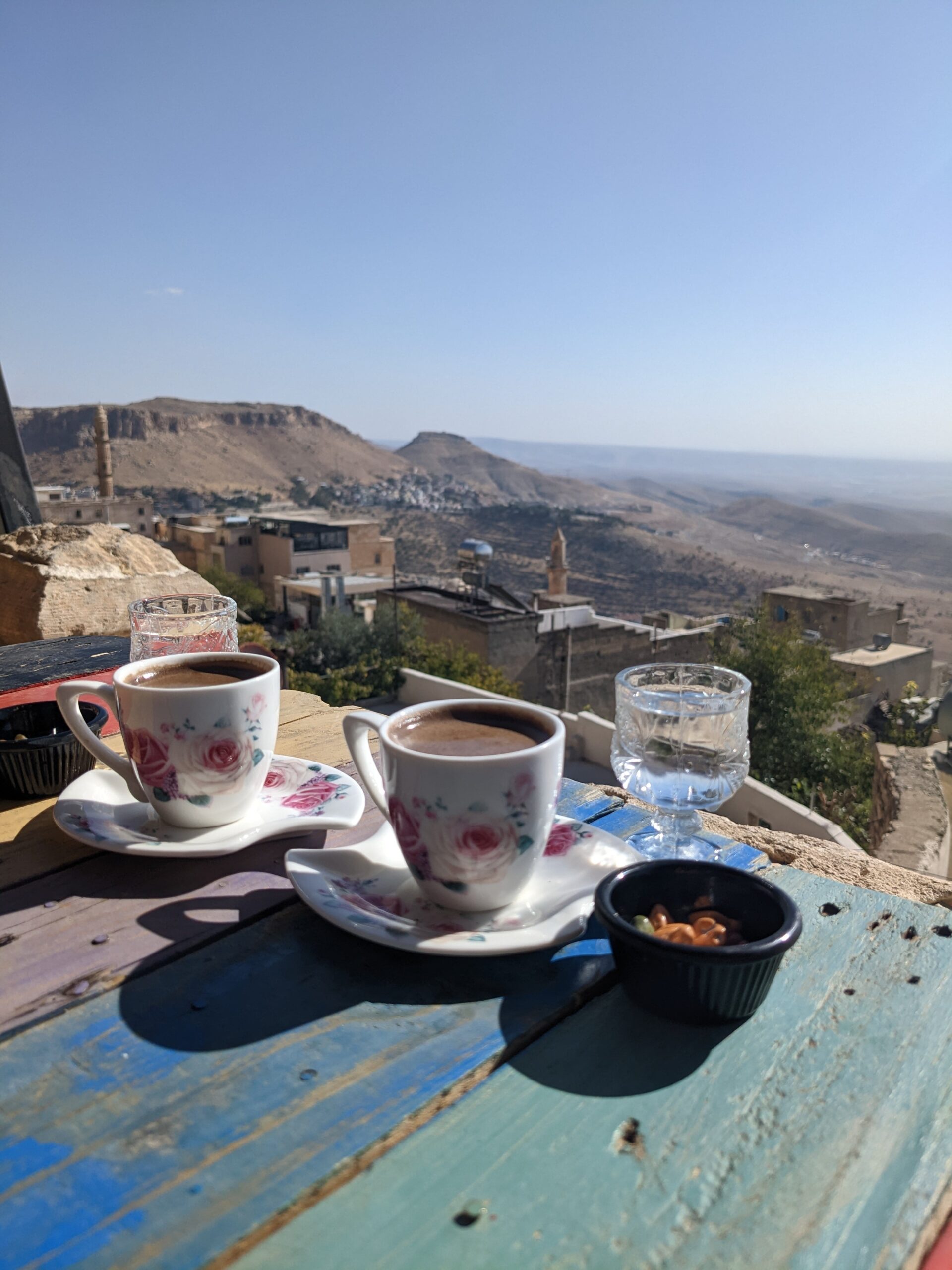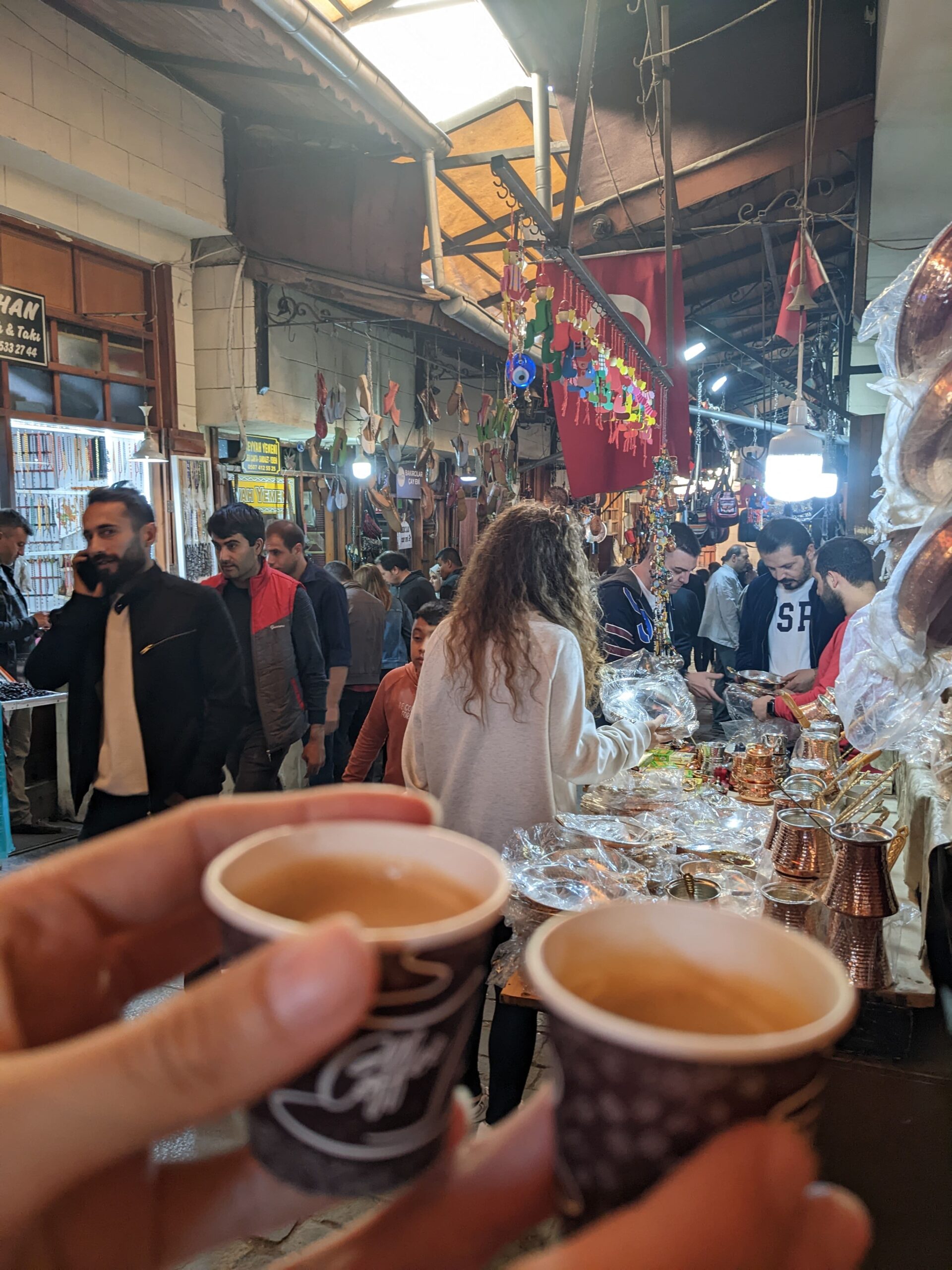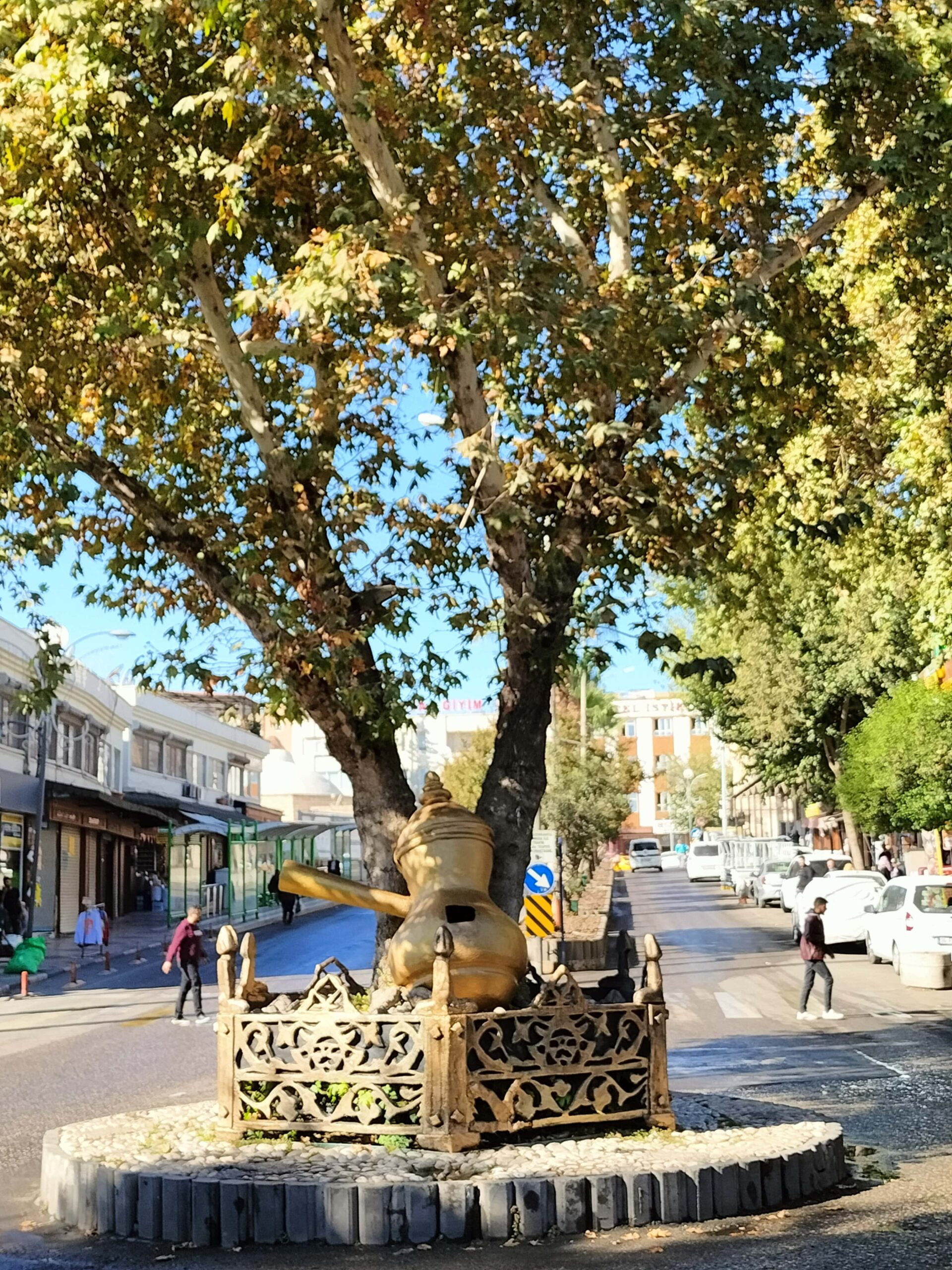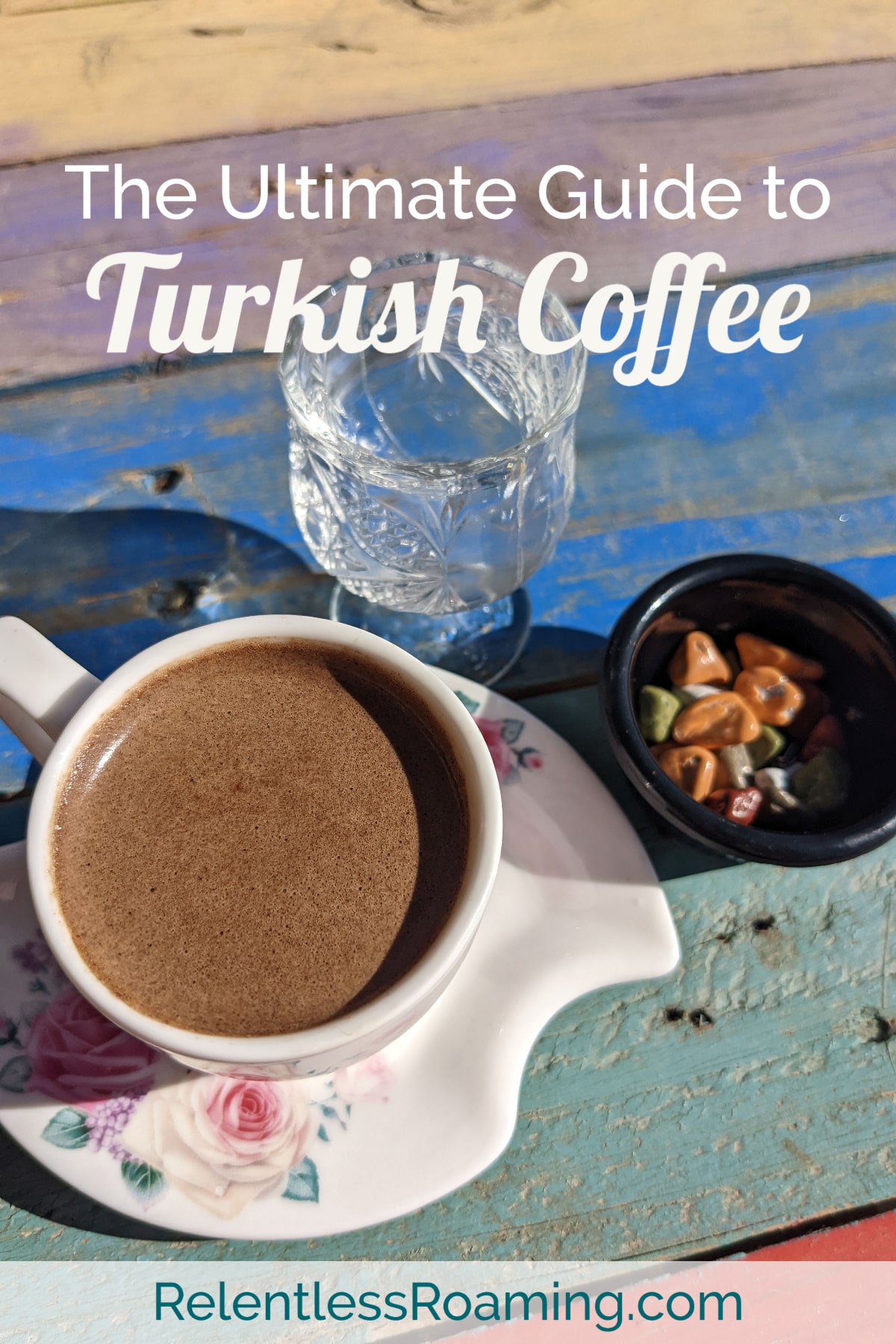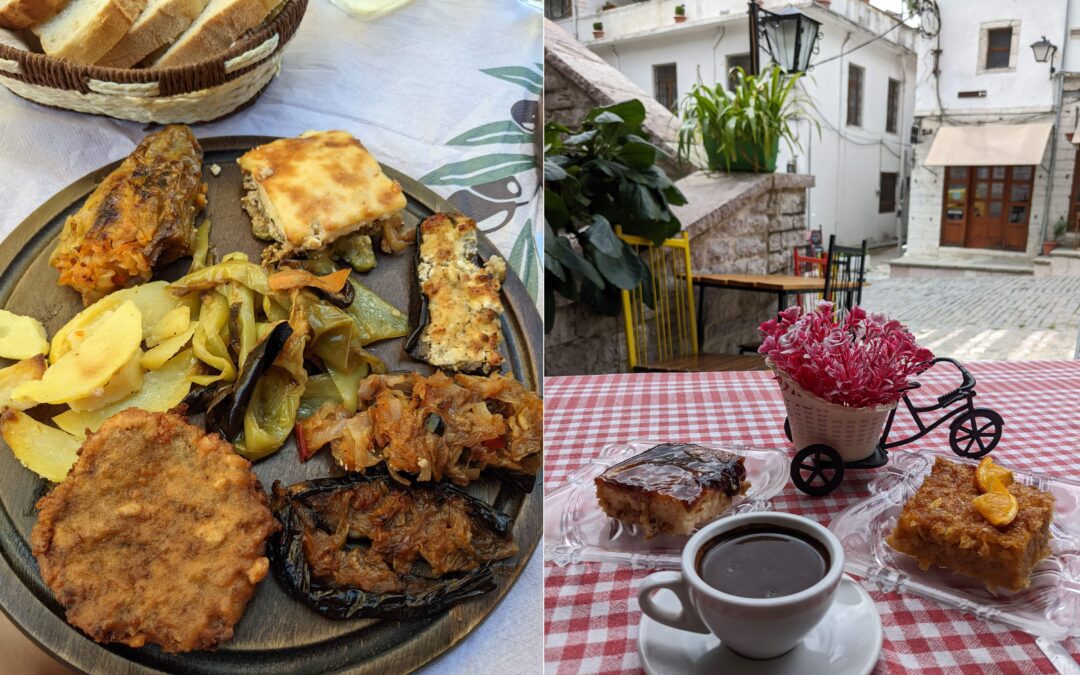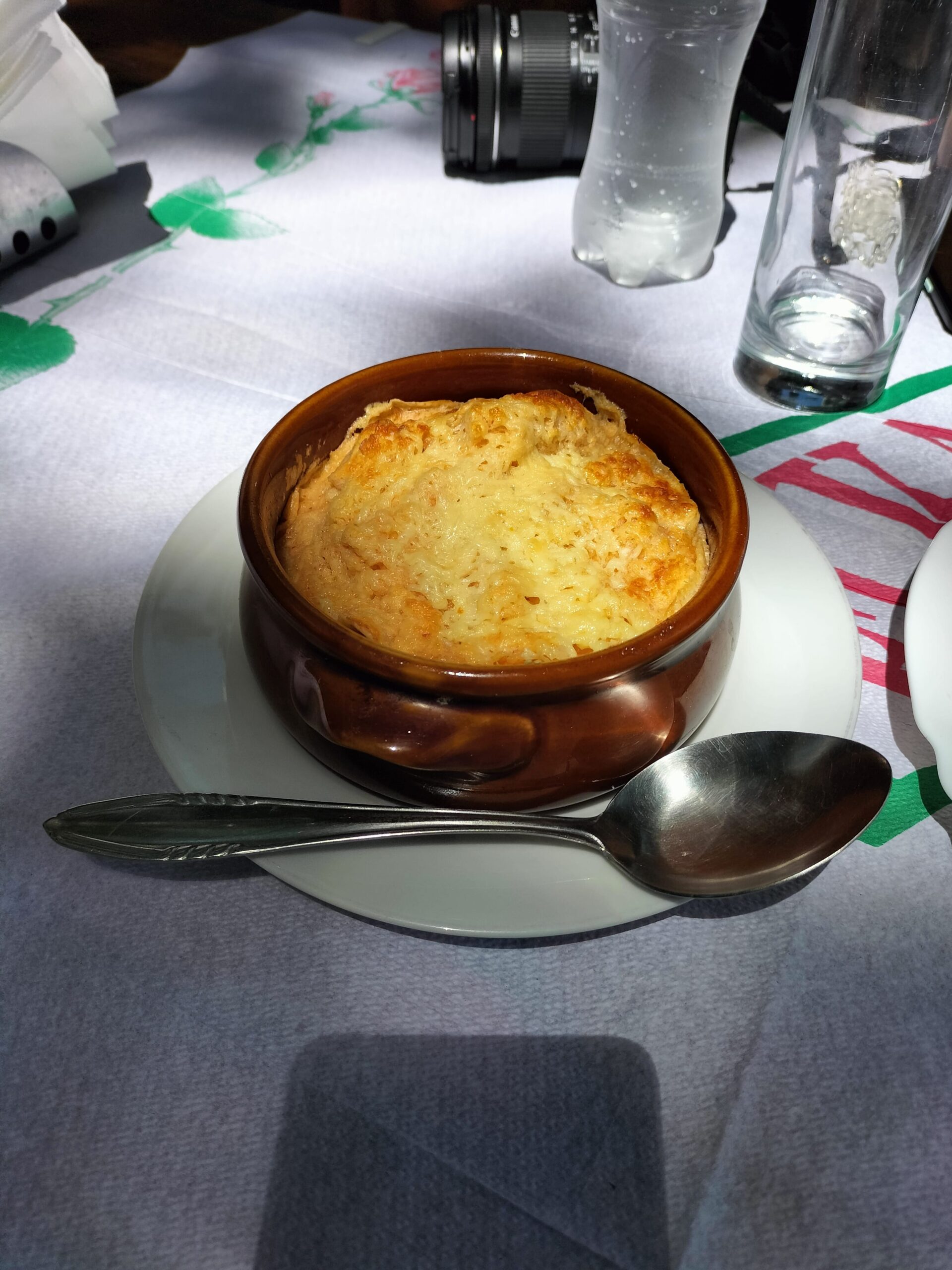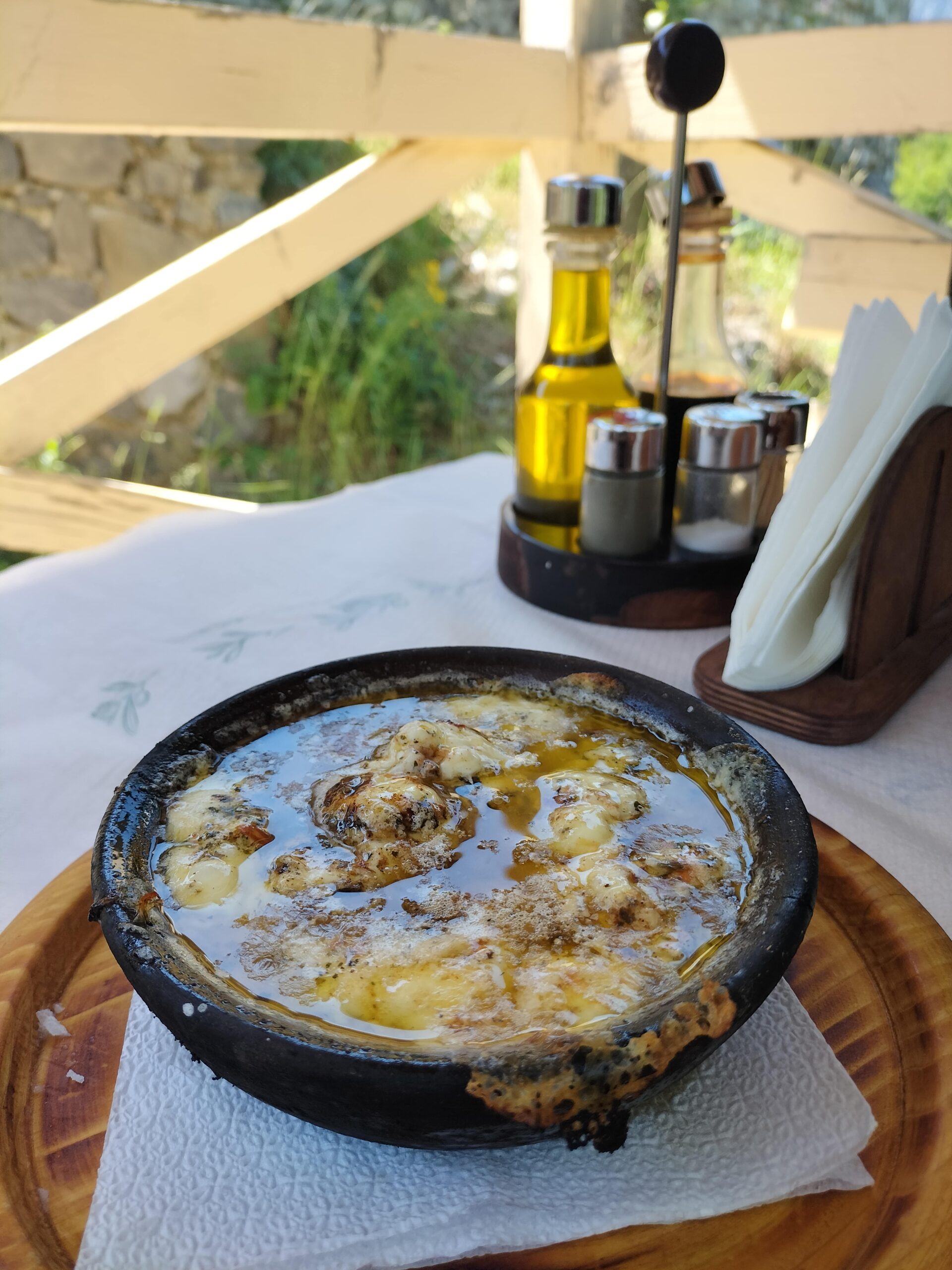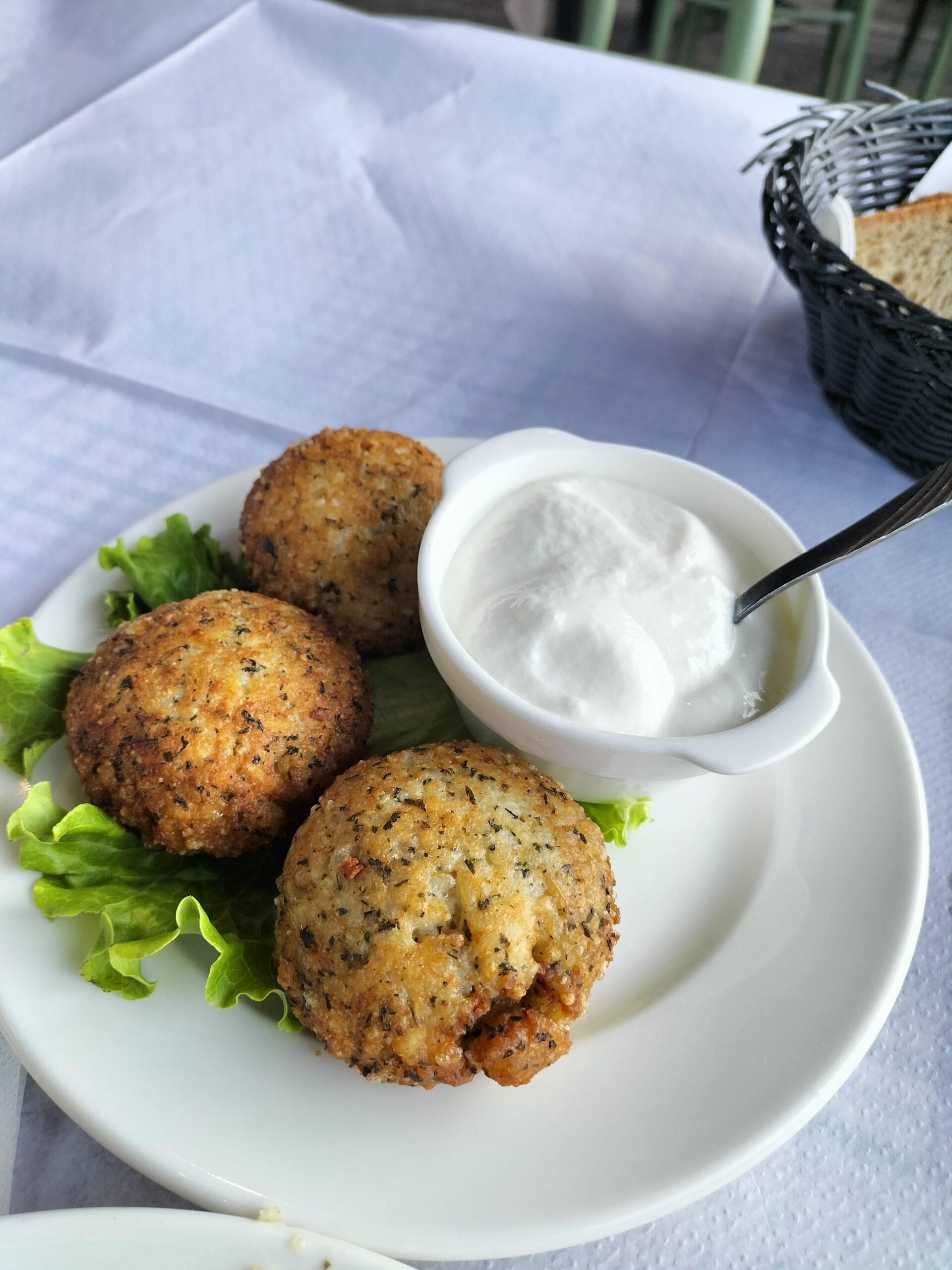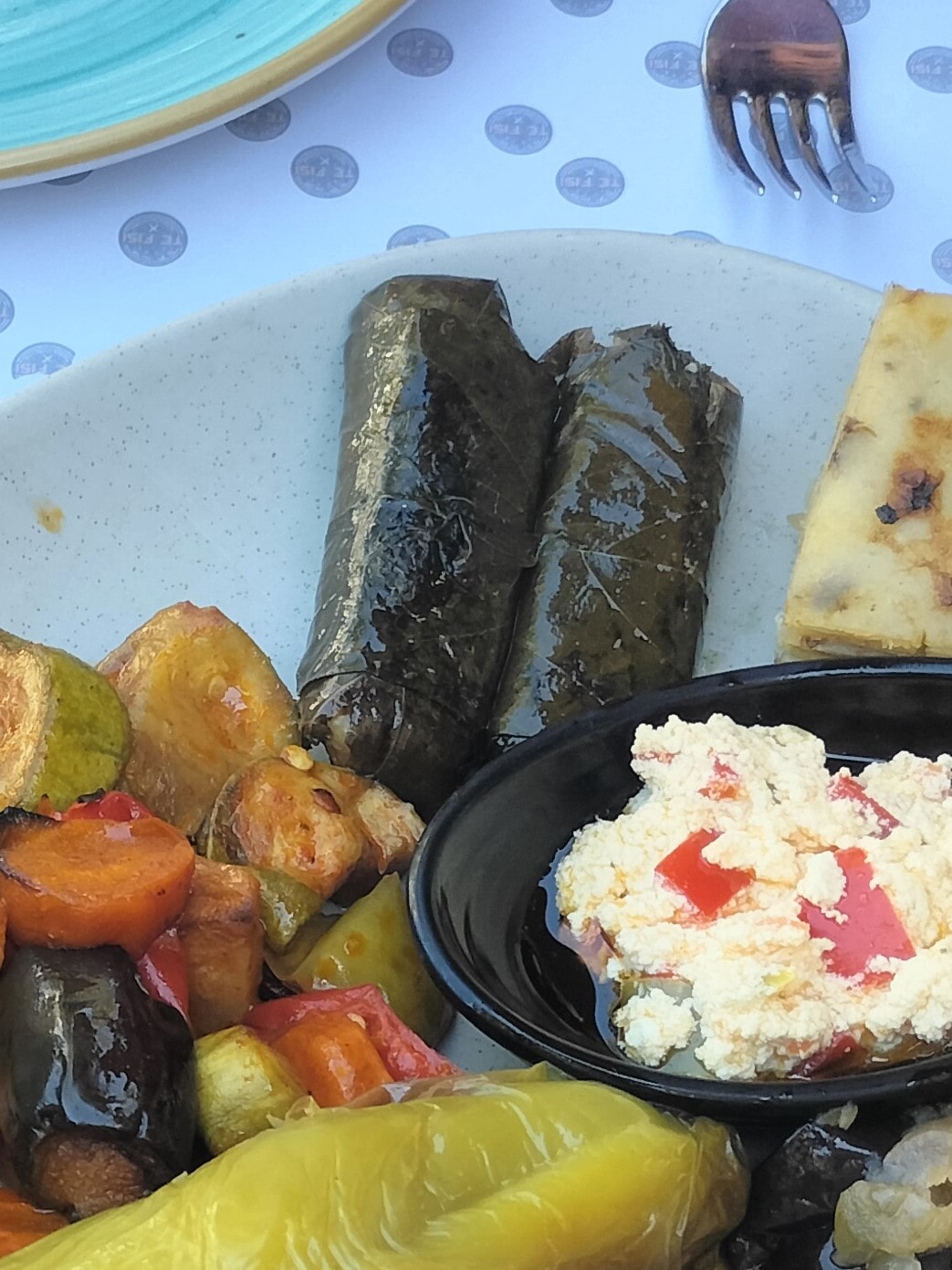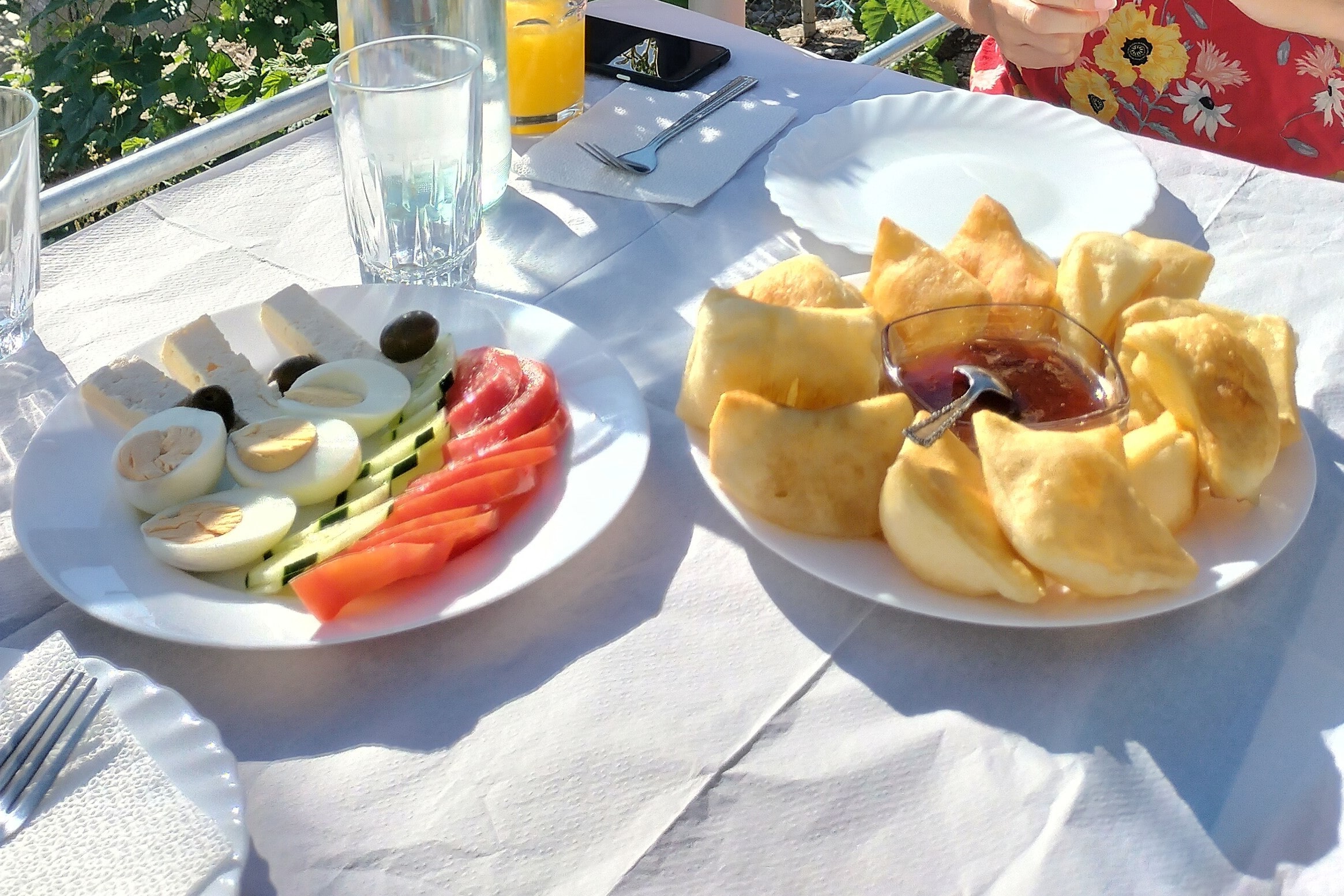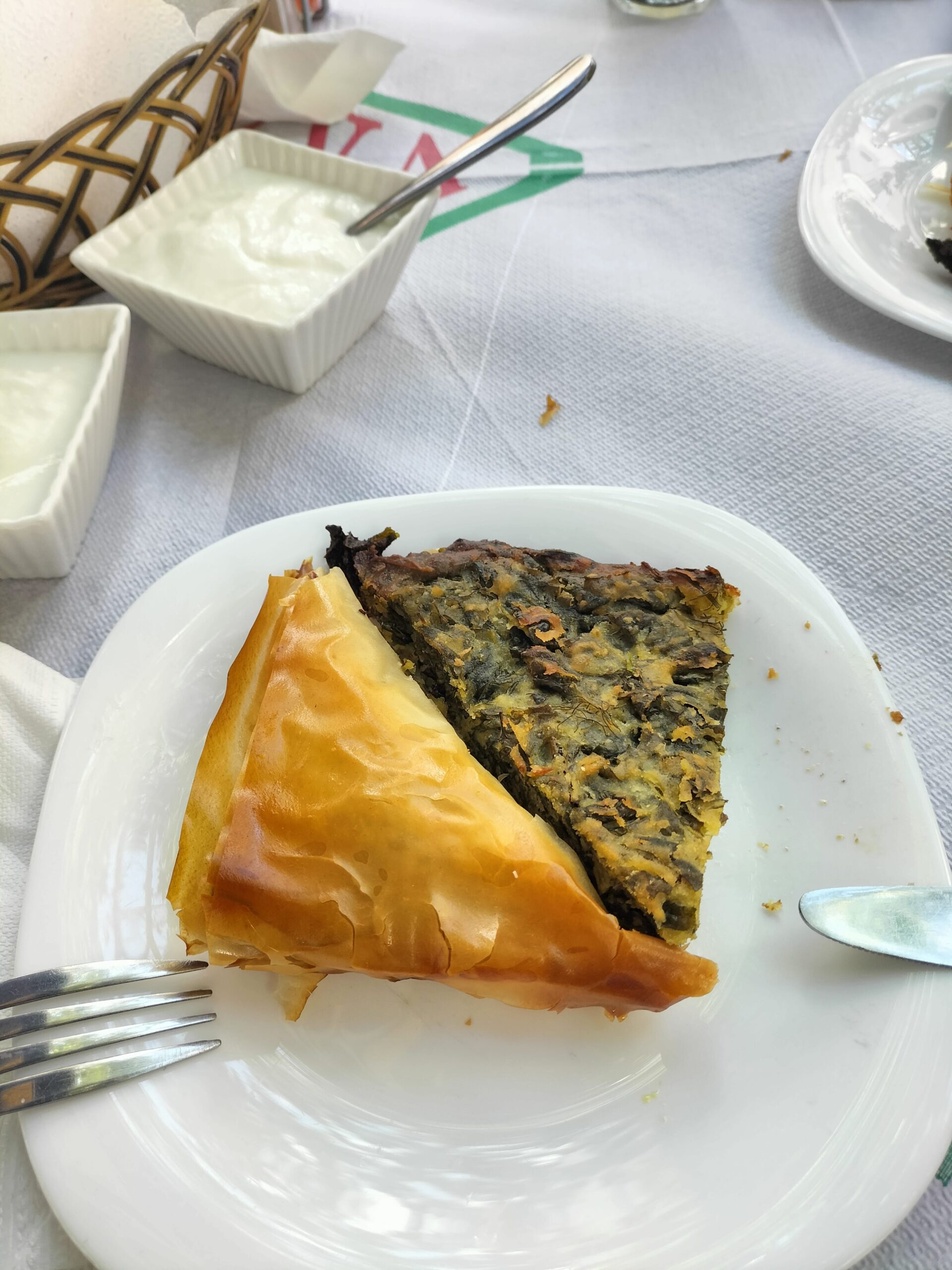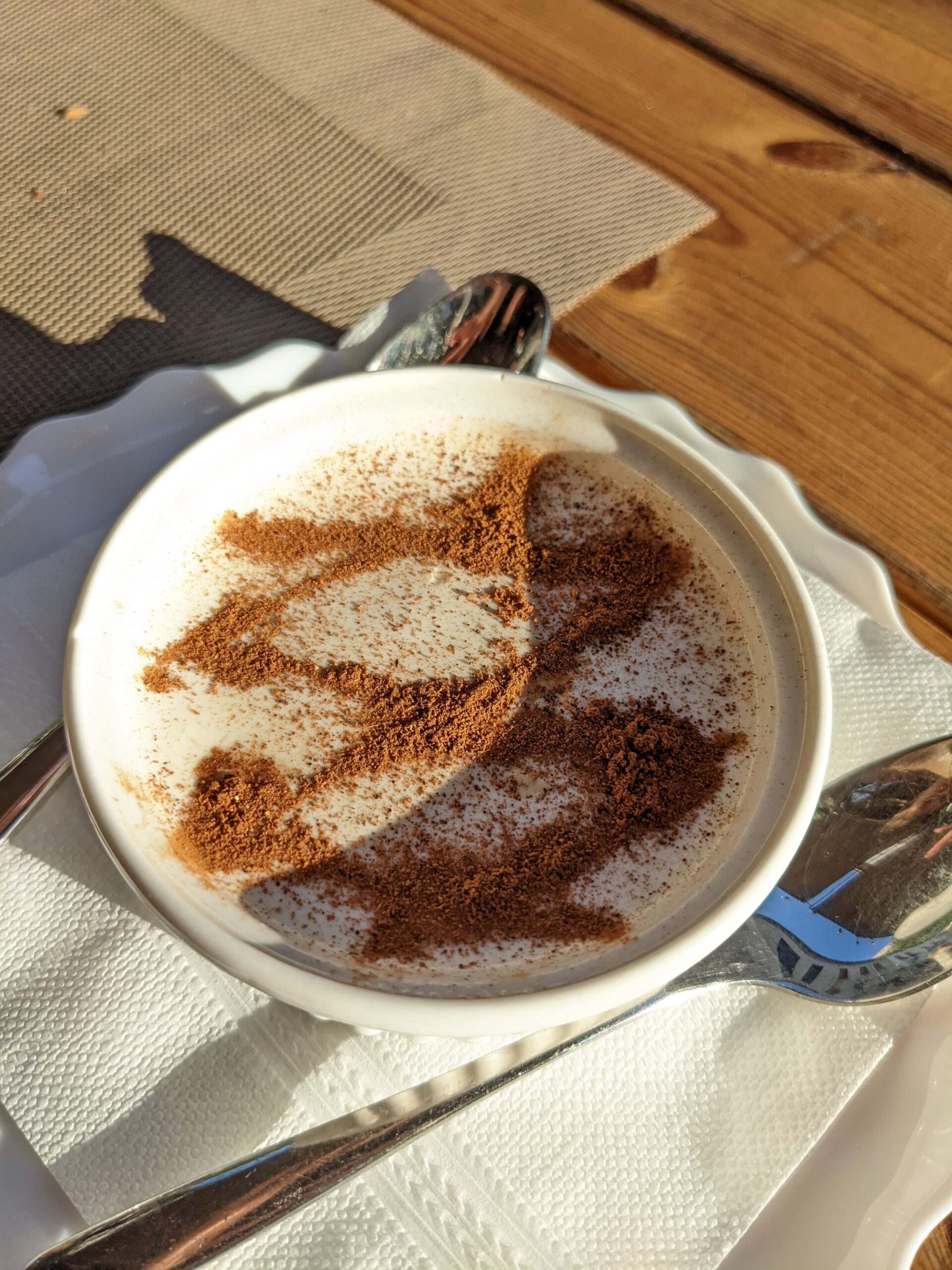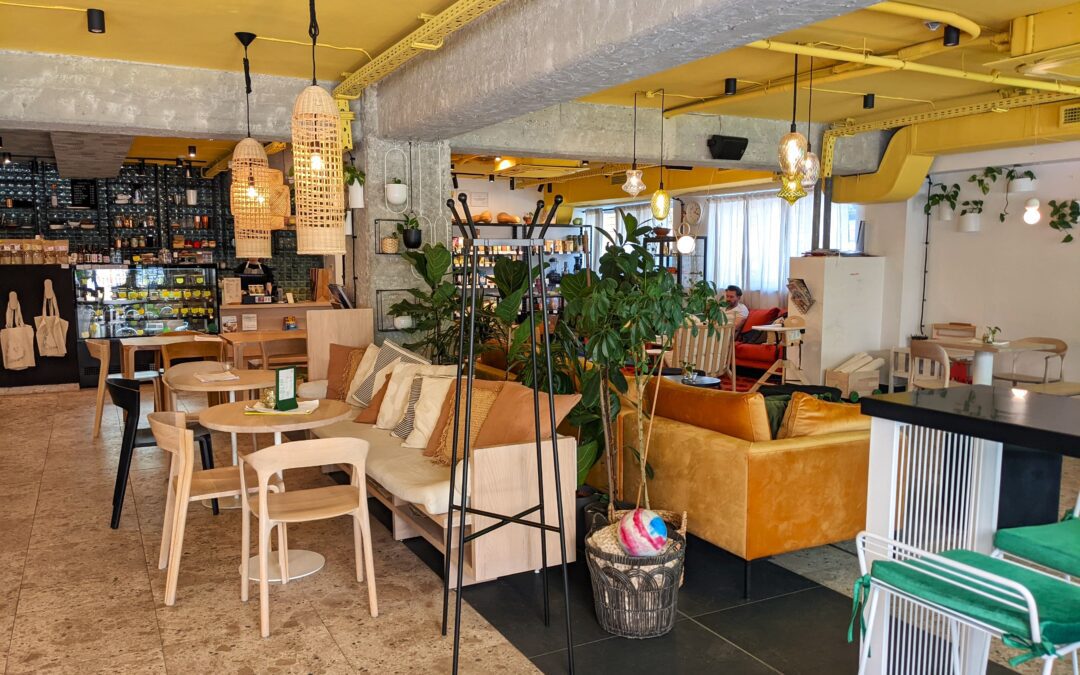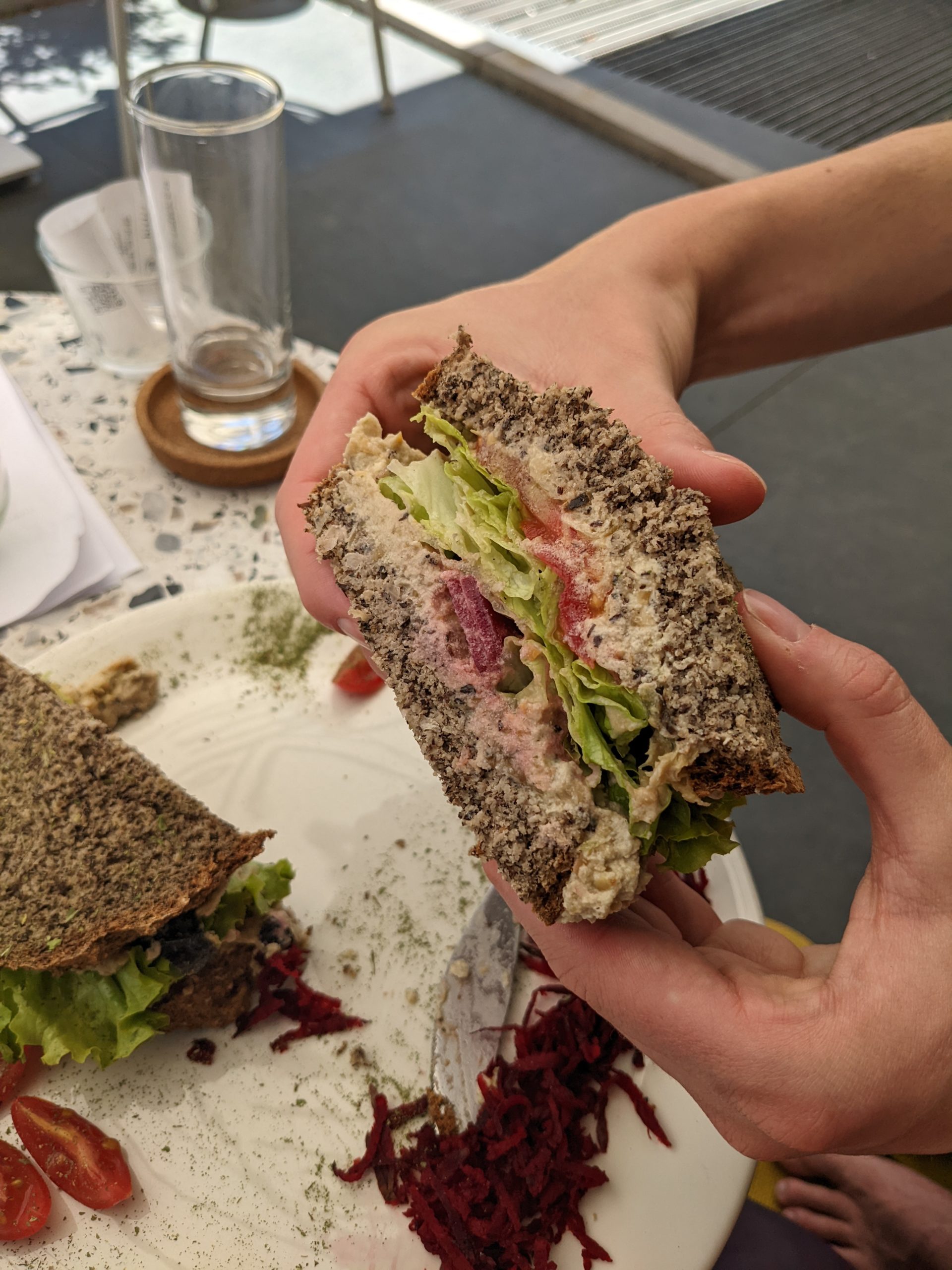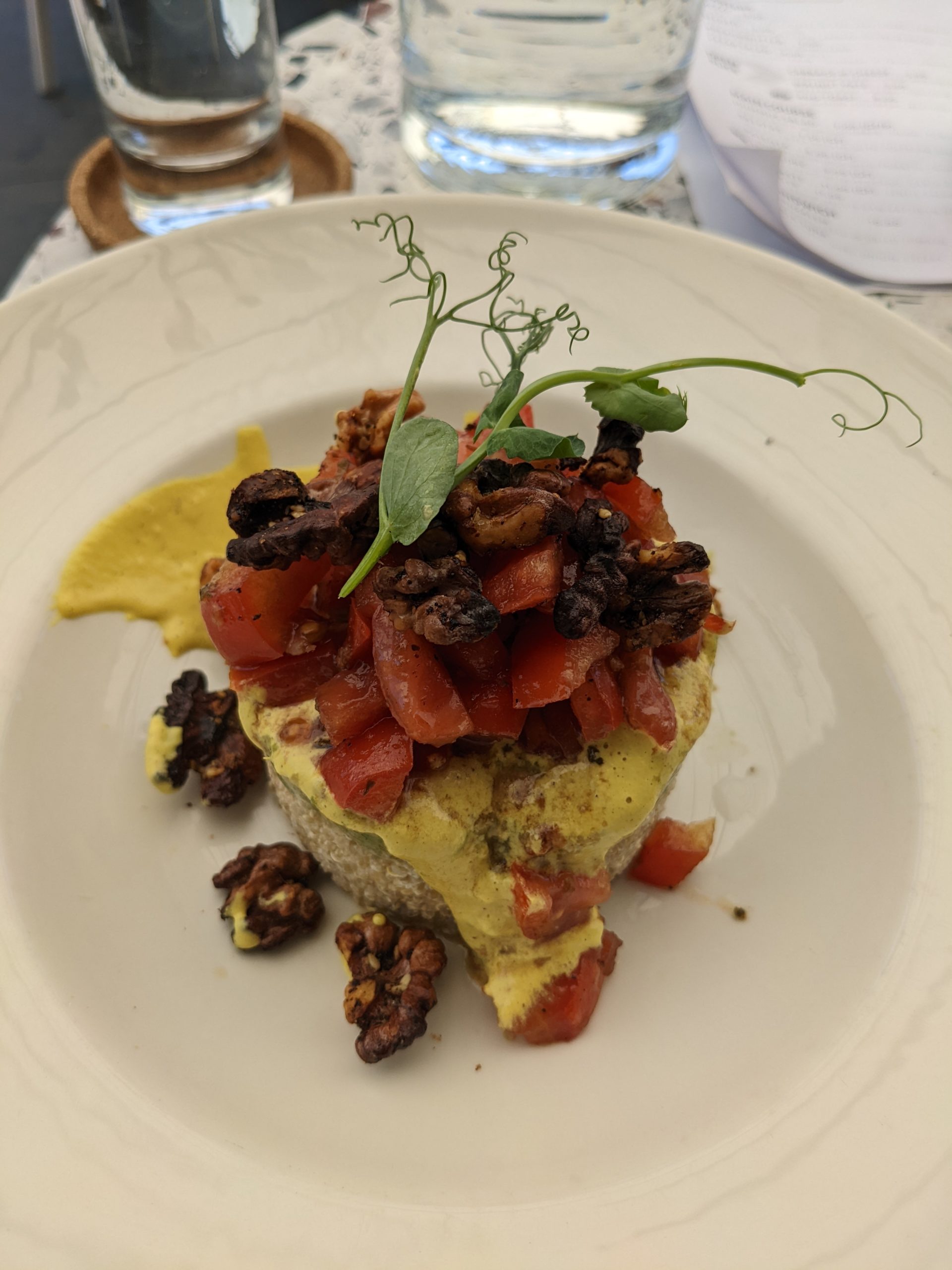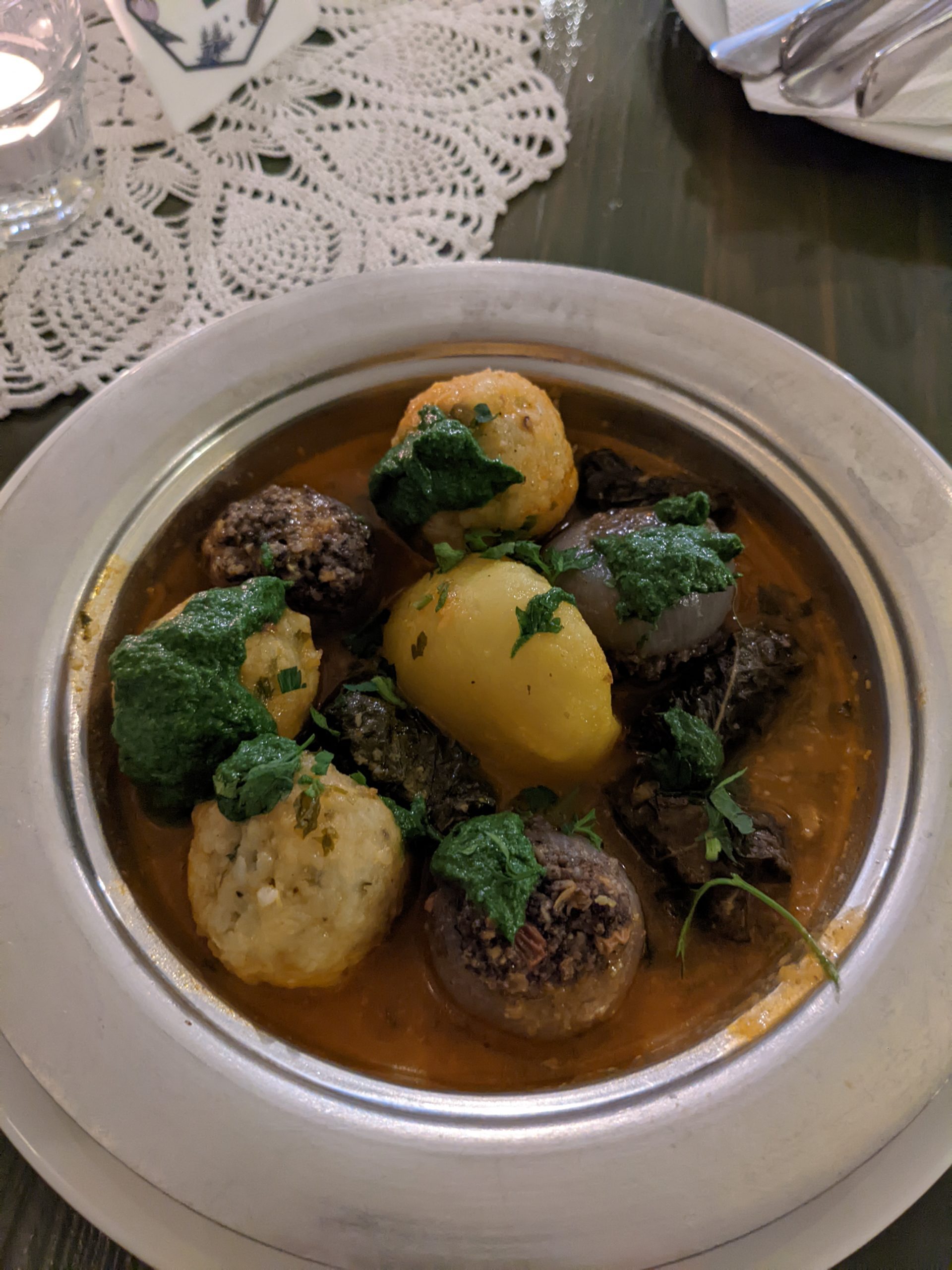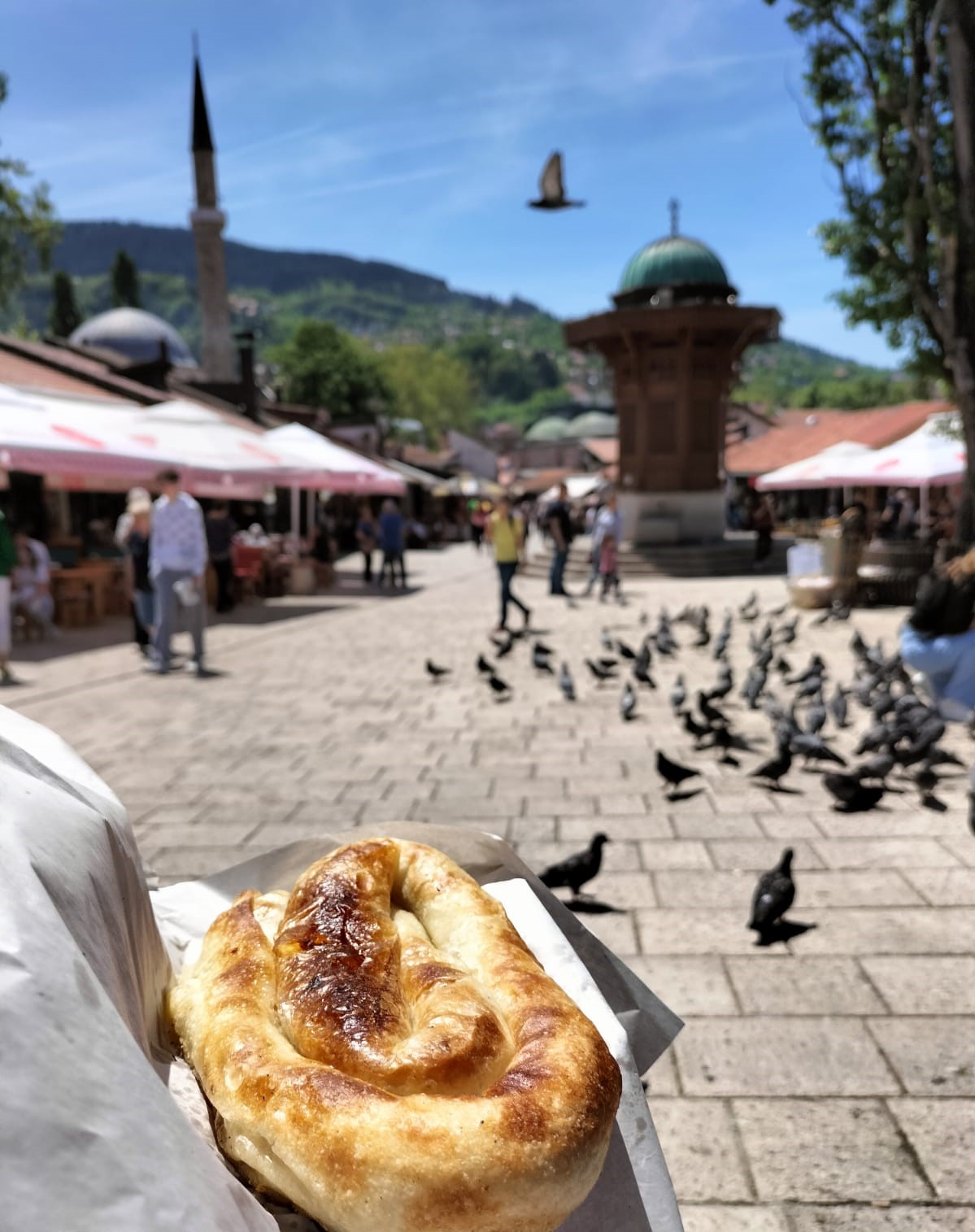
The Ultimate Guide to the Full Turkish Breakfast (plus the best places to eat!)
The Ultimate Guide to the Full Turkish Breakfast (plus the best places to eat!)
The full Turkish breakfast spread is honestly one of our top reasons for loving Turkey. I would fly back to Istanbul or Van, in particular, just to eat their phenomenal breakfasts.
Different regions of the country have different takes on the individual dishes that make up a Turkish breakfast. The beginnings of this breakfast tradition seems to be traced back to Van in the very east of the country, home to a huge Kurdish population and close to the border with Iran.
Since the popularity of the Van breakfast has increased, more restaurants have opened up in other areas of the country, notably Istanbul.

A full Turkish breakfast spread, called serpme kahvaltı in Turkish, is a way to bring people together, socialise and enjoy life at a slow pace. It is a common occurrence at the weekends when people have more time than during the week.
People get together and enjoy a leisurely breakfast over a few hours, tucking into the huge variety of small dishes (usually at least fifteen!) and sipping tea (cay).
The word ‘kahvaltı’ literally means ‘before coffee’ in Turkish. The breakfast is accompanied with plenty of cay, and then can be finished off with a thick and dark Turkish coffee.
It’s a traditional, cultural and wholesome activity, and I really feel that you haven’t properly experienced Turkey until you have had yourself a proper serpme kahvaltı.
Loosen your belt, you are in for an absolute treat.
Looking for more Turkish vegetarian food options? Take a look at this post.
Disclaimer: This blog post may contain affiliate links. If you click and purchase through an affiliate link, we may earn a small commission at no extra cost to you! This just helps us to continue creating blog posts. We will only ever recommend products and services that we have tried and loved ourselves.
The Ultimate Guide to the Full Turkish Breakfast (plus the best places to eat!)
The Main Elements of a Full Turkish Breakfast Spread
Cay
Cay (pronounced chai) is Turkish black tea that is served with all breakfast spreads. If you go to the right places, you might even get unlimited cay. But make sure you check before you order more cay.
Made from black tea leaves, cay is a Turkish institution and is drunk by Turks all day every day. Maybe add a cube of sugar to your dainty tulip-shaped glass of the amber liquid. Without cay, it’s not breakfast.
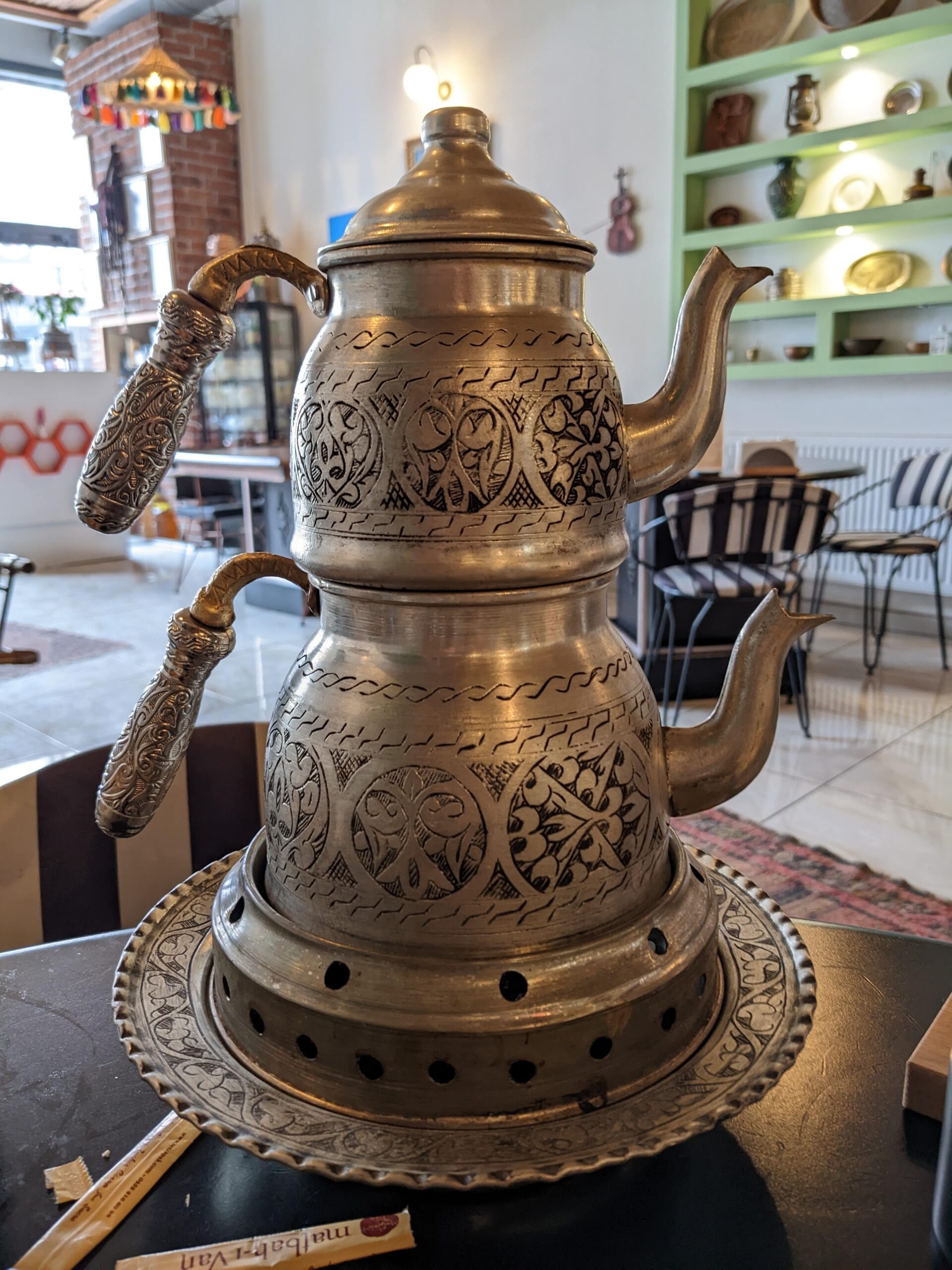

Bread
Turks know how to do bread; whether it be a flatbread, a sesame seed topped bagel called simit or a regular loaf, you’ll need plenty of this to mop up the juices and use as a vehicle to carry all of what’s to come.
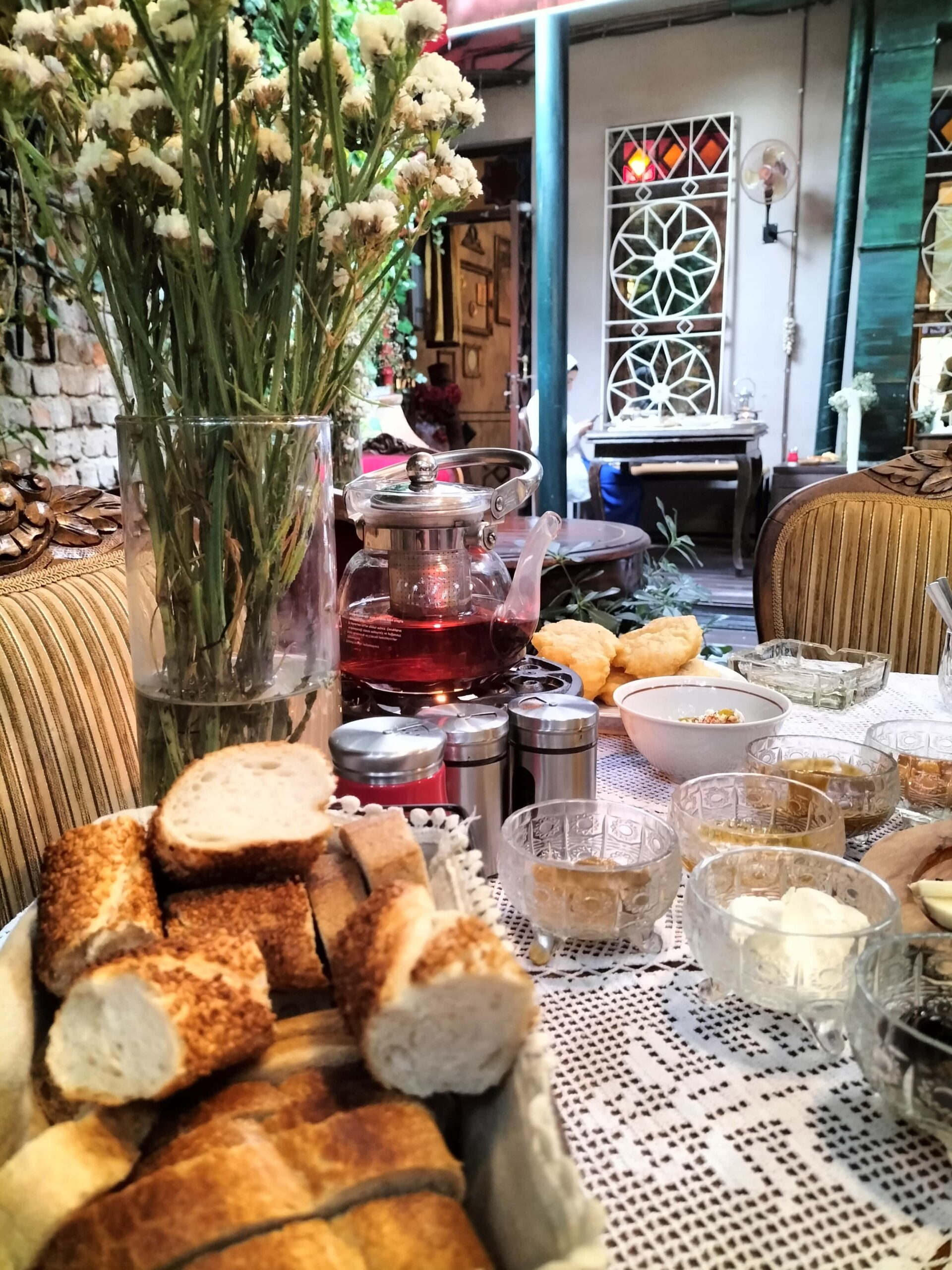
Eggs
This is likely to be the only hot element of the breakfast. This can come in several different forms – fried, omelette, scrambled, boiled – but our favourite is the classic menemen. Menemen is a Turkish scrambled egg with peppers, onions, tomatoes, garlic and spices mixed in.
Some breakfasts serve the eggs with sucuk which is a spiced sausage, so if you are vegetarian, specify beforehand and opt for a menemen or just the egg without the sausage.

Haven't bought your travel insurance yet?
Definitely buy travel insurance for all of your trips abroad. We have used SafetyWing for the last two years of backpacking, and we 100% recommend it, whether you are travelling for a couple of weeks, months, or years. And it is the most budget friendly, best value option out there!
Purchase your SafetyWing Travel Insurance here.
Cheeses
You’ll find at least three different types of cheese usually. Very often a string cheese (dil peyniri) which is mild in flavour, and then whatever the local specialities are.
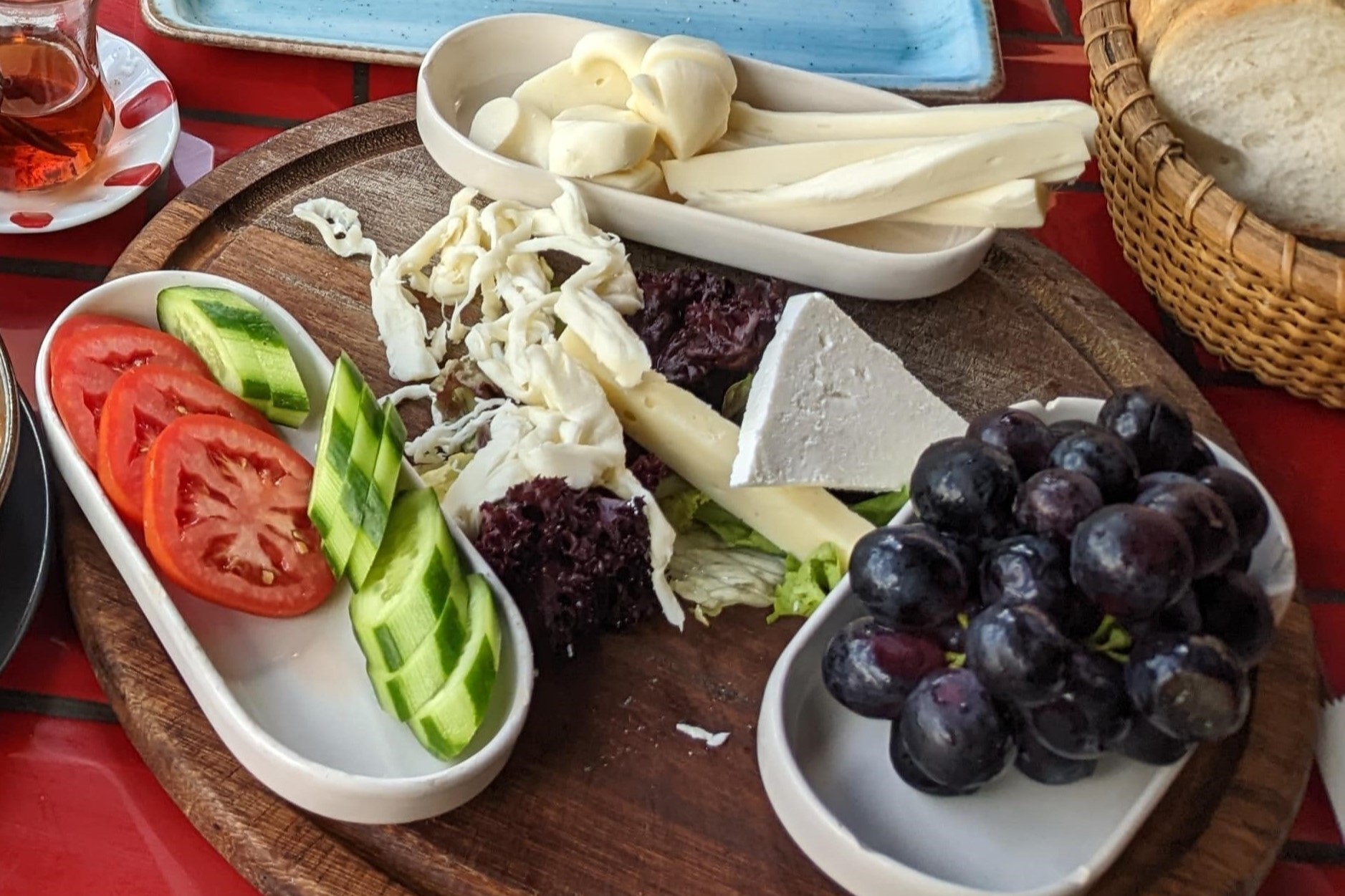
Acuka
This is punchy paste made of red peppers, chilli, herbs, salt and walnuts. Spread a small amount on some bread with some of the cheese.
Olives
Black and green olives are always served. Sometimes they have been marinated in herbs and spices to really give them a kick.
Za’atar and Olive Oil
A small pot of za’atar is served alongside a small pot of oil. Dip your bread into the oil and then into the za’atar spice mix of sumac and toasted sesame seeds.
Tomato and Cucumber
This keeps things light and fresh. They are often topped with salt and herbs to really bring the flavours out.
Bal-kaymak
Bal-kaymak is a rich clotted cream that is served with honey. This was my absolute favourite part of the spread. It is so indulgent, creamy, rich, sweet and sticky. Spread on to a piece of bread of fried dough (pisi).

Jams
The jams that we received in our breakfast spreads were always very different to those we have back home in the UK. They are generally very sticky and contain a lot of whole fruit. You’ll usually have a selection of three. Our favourites were fig, apricot and cherry.
Extra Elements of the Full Turkish Breakfast Spread
Sigara Borek
Filo pastry is wrapped around a stretchy cheese and deep fried, leaving a crunchy exterior and a gooey centre. These are great dipped in acuka (spicy red pepper paste).
Tahini Molasses
Rich and creamy sesame seed paste is mixed with a grape molasses to sweeten it up.
Pisi
Pisi is a fried dough that is a perfect match with the bal-kaymak (honey and clotted cream) or a fruit jam.
Nutella and Nut Butters
Nutella and nut butters add a sweet and creamy richness. Again, a great combination with the pisi fried dough. We received a hazelnut paste on a couple of occasions that tasted just like the creamy part inside a Kinder Bueno.
Regional Variations
Gaziantep/Syrian influence
We had a homemade breakfast spread made by our AirBnB host in Gaziantep who is Syrian. He made aubergine spreads, moutabel and a thick aubergine and garlic paste; and a herby and spicy yoghurt dip.
We finished off the breakfast with a pistachio coffee instead of a Turkish coffee as Gaziantep is the home of the tastiest pistachios!
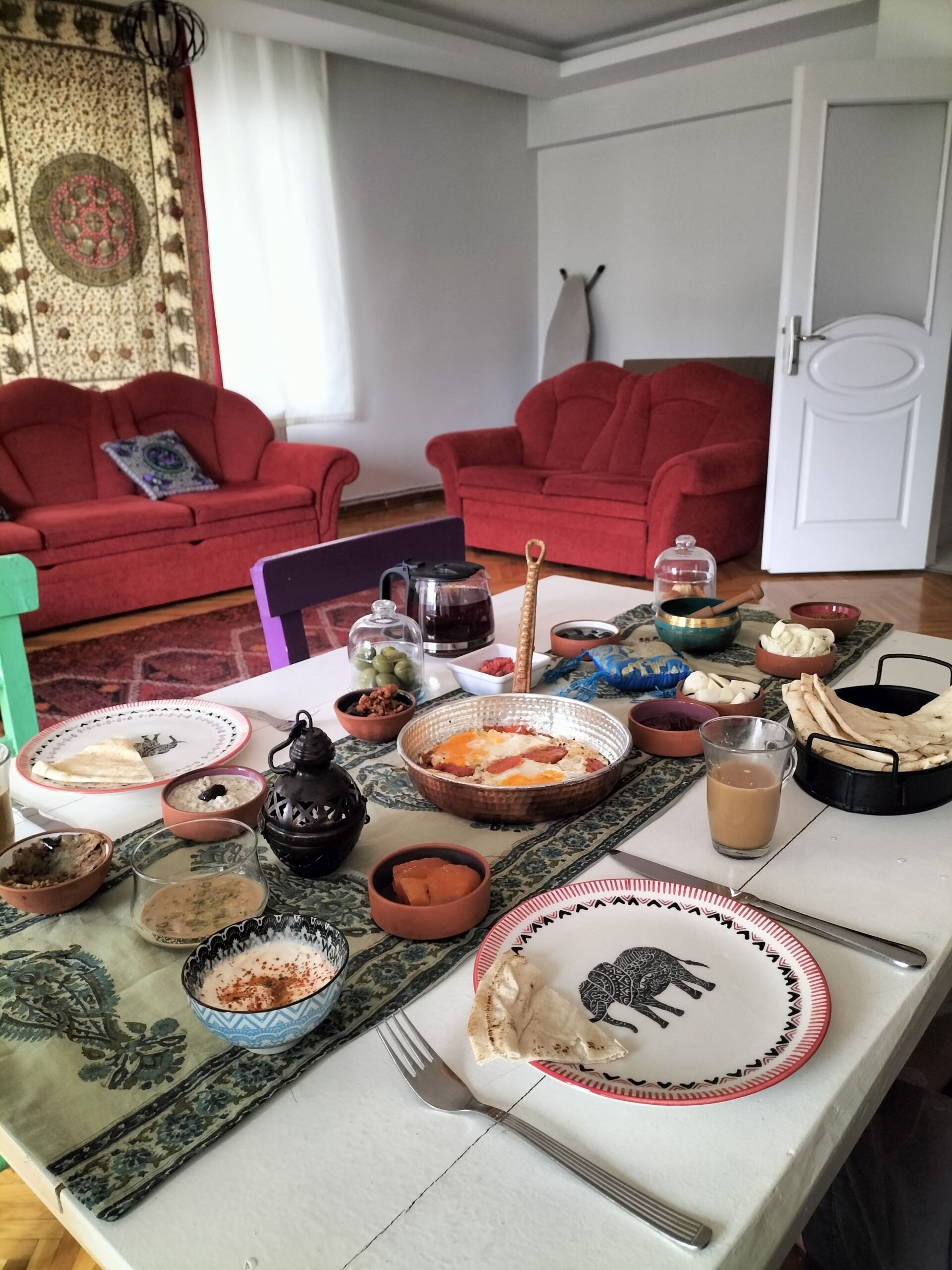
Van
We received two dishes that we couldn’t even distinguish either by looking or tasting them so had to ask for clarification. Murtuga is egg and flour fried in oil, and Kavut is a halva that is more liquid and quite sandy in texture. These two are very specific to this region and I would put them in the ‘acquired taste’ category. We weren’t 100% sold on them.
However, Van cheeses are beautiful and so distinctive as they are packed full of strong tasting local herbs. You will have otlu peynir which is a softer cheese full of herbs and then a crumbly feta textured cheese which is really punchy.
Planning Your Trip?
These are our favourite resources that we use religiously for planning our travels at home and while on the road. Use them for your trip planning too!
Accommodation: for the best deals, we use Booking.com, and Agoda.com. And what’s even better is that you build up loyalty points the more you book, which gets you exclusive offers like extra discounts, free breakfast, free room upgrades, and cashback!
Transport: For buses and trains, we swear by BusBud, and 12Go Asia.
For flights, we find them on Skyscanner and make sure to book through Trip.com because you can rack up points which turn into credit on your account, and sometimes free lounge access.
Travel Insurance: THE best budget-friendly insurance SafetyWing – no question.
SIM Cards/Tickets/Experience: Klook is the way to go!
Our Favourite Spots for Full Turkish Breakfast Spreads
Matbah-ı Van in Van
Fresh bread made on site by a couple of women baking in the restaurant, honey on the comb with a beautifully rich clotted cream, four different types of cheeses with herbs running through, menemen and fried eggs, whole fruit jams and cay served in traditional stacked teapots (which was unlimited), as well as all the other elements.
Phenomenal food, authentic and beautiful setting. Take me back!
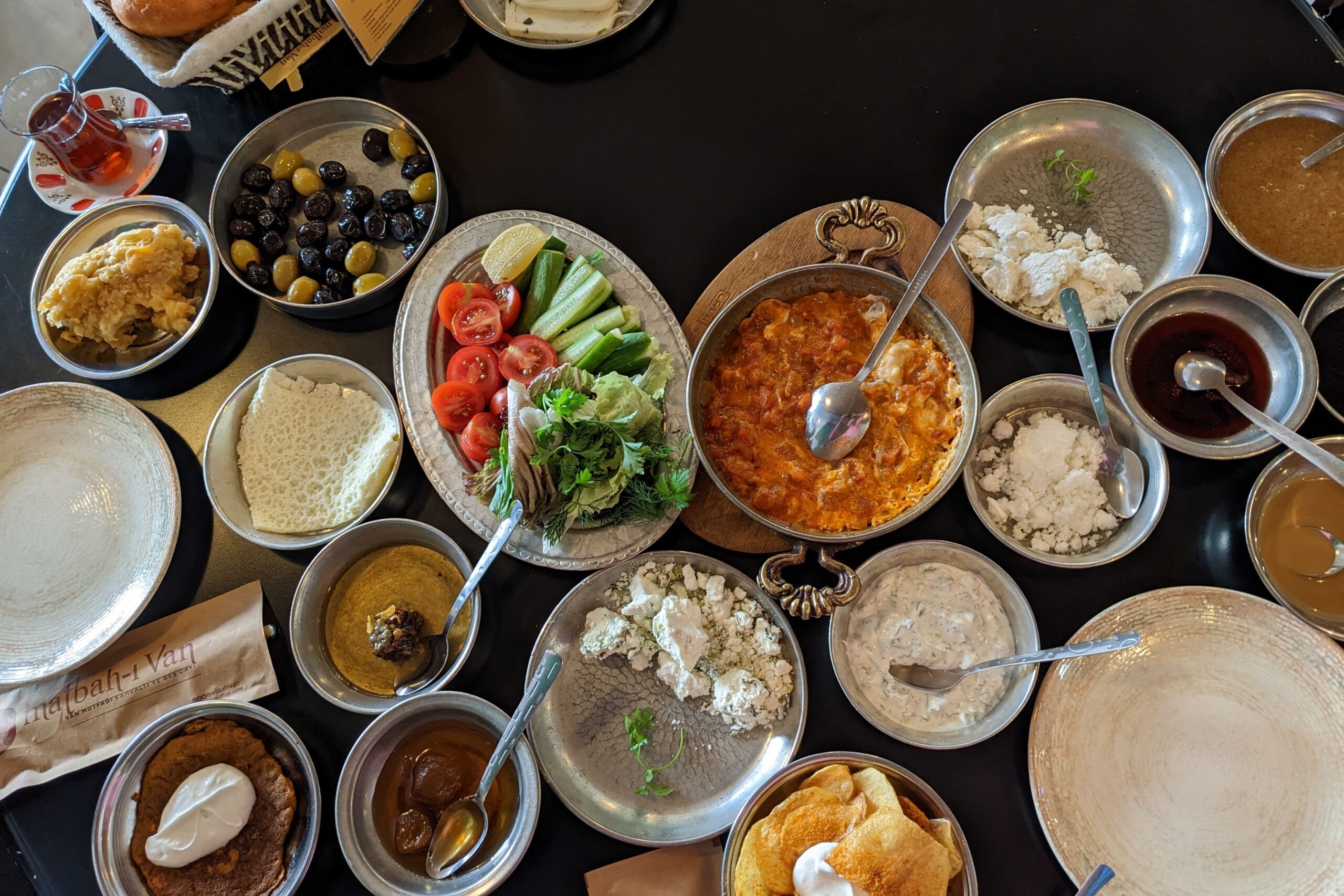
Velvet Cafe in Balat in Istanbul
Definitely the classiest place we had a Turkish spread. The restaurant has a vintage feel about it with old telephones and vases, and tables decorated with lace doilies.
Expect nut butters, jams, acuka, flavoured butters, hot peppers with cheese, tahini molasses, fried dough and plenty more.
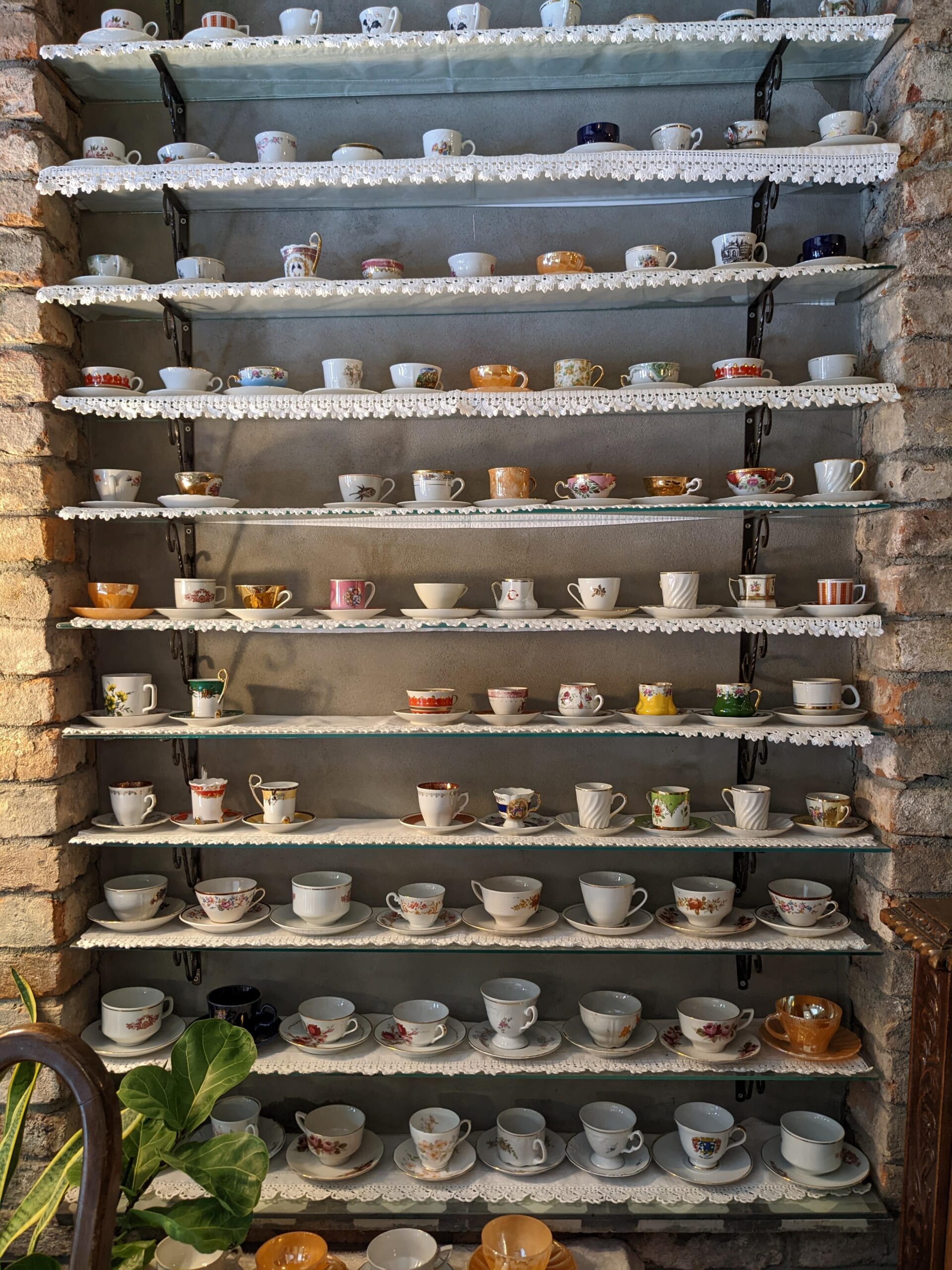
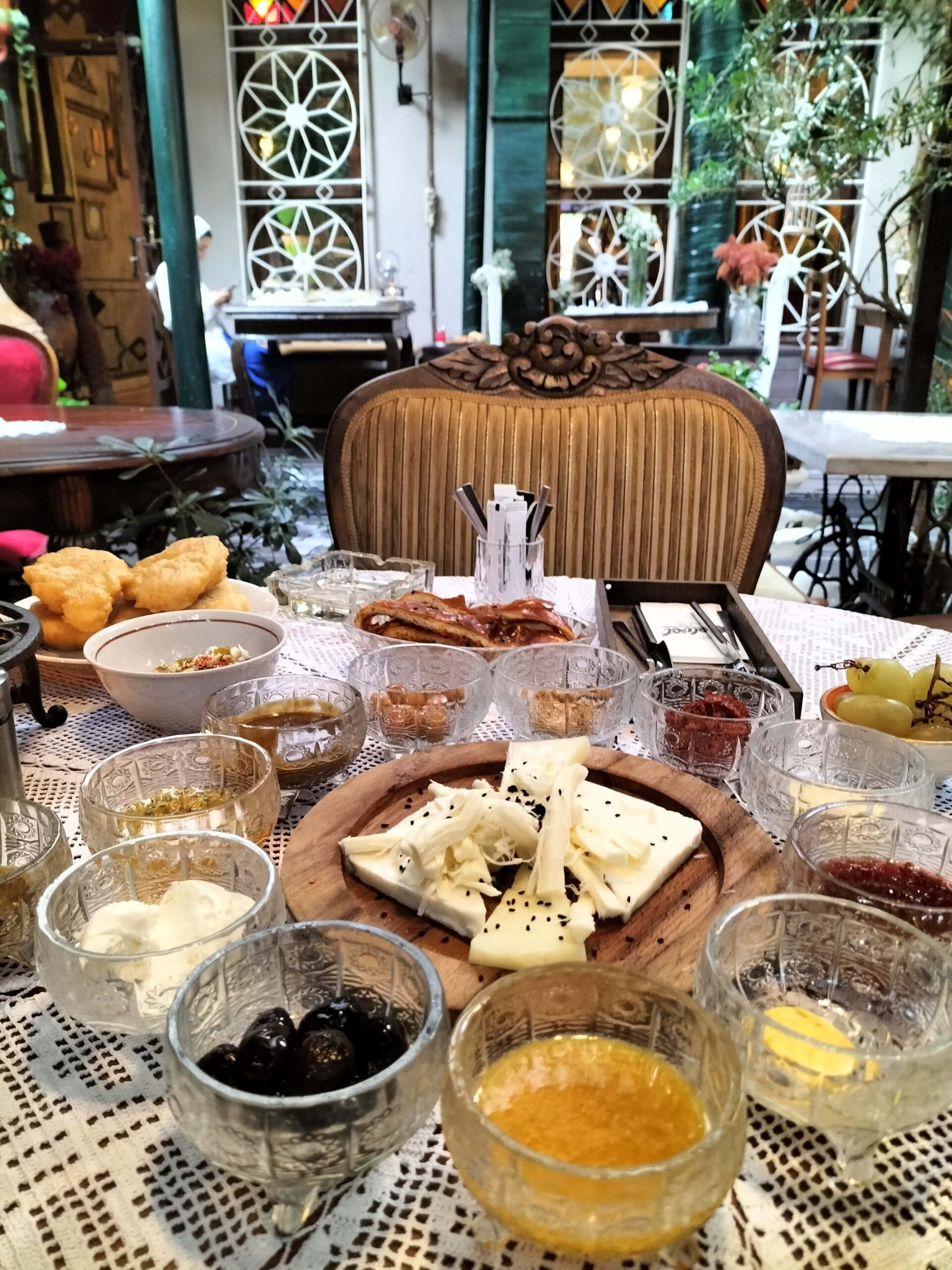
Bumba Breakfast Club in Alaçatı
This place is dangerous. It’s an ‘eat as much as you possibly can’ type place, so there are unlimited refills of everything. Along with all the other elements, this place serves mini pancakes and other savoury spreads also.
The restaurant is home to many tortoises that roam the grounds, so watch where you put your foot!

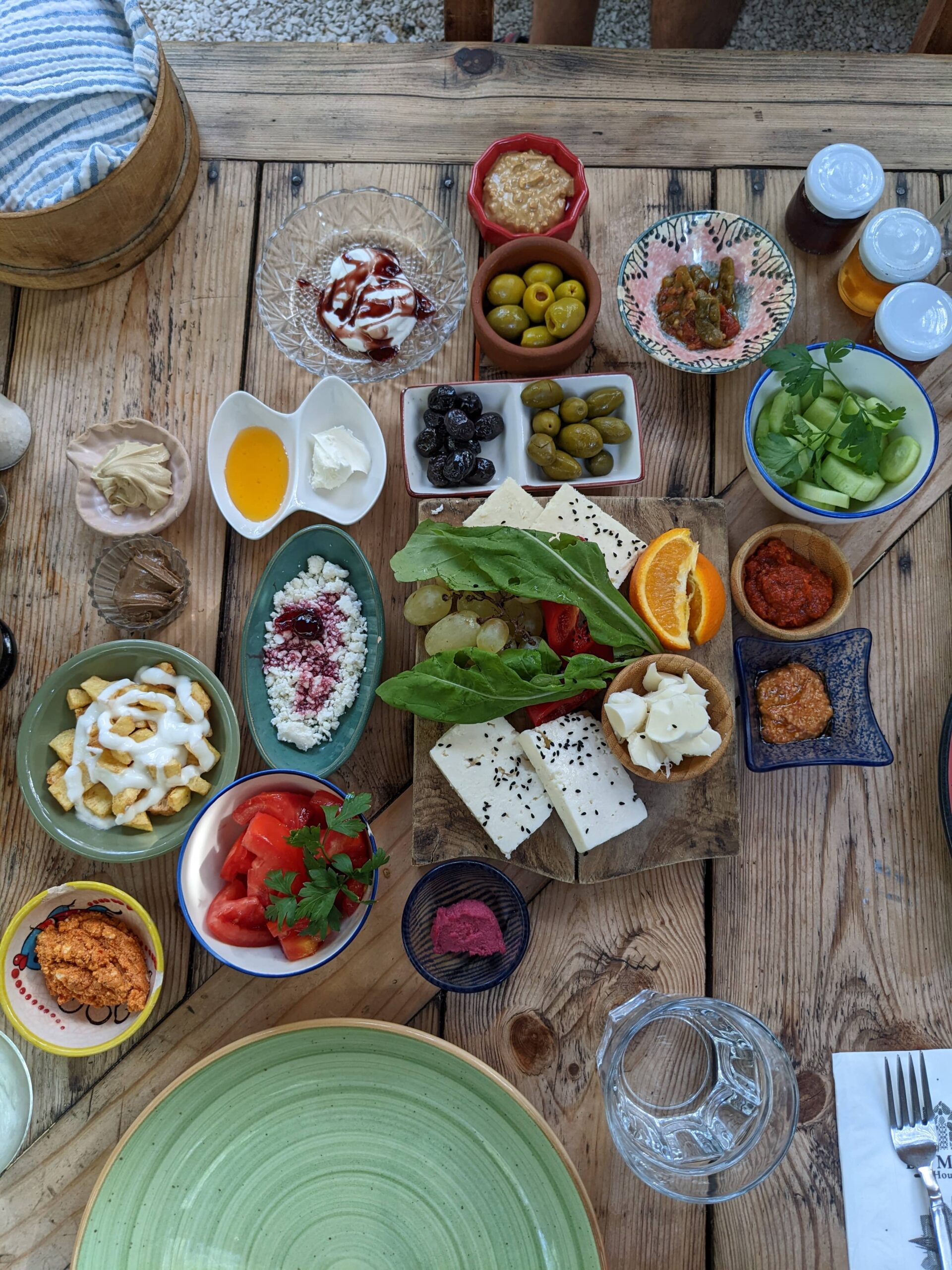
Portafari in Istanbul
I wouldn’t put this one in the traditional category because it comes with chips, but aside from that, this breakfast was beautiful. You’ll get a huge selection of sweet spreads – jams, Nutella, hazelnut spread; as well as sigara borek and unlimited tea alongside the other elements.
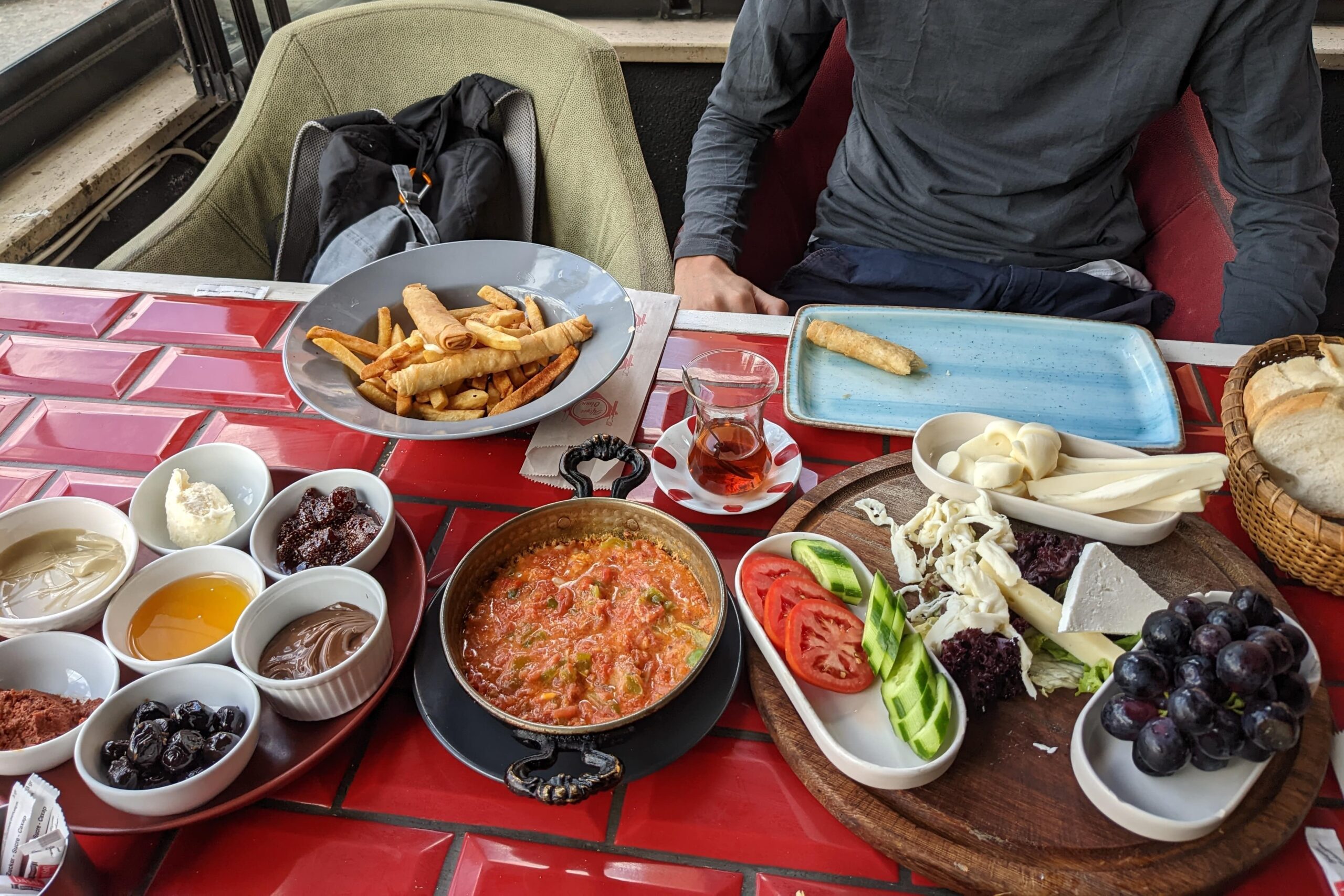
Cakmak Kahvaltı Salonu on Breakfast Street in Beşiktaş, Istanbul
Yes, there is a street full of eateries specialising in breakfast. Cakmak was the one we went for. There were less elements than what we were used to, but everything was really tasty and they provide unlimited tea.

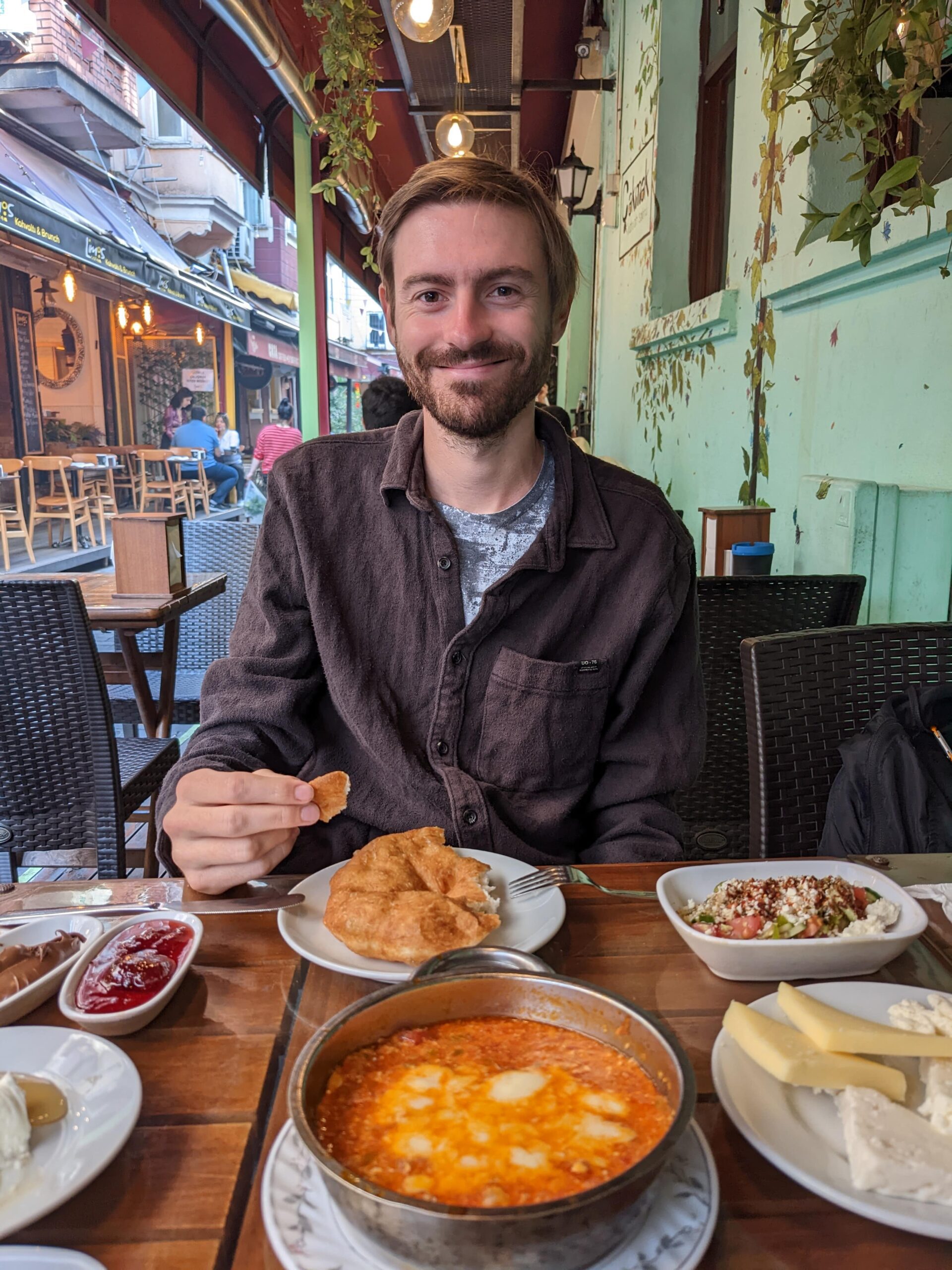
Mardin Galatist Kafe & Kahvaltı in Mardin
This place has a phenomenal view over the plains of Ancient Mesopotamia (it’s actually the picture we use for our main image on our home page). The spread included most of the main elements and also came with a cold fried potato dish, creamy vegetable spreads and unlimited tea.
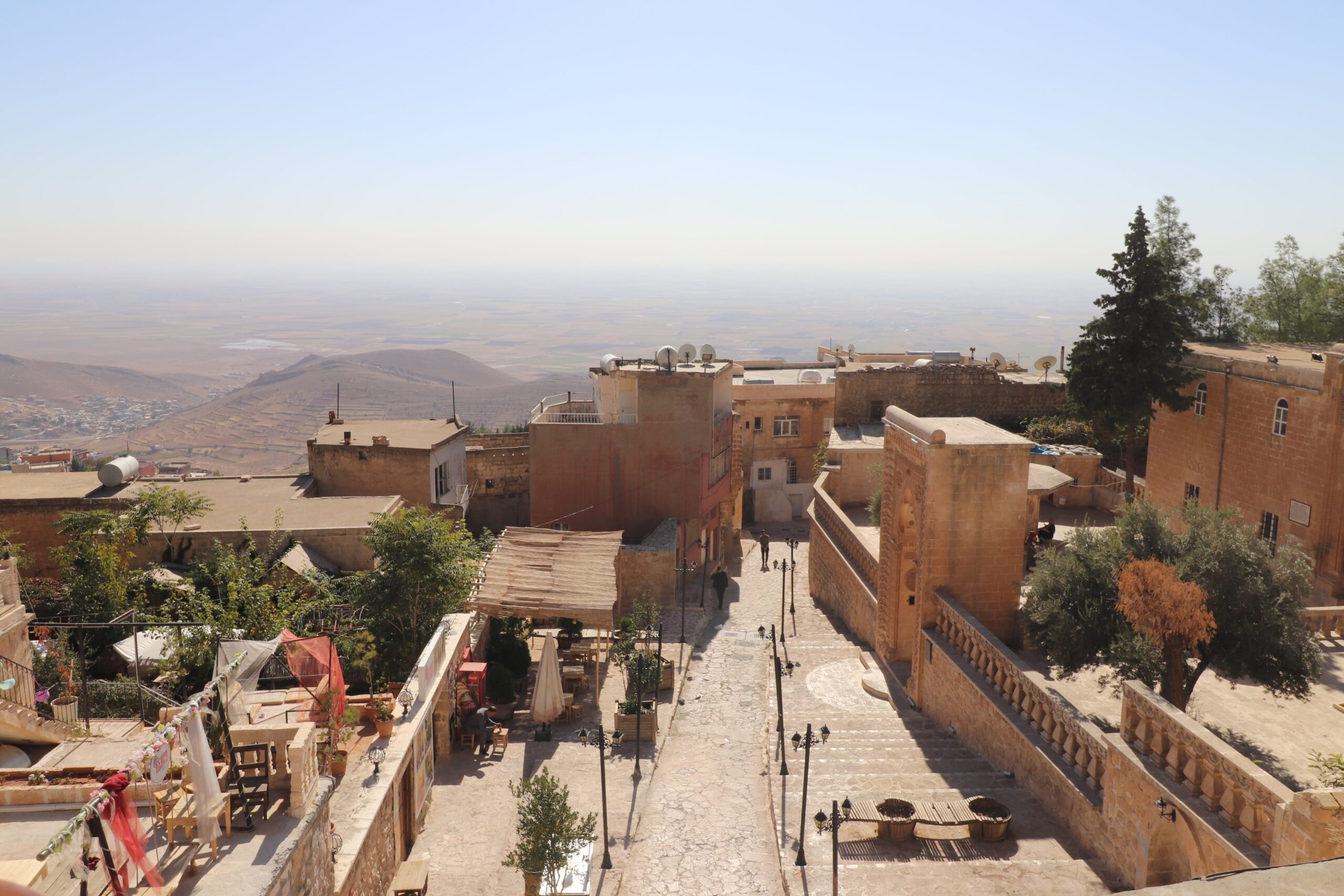
Have you tried a traditional serpme kahvaltı before? Where is your favourite place to eat the traditional breakfast?
I’d love to hear your thoughts, recommendations and questions!
Thanks for reading!
Like it? Save it!
